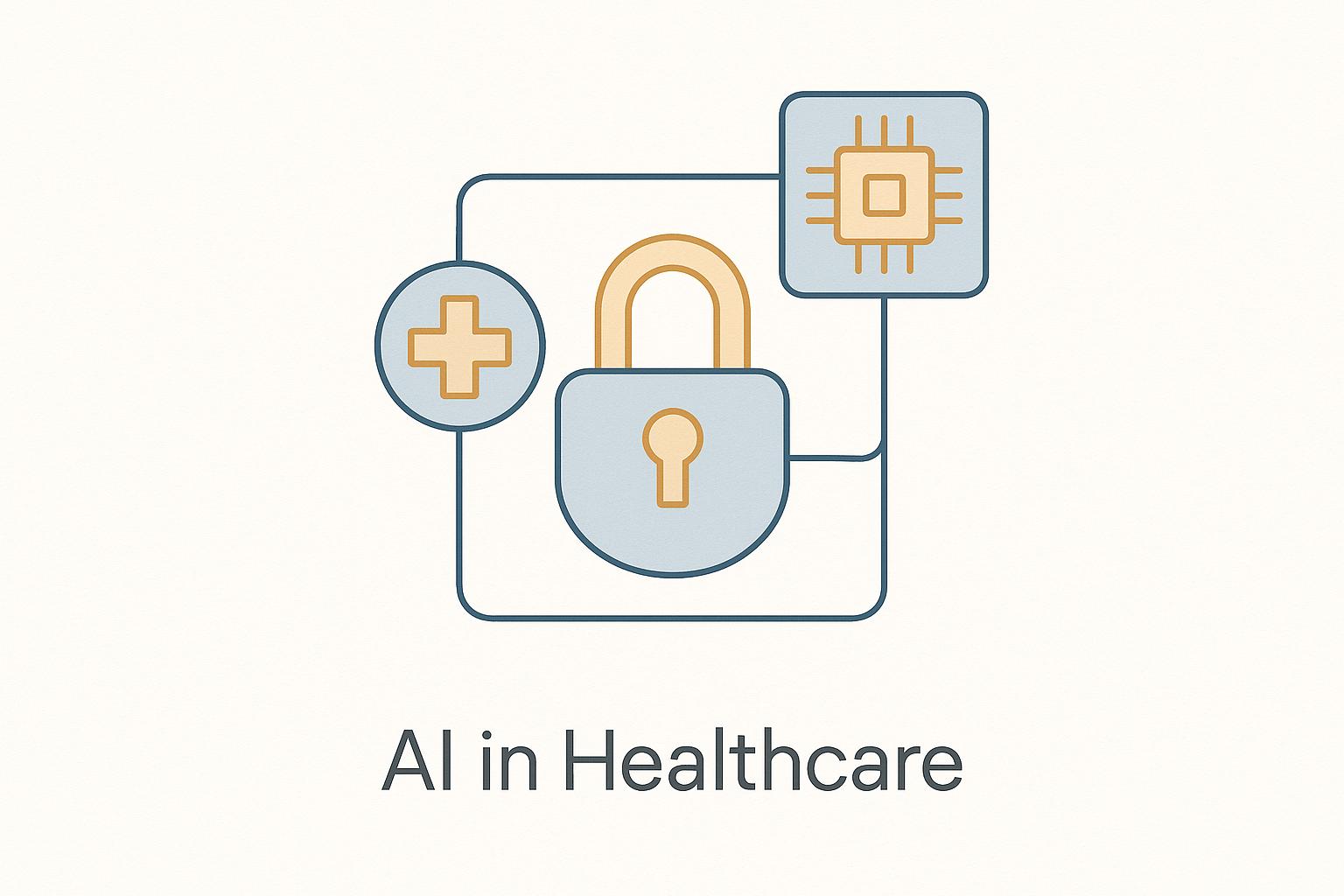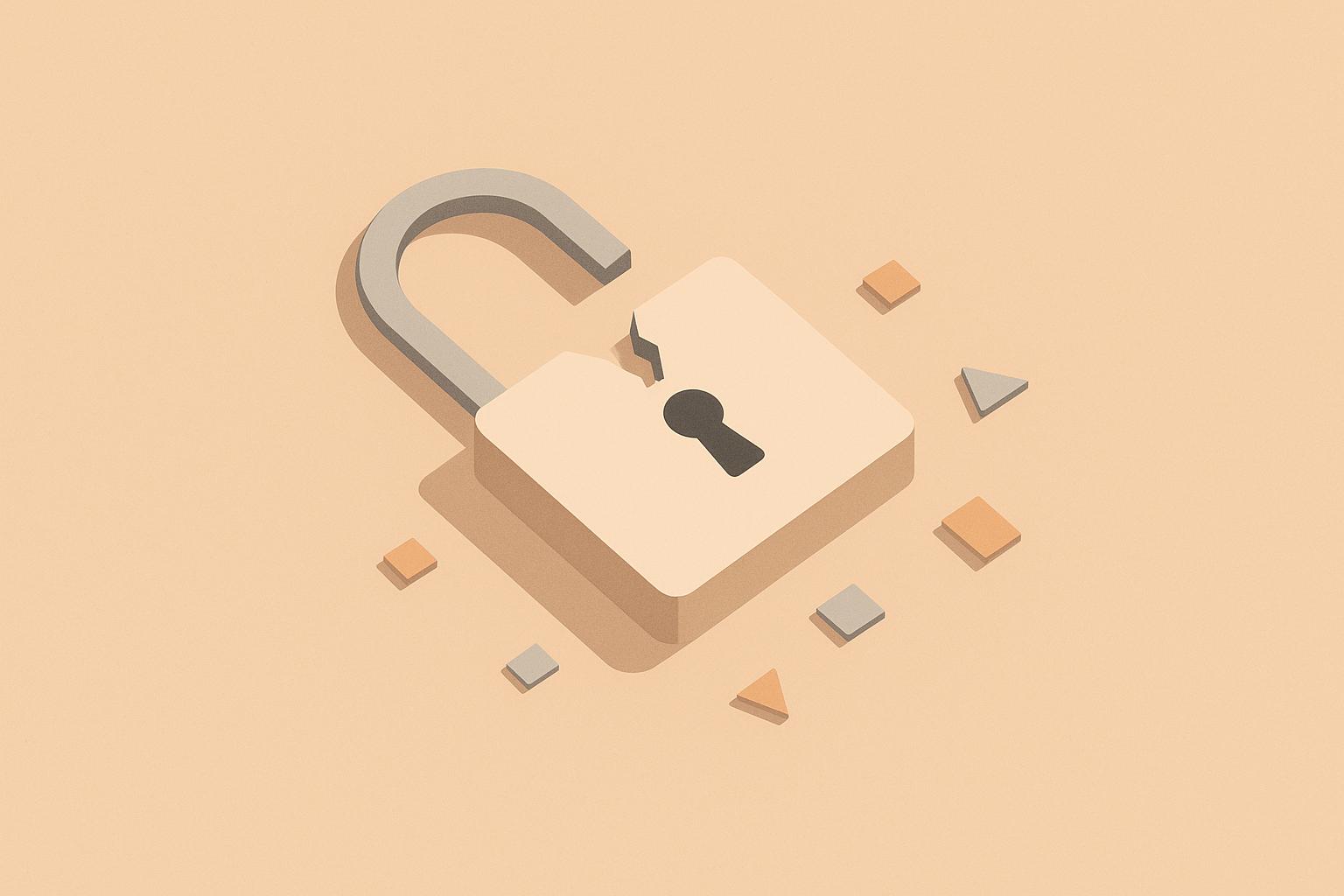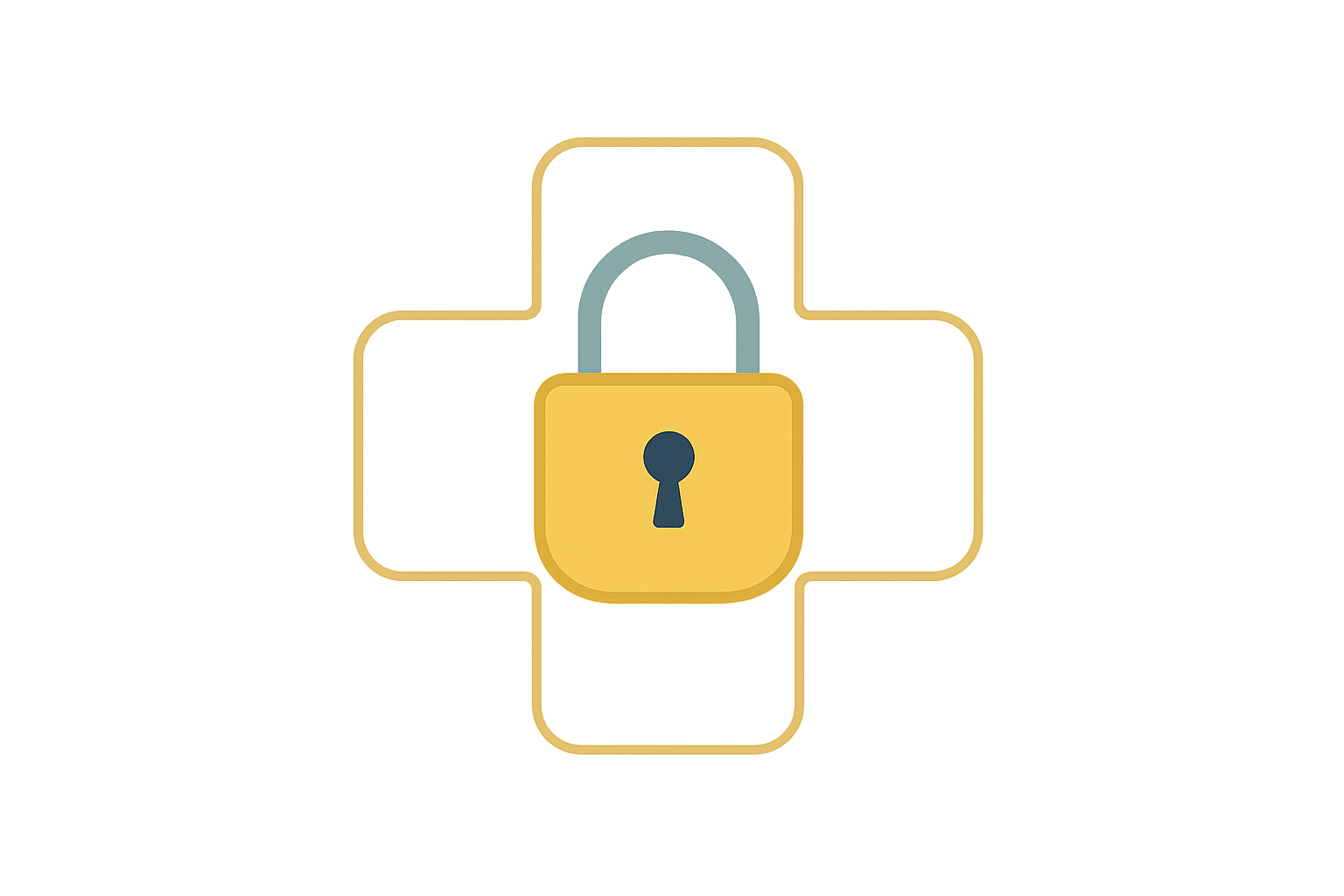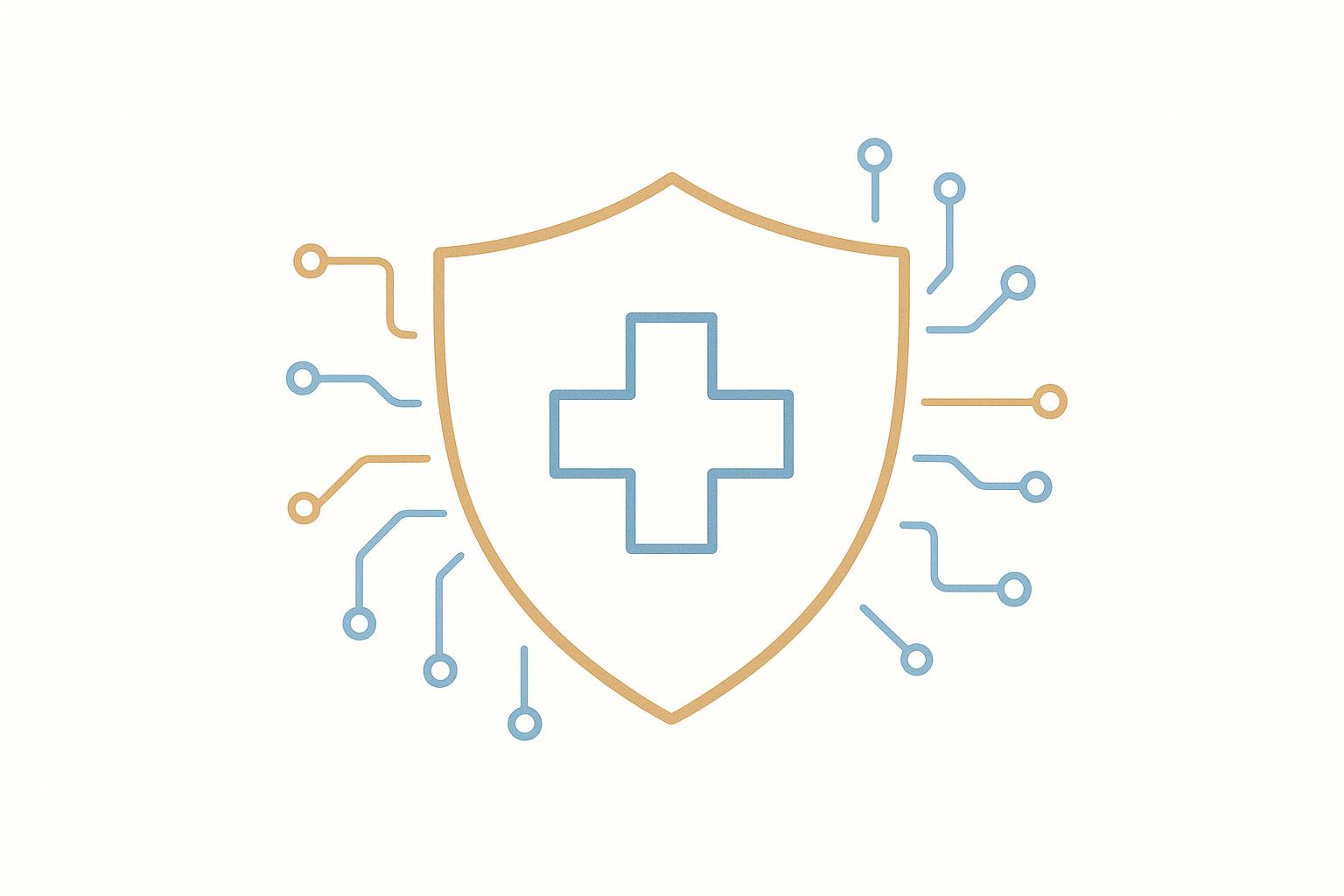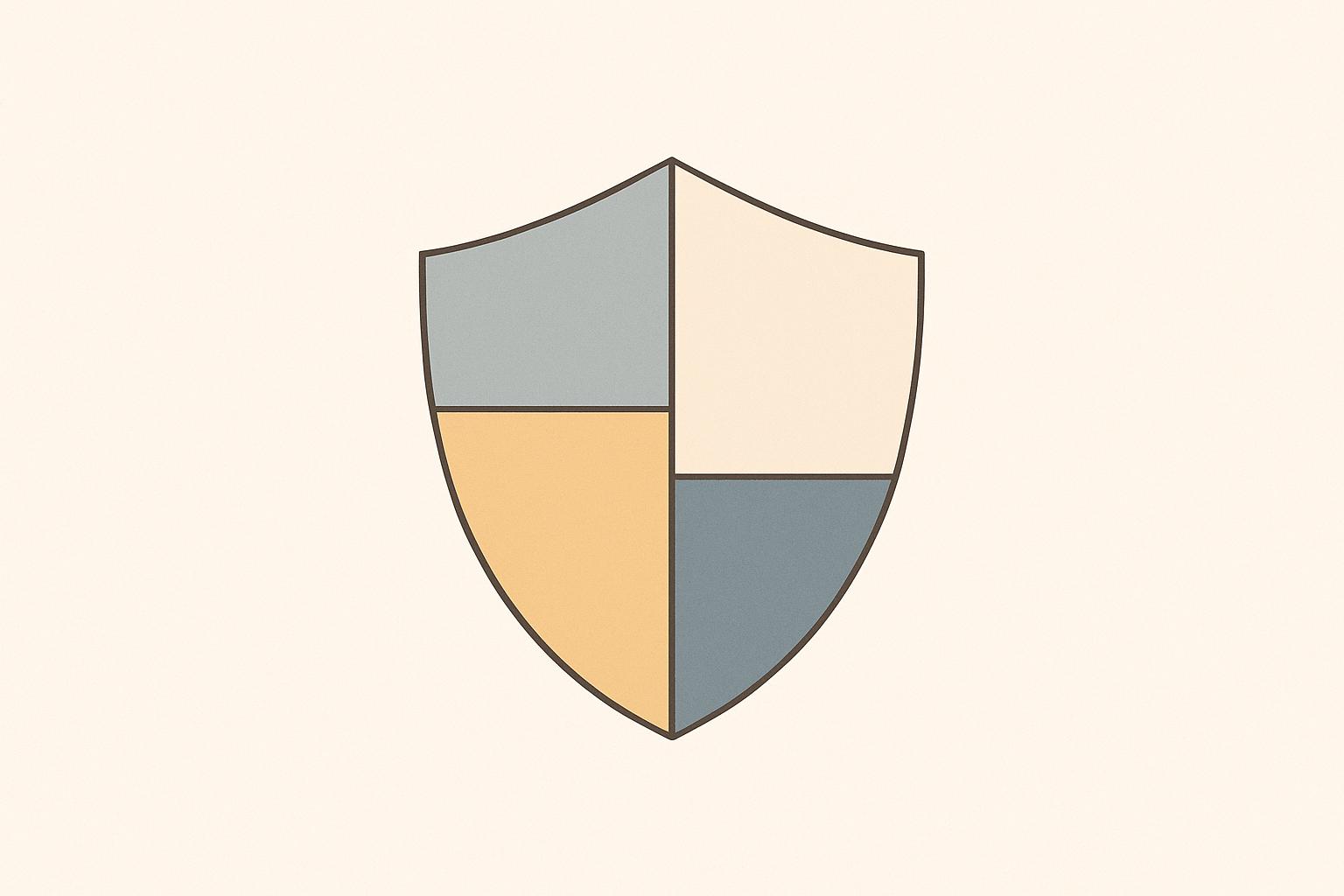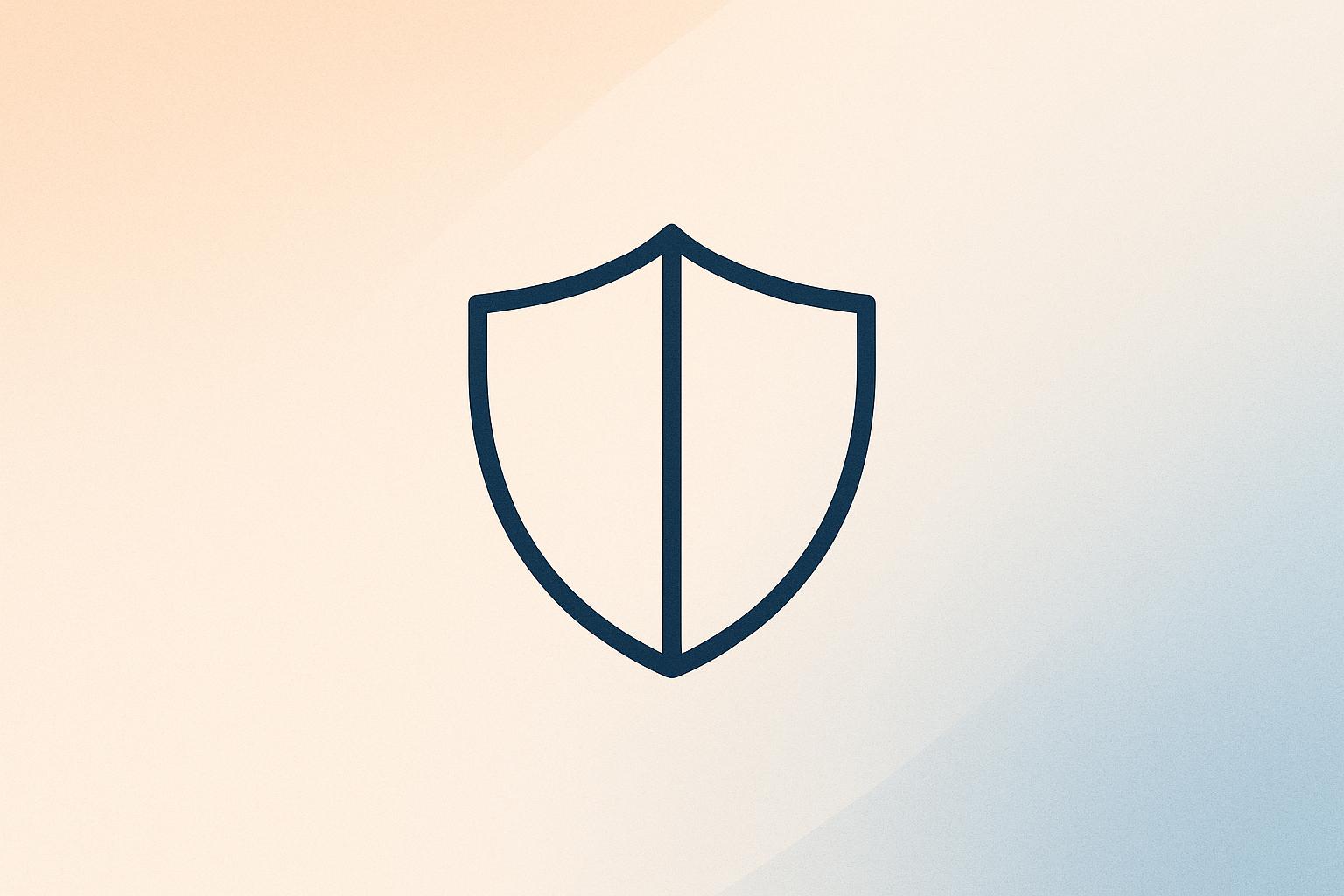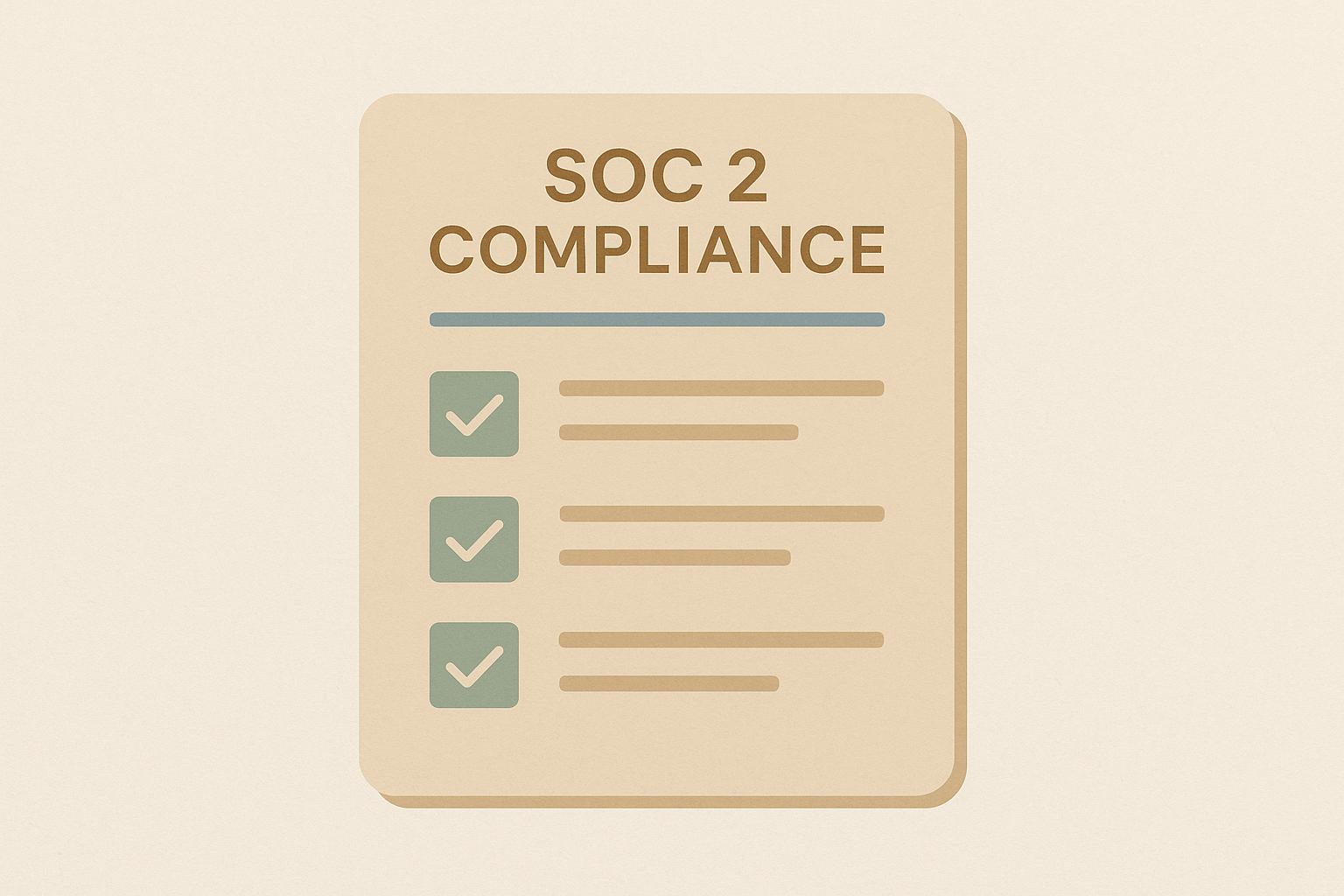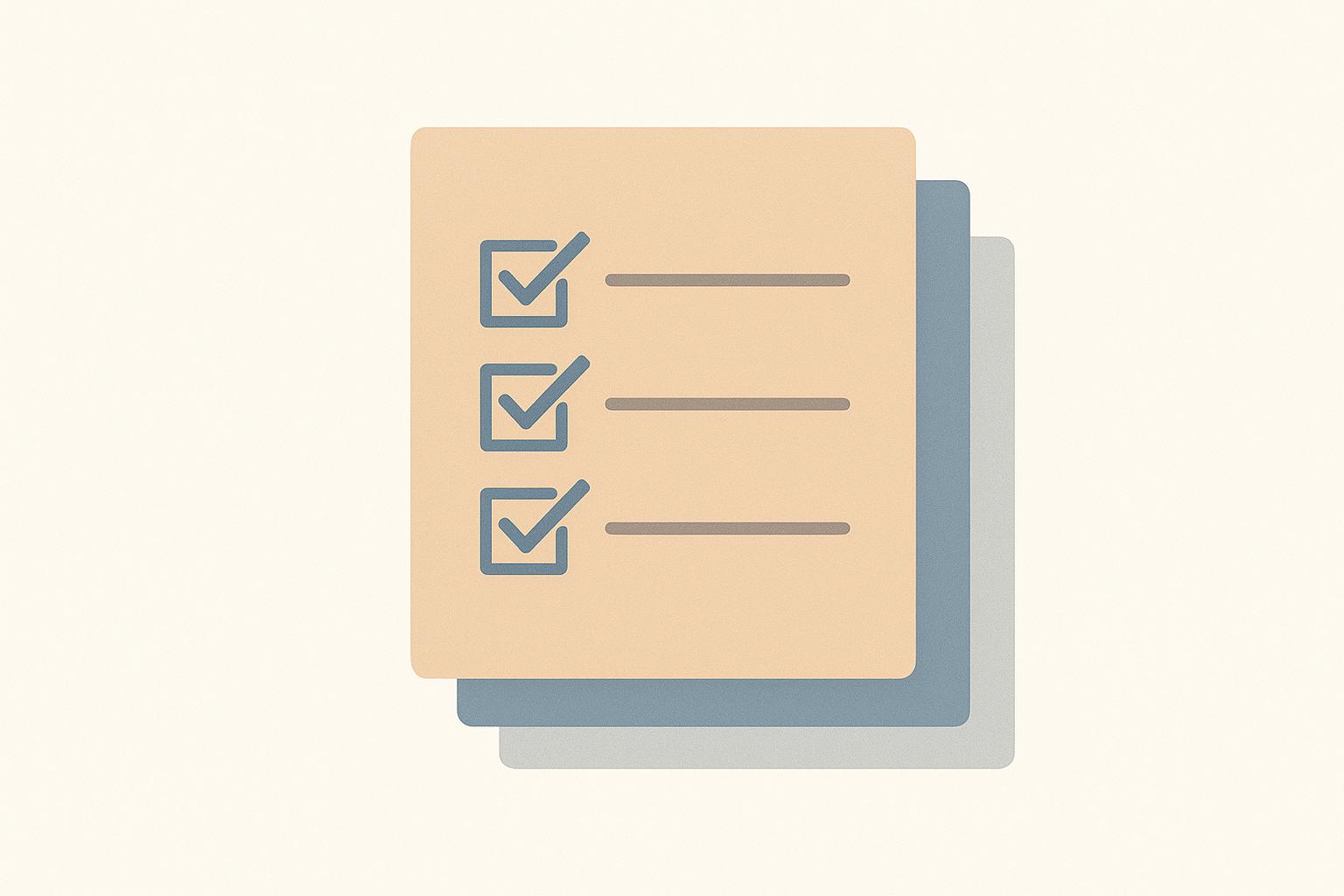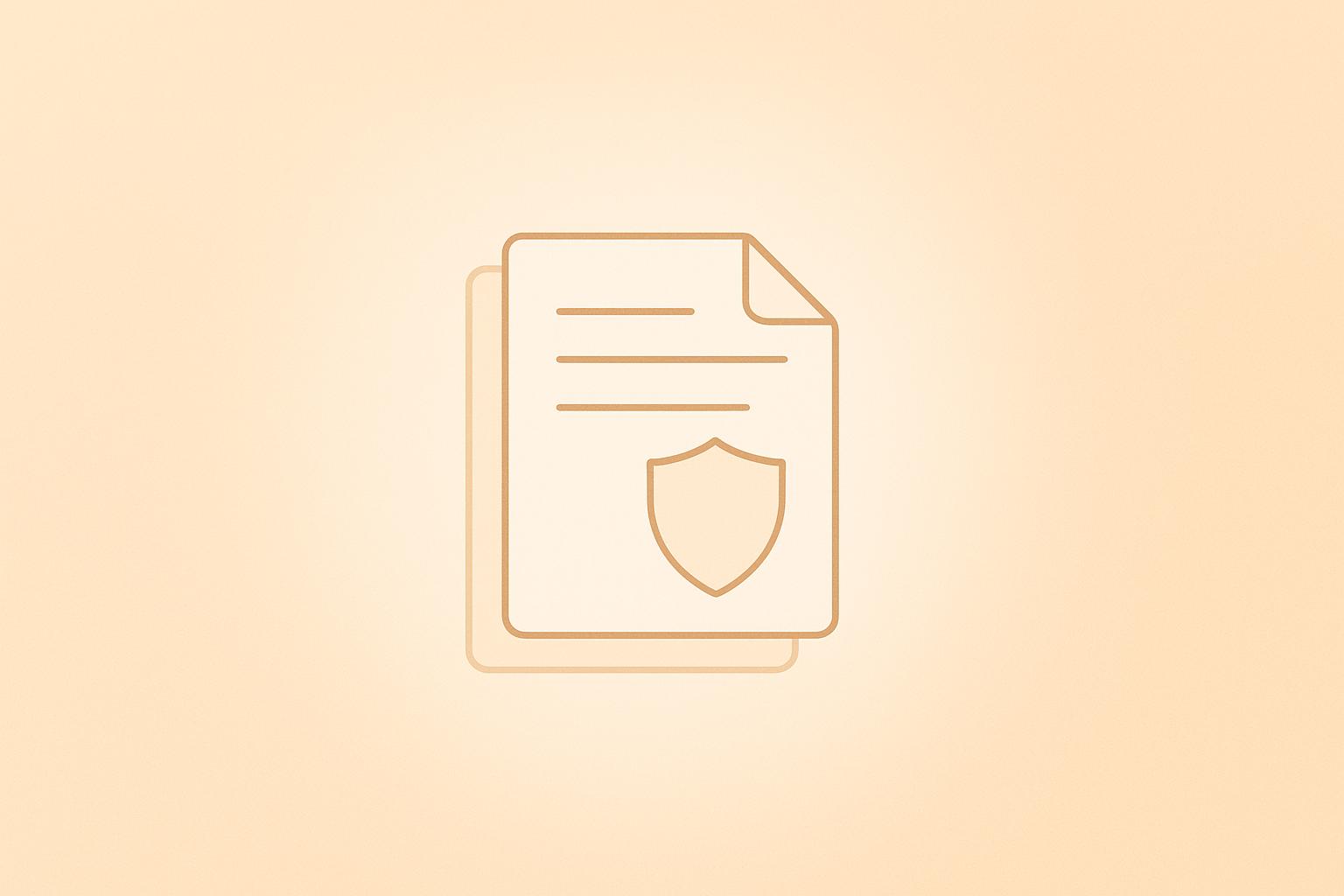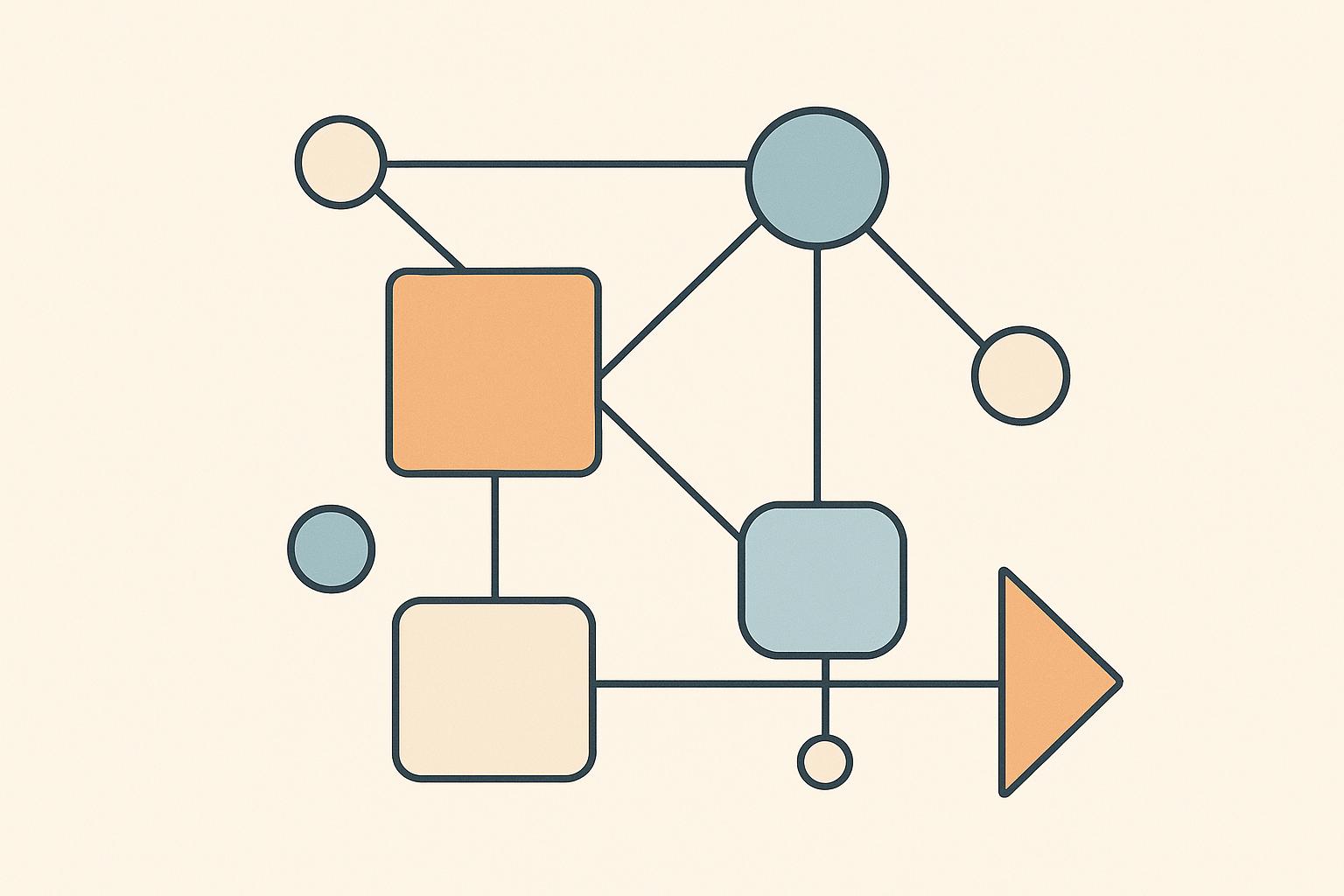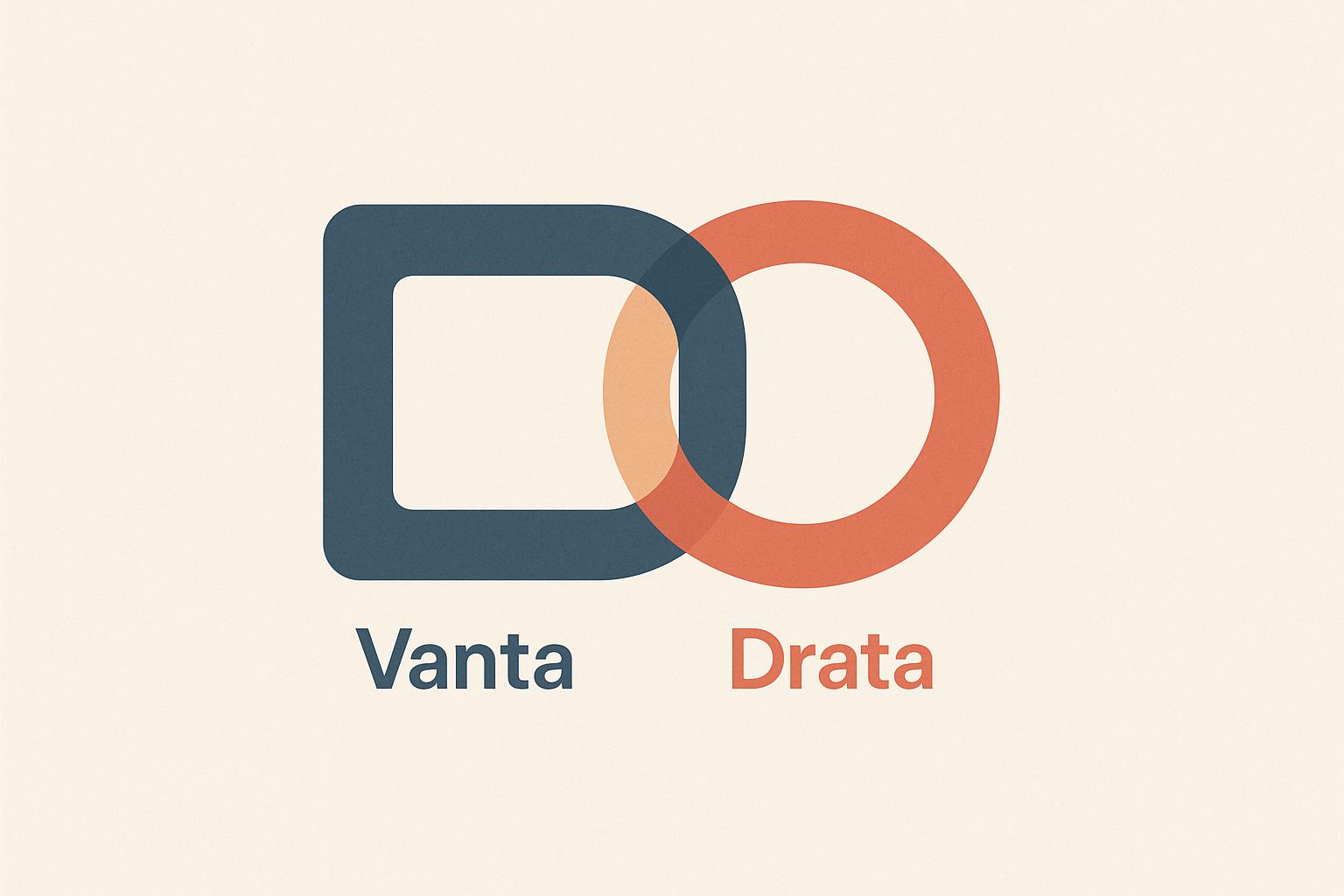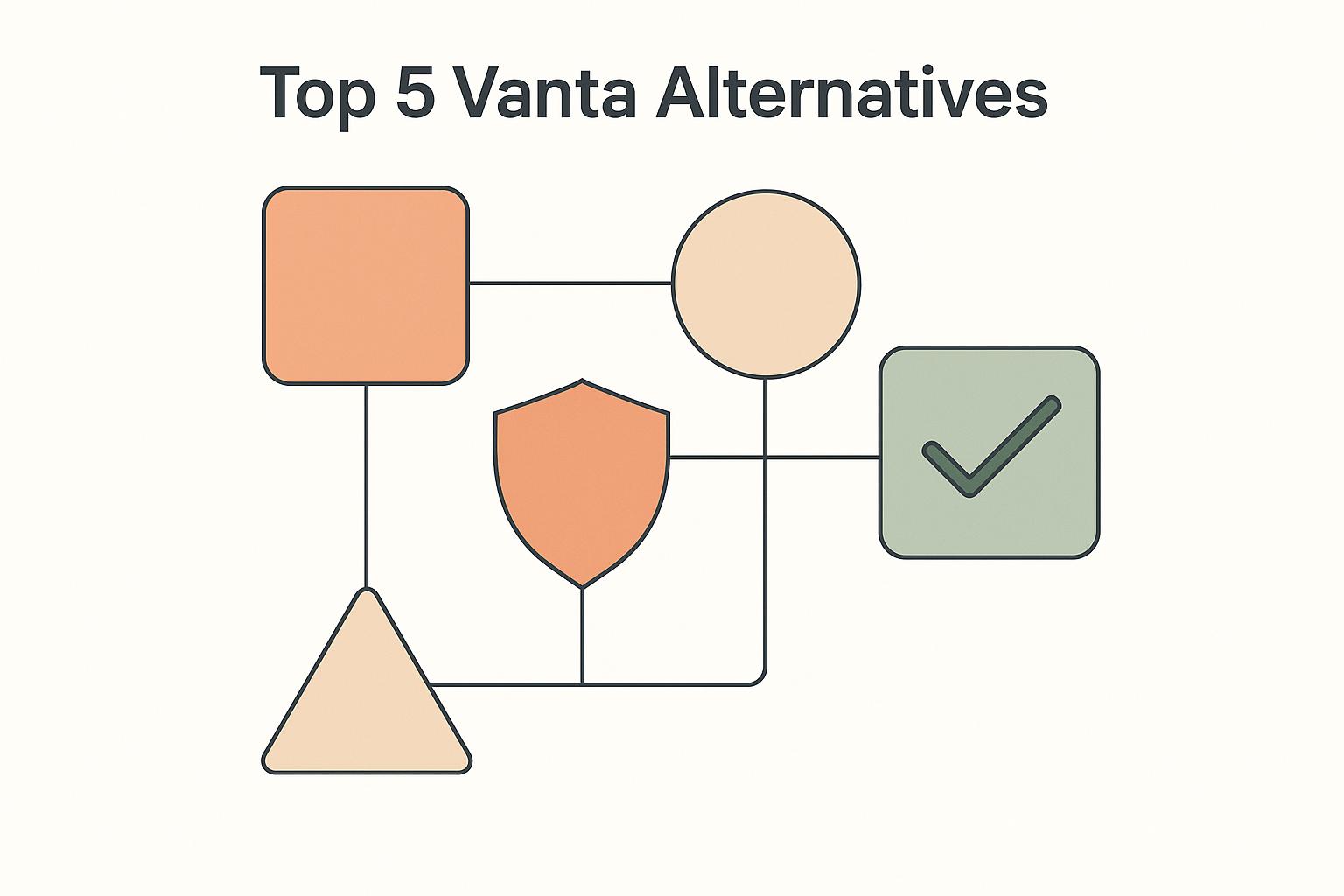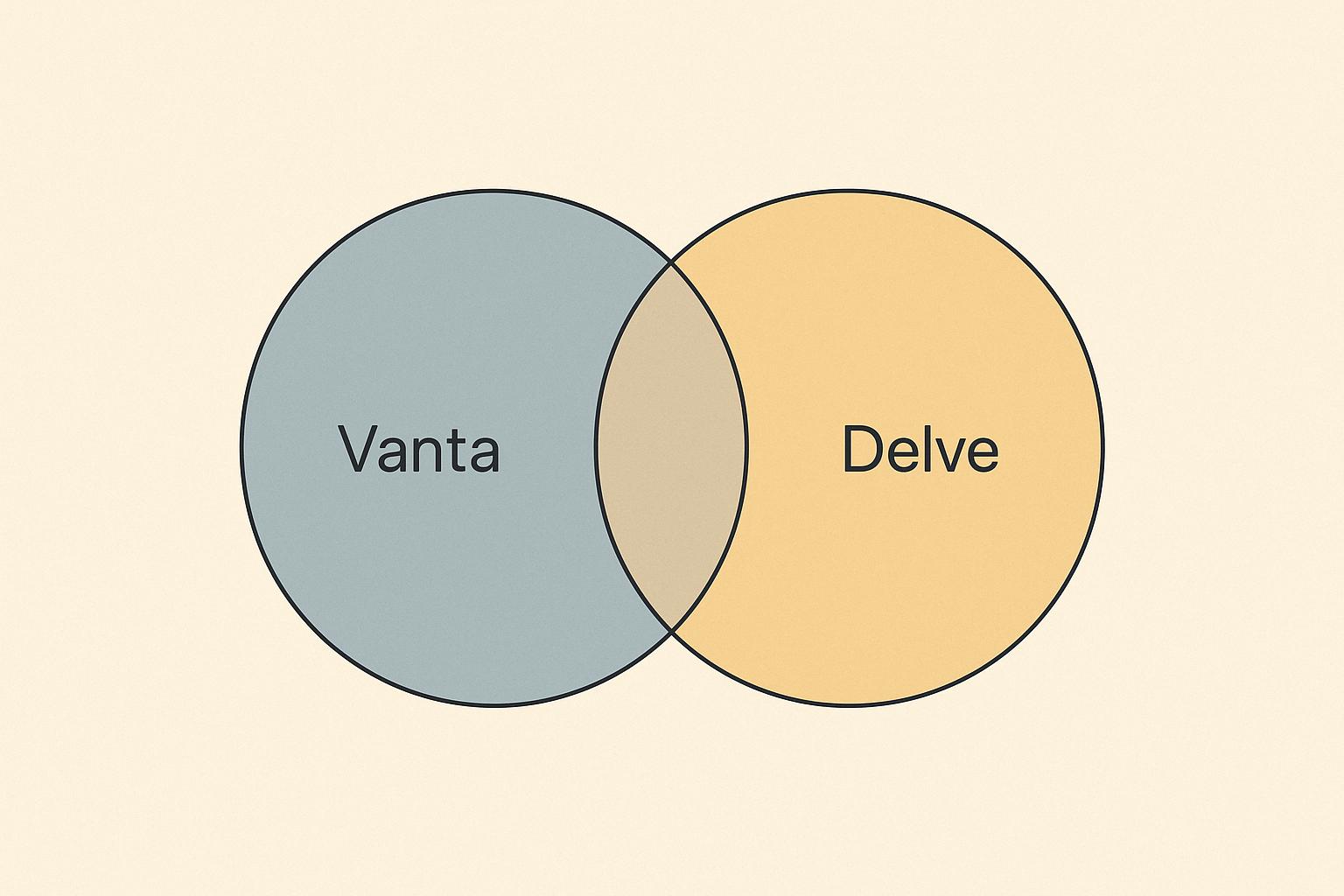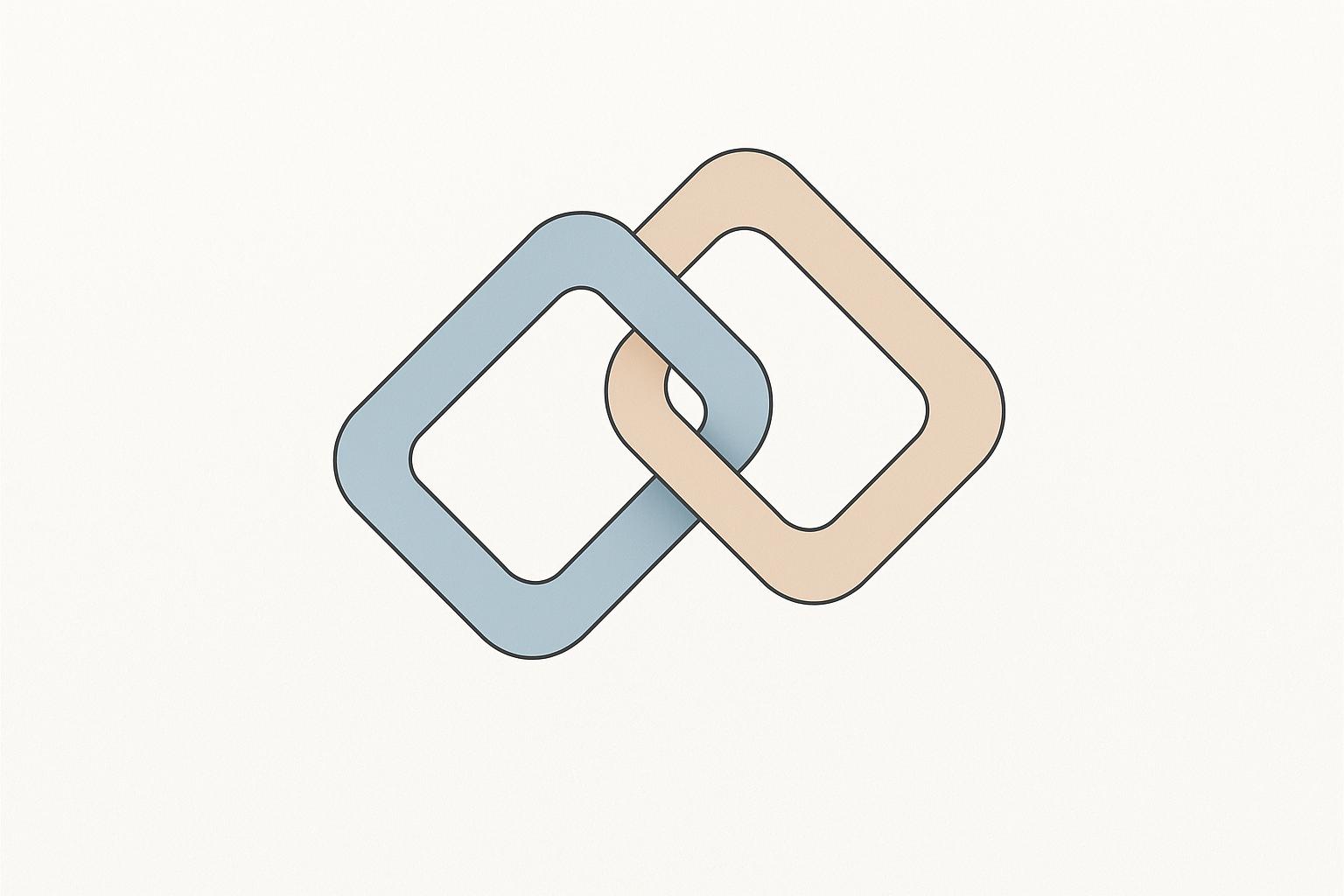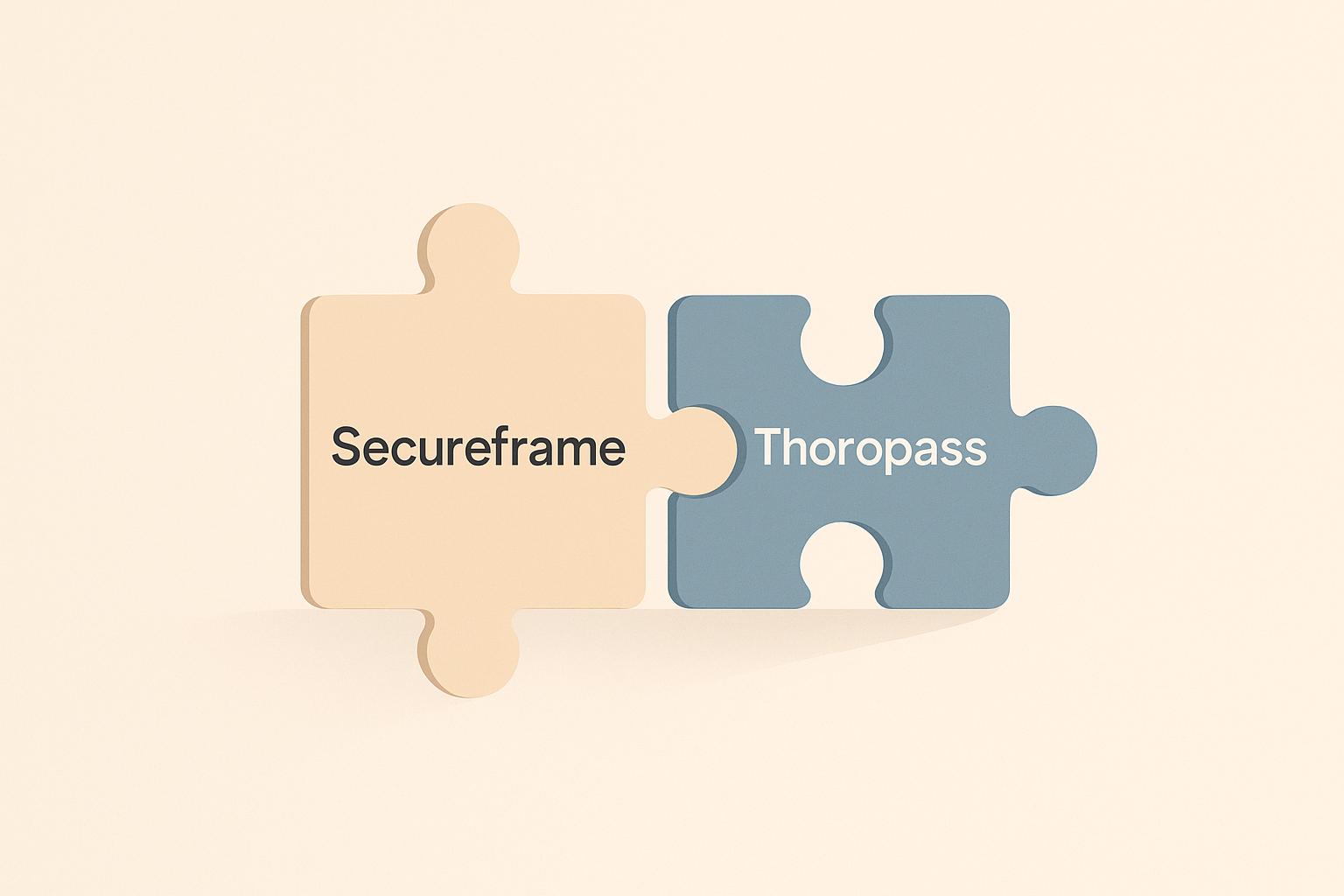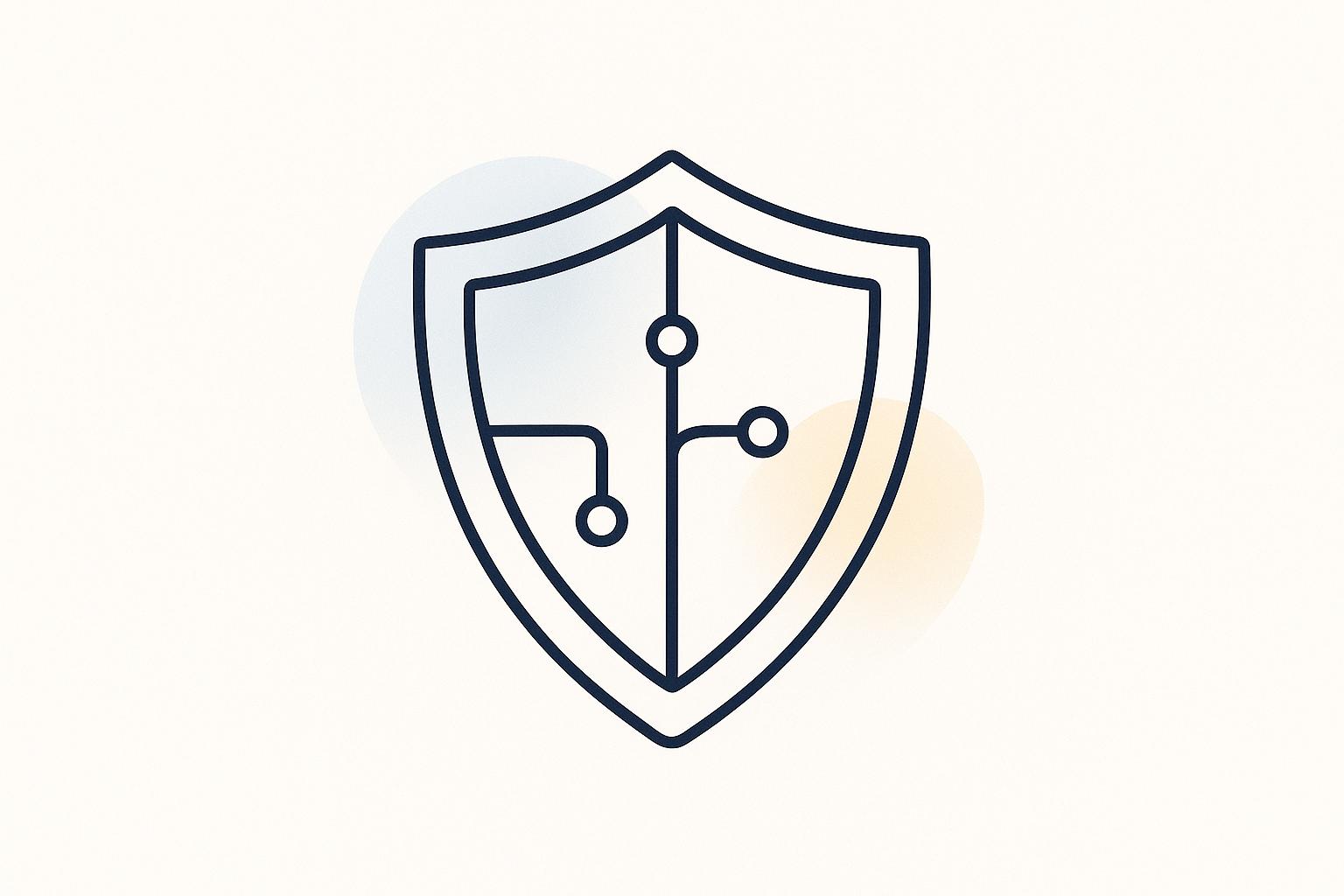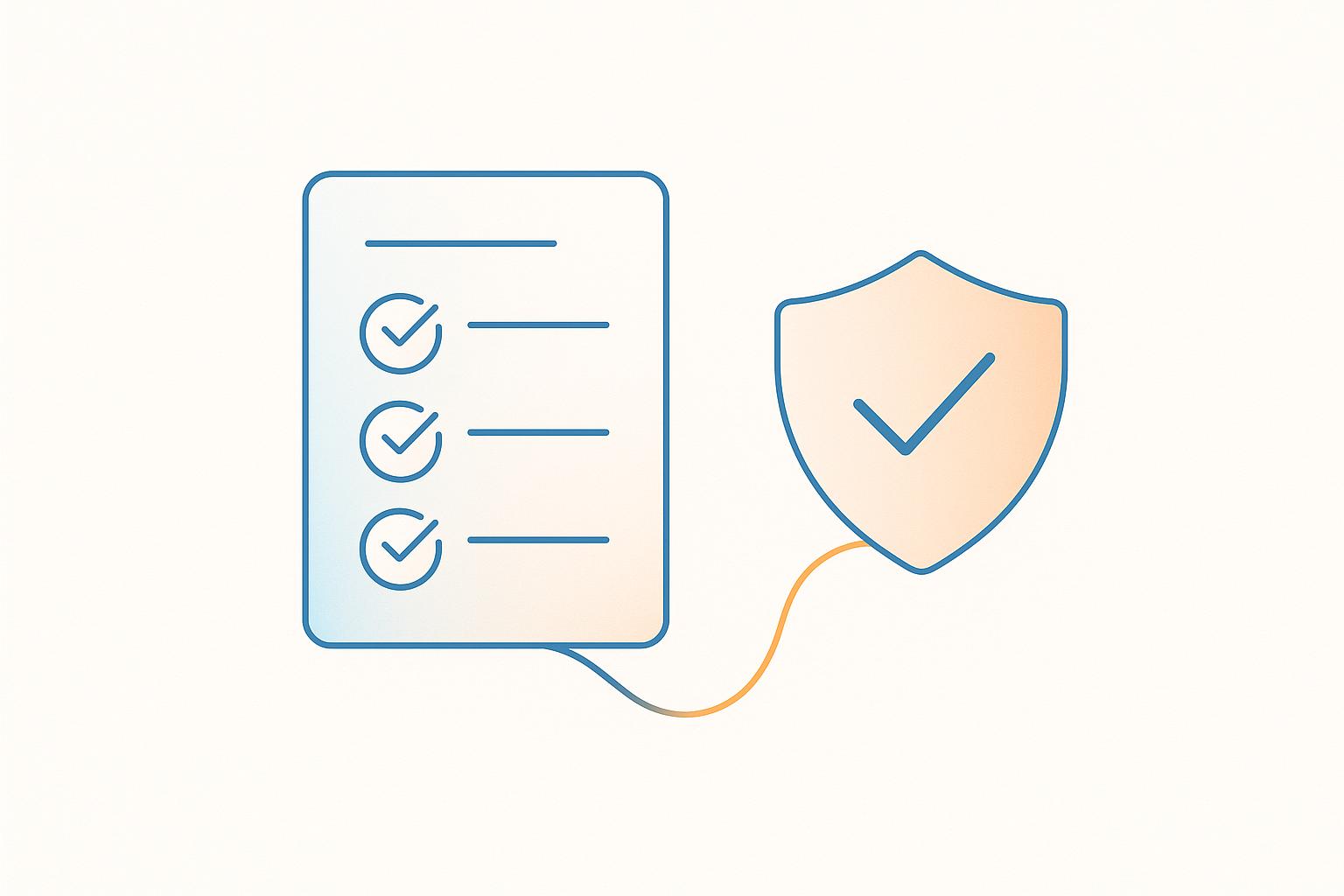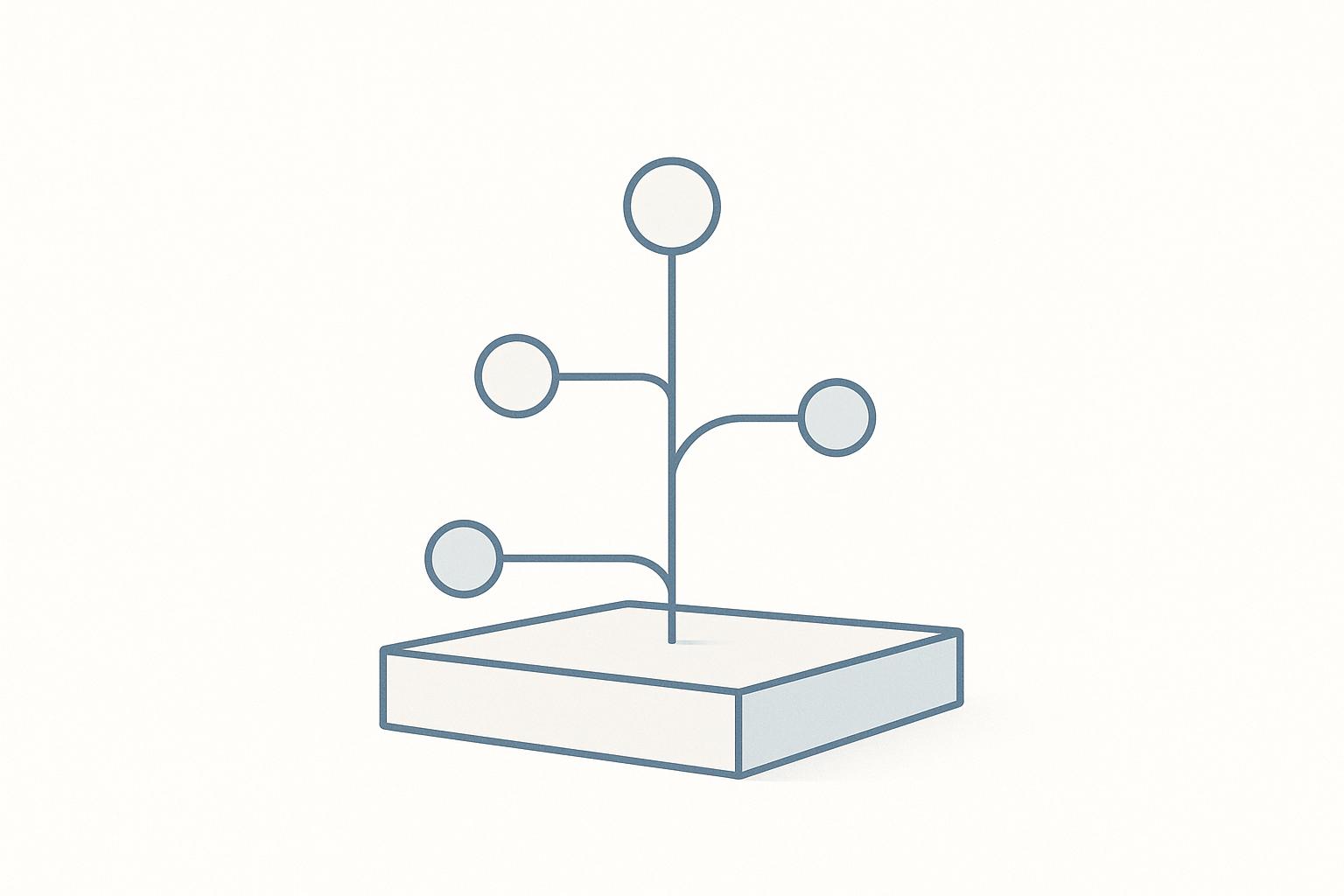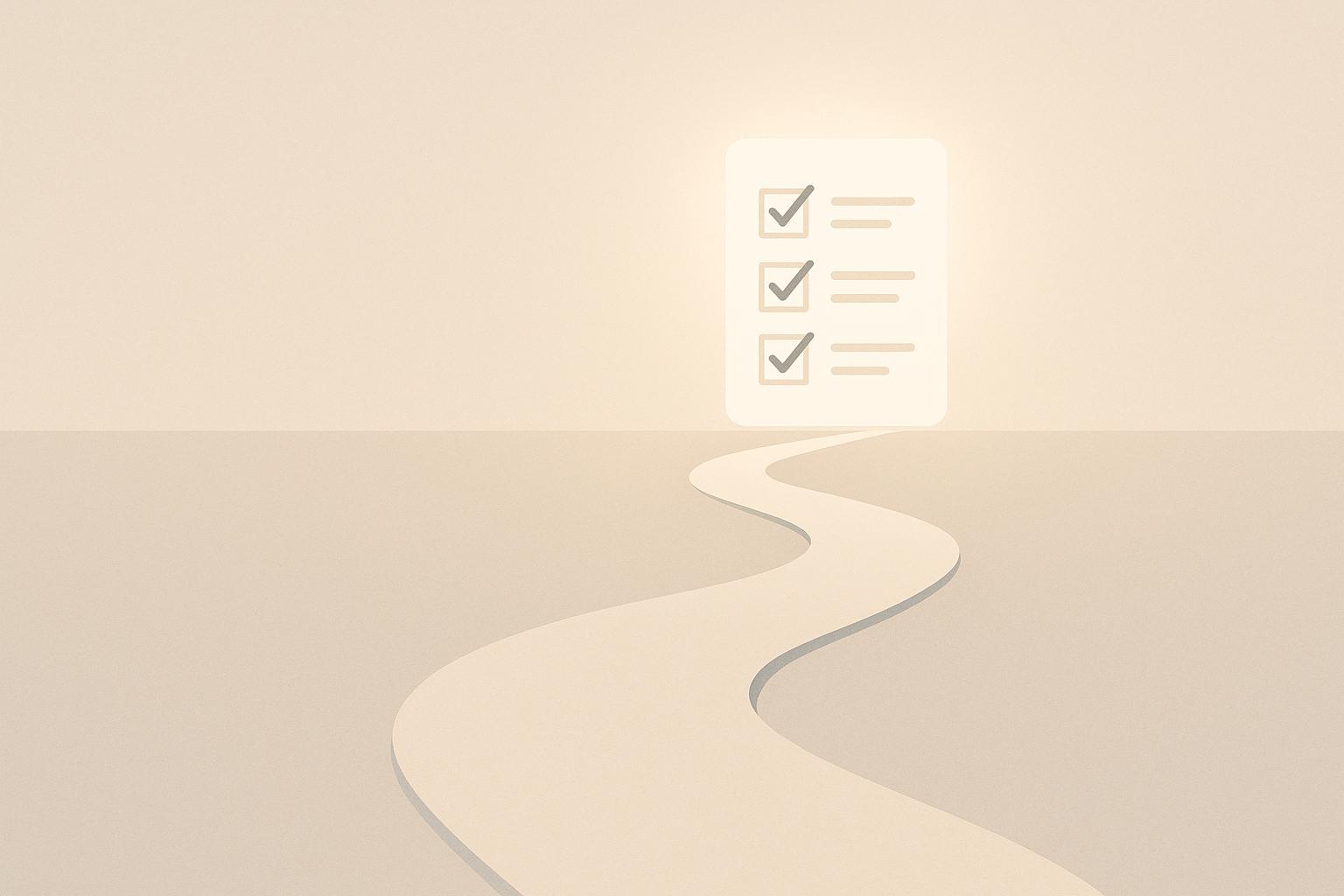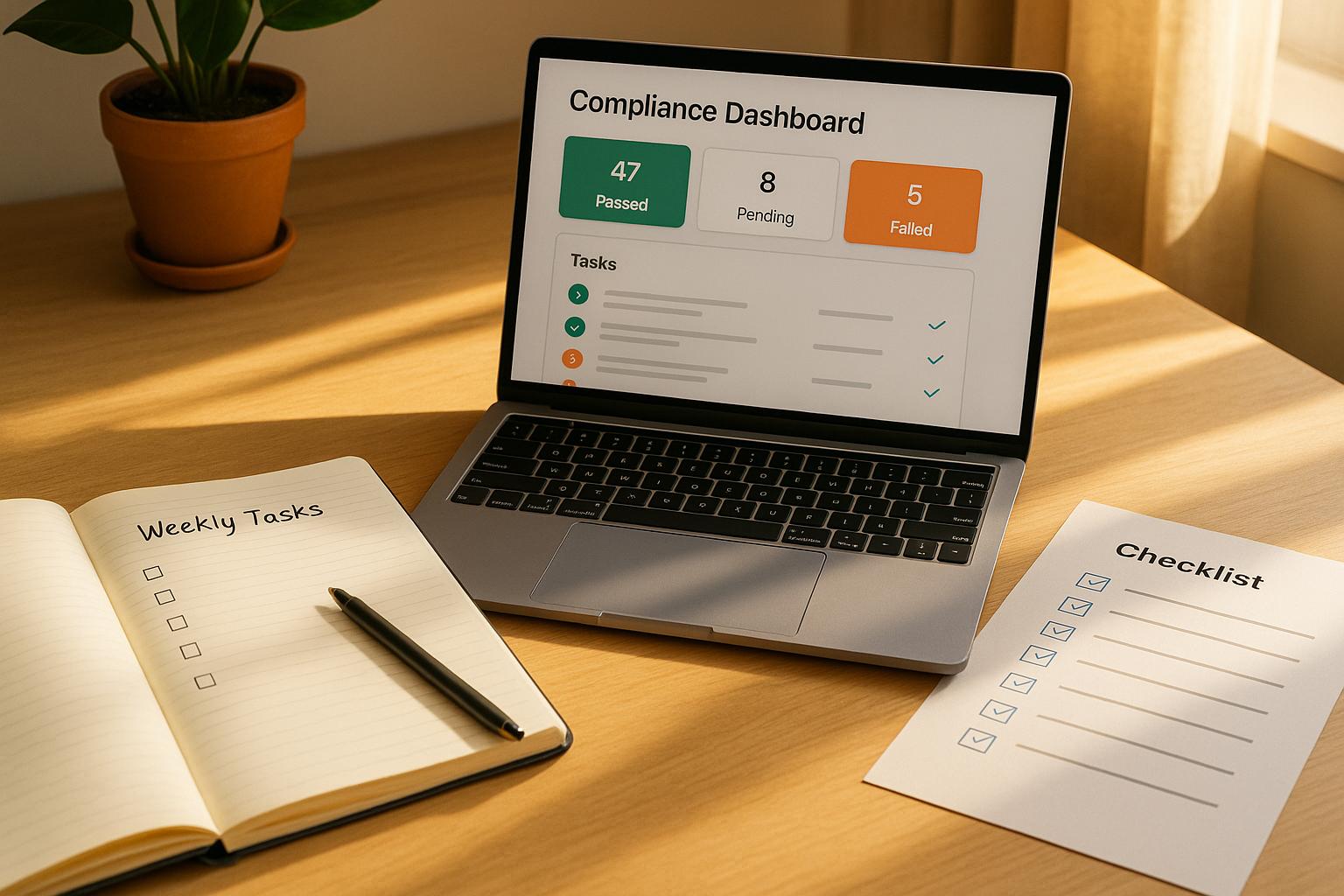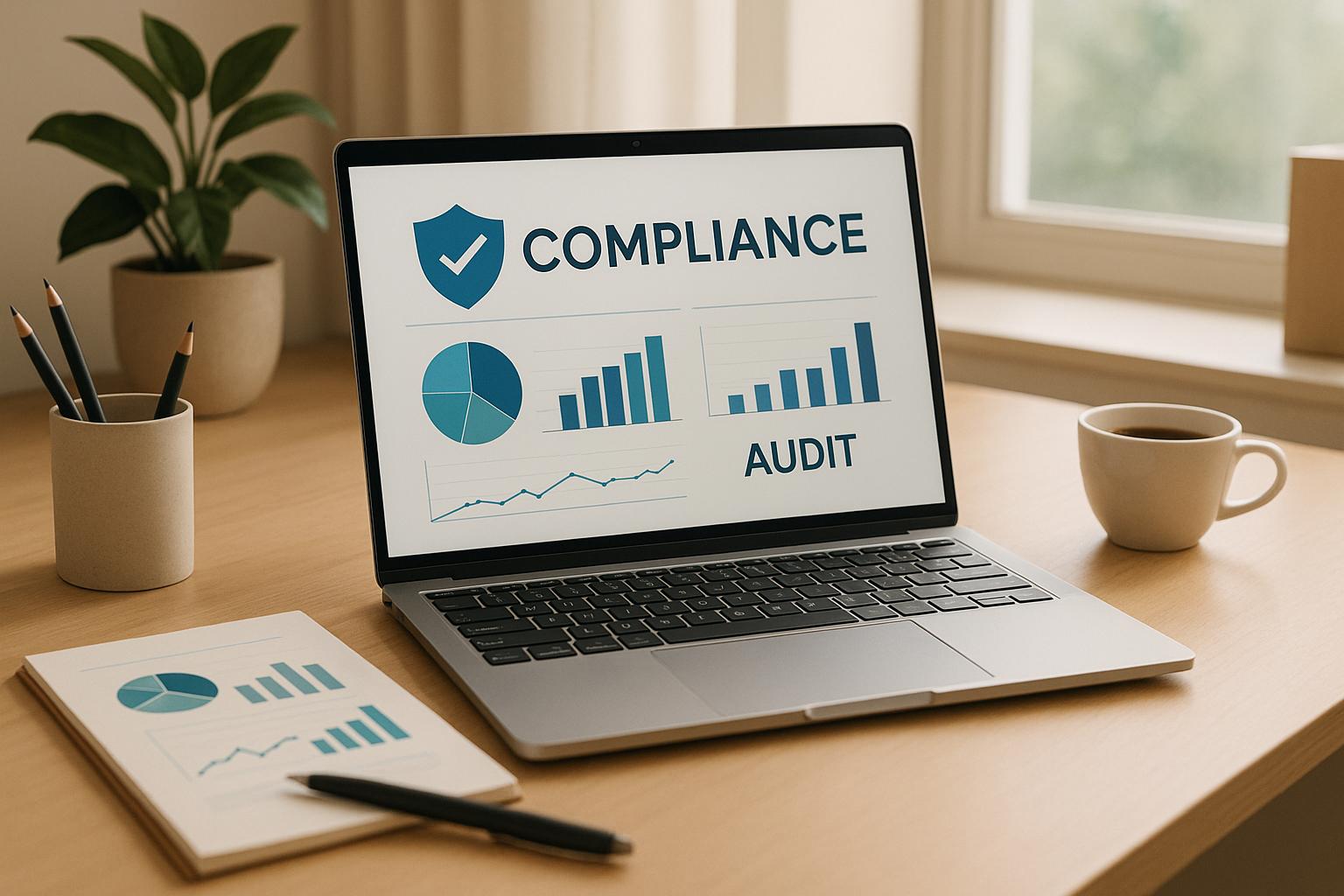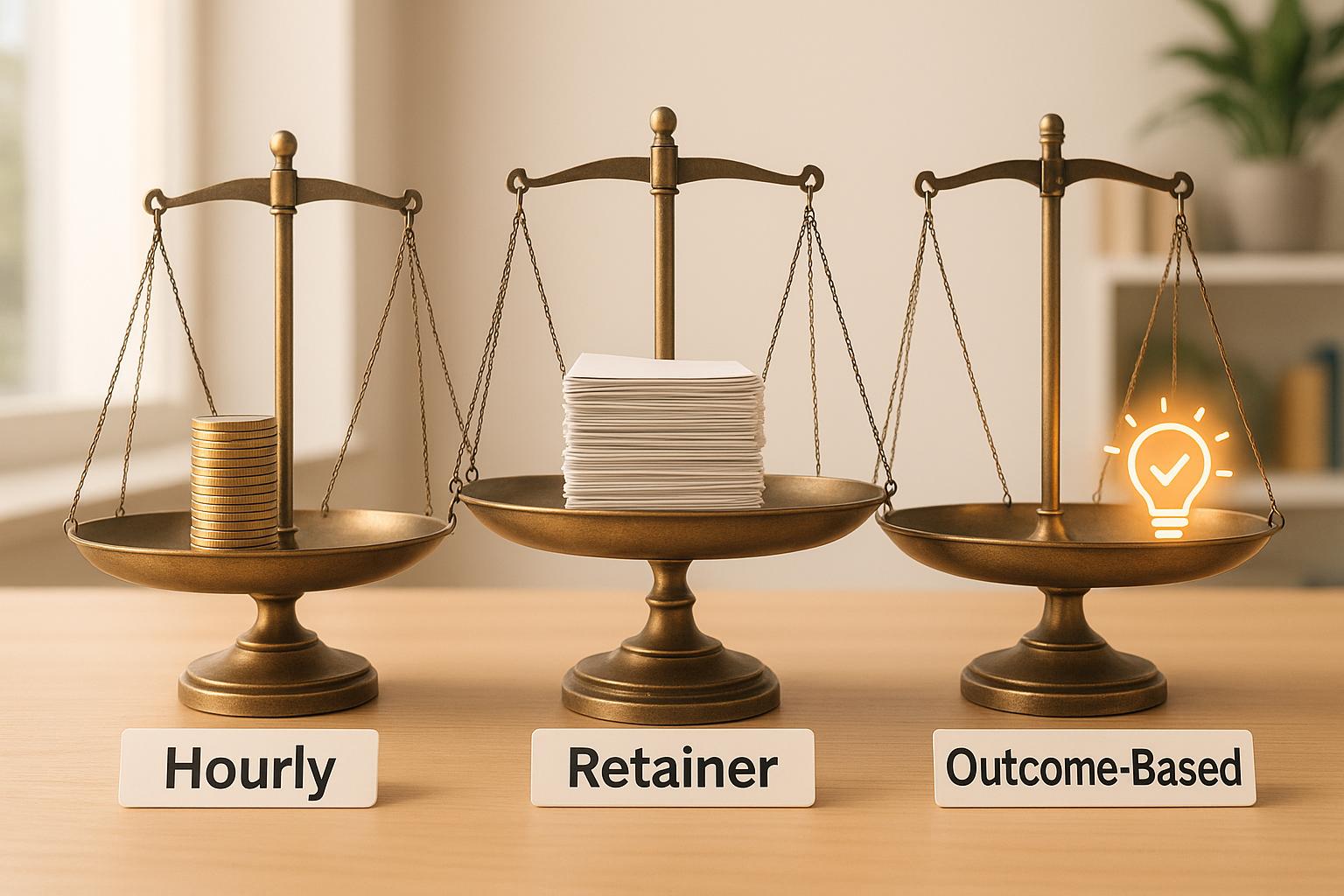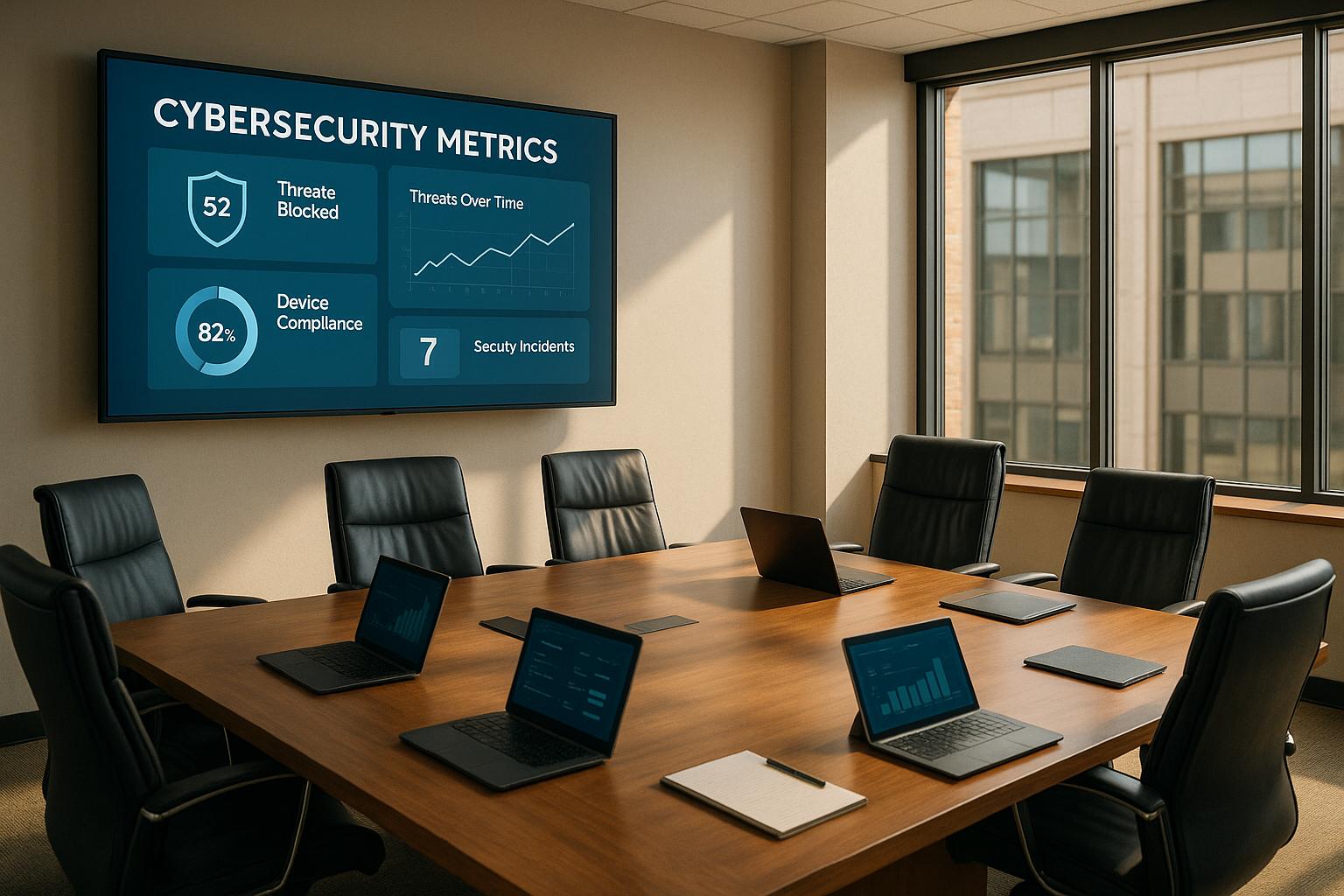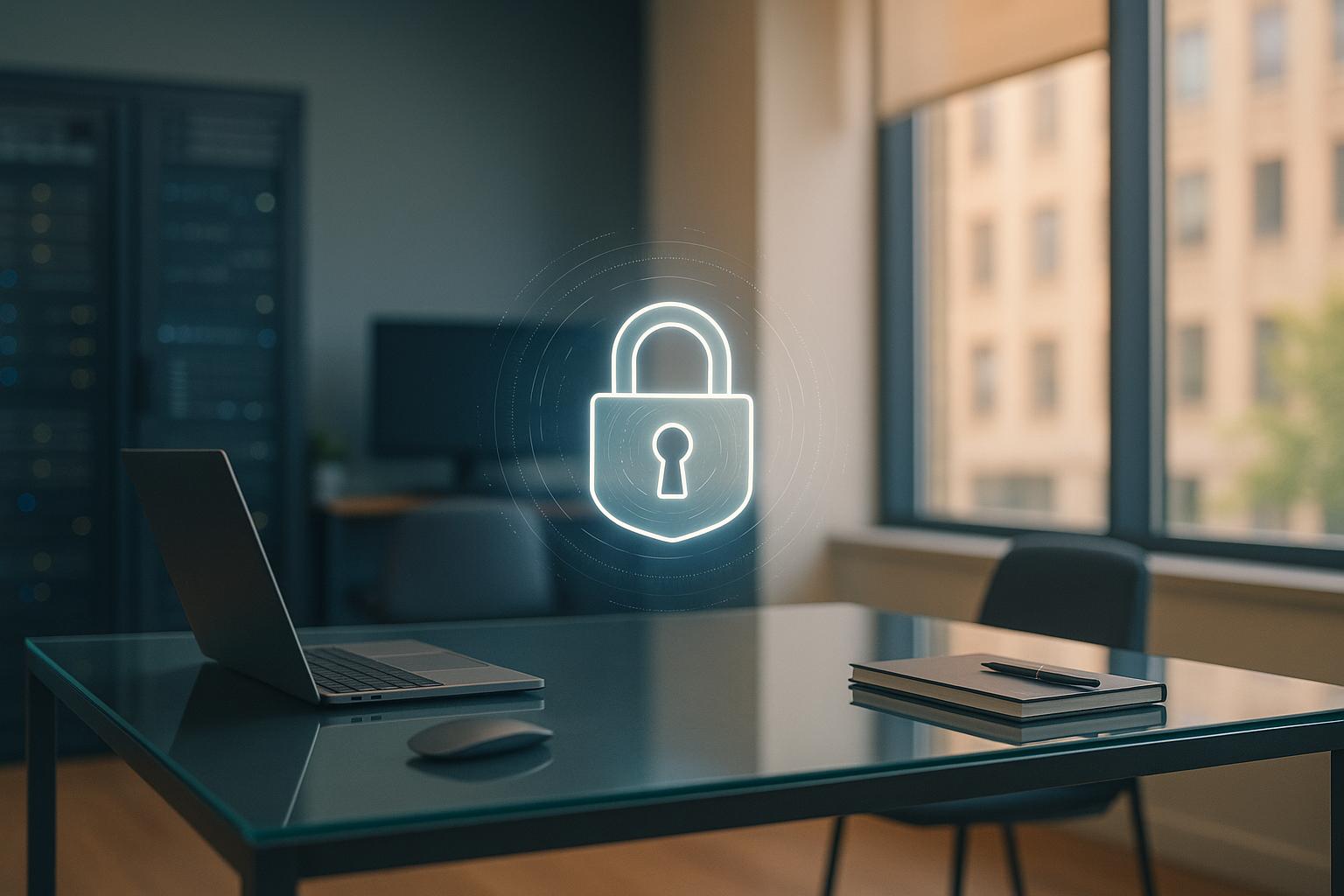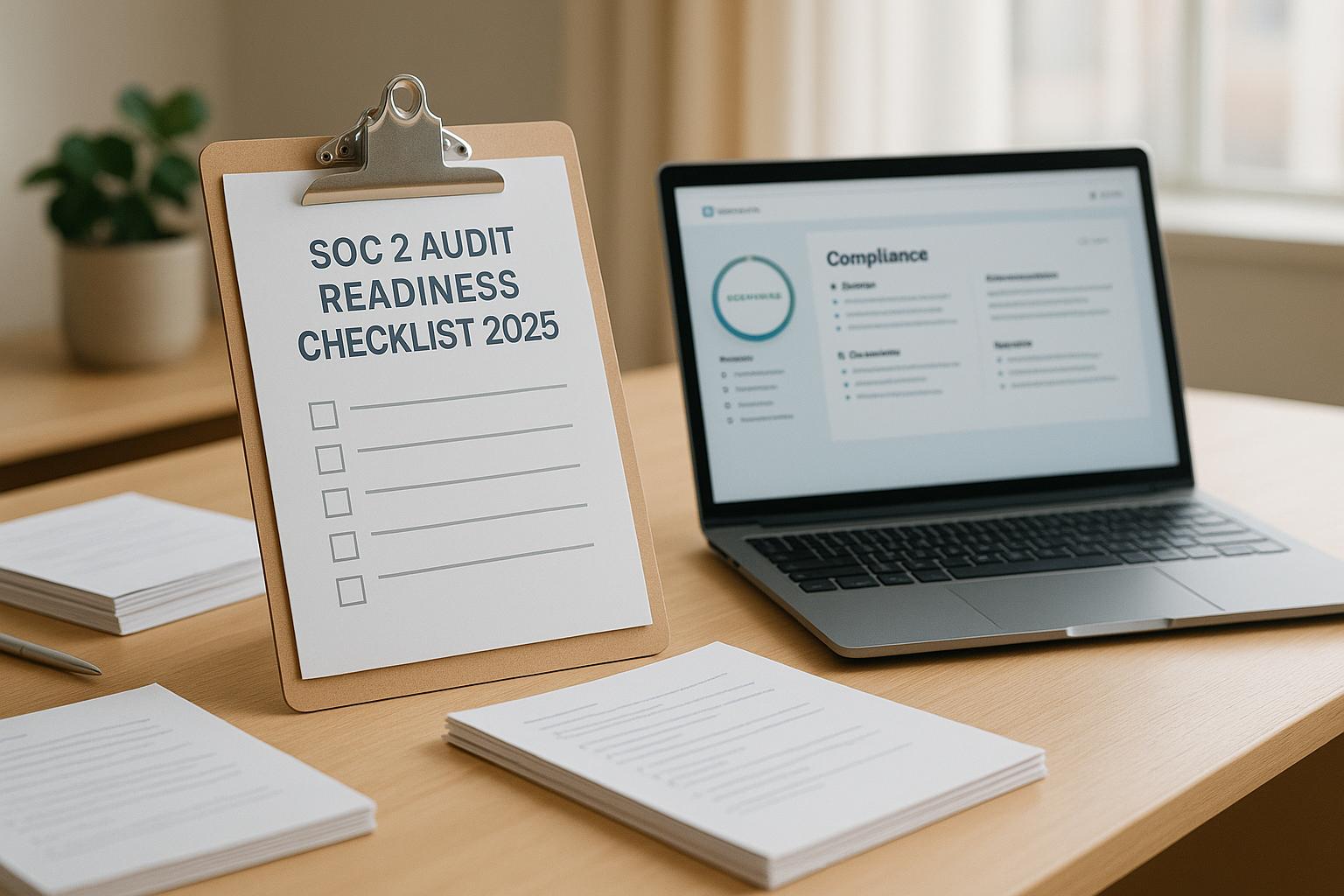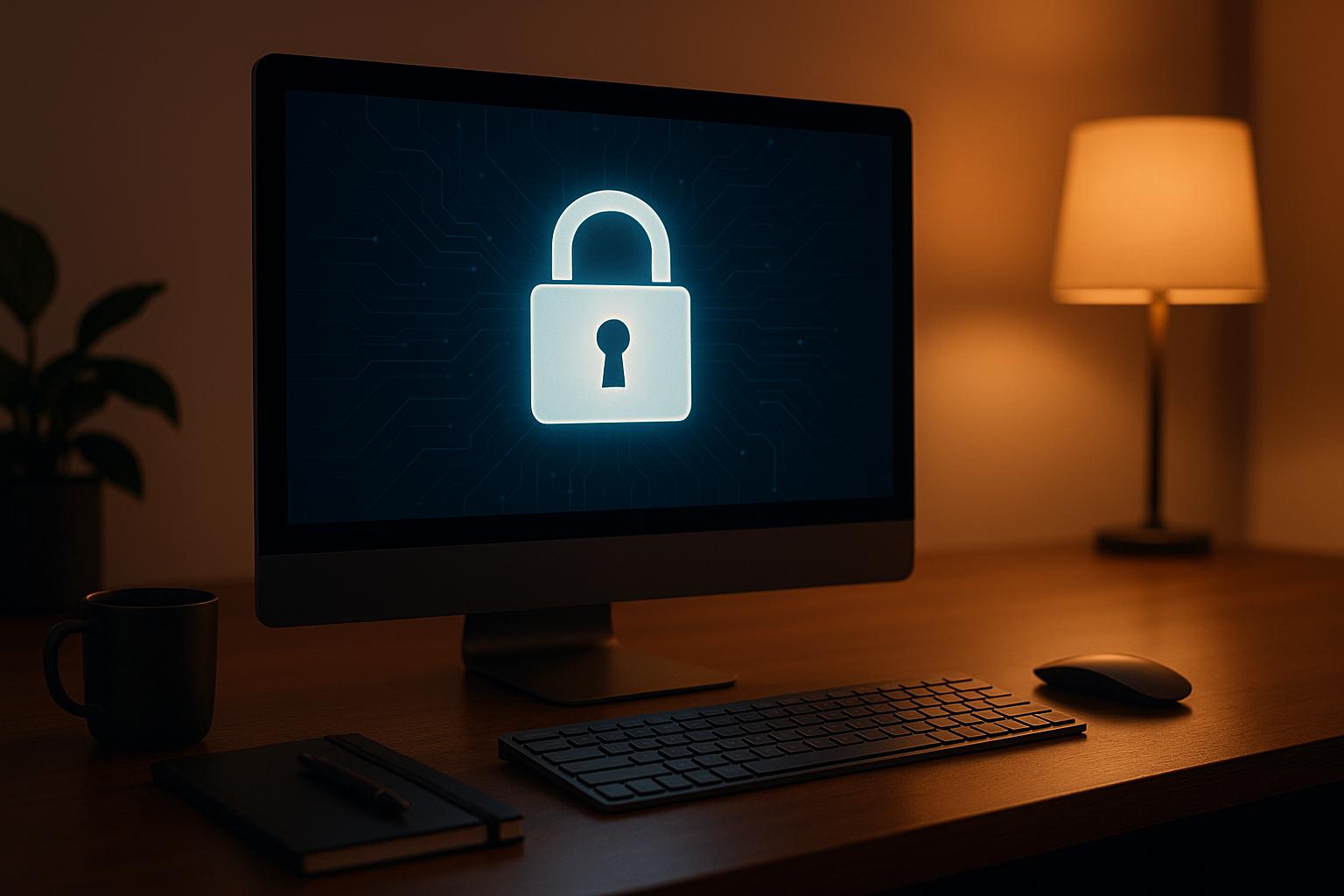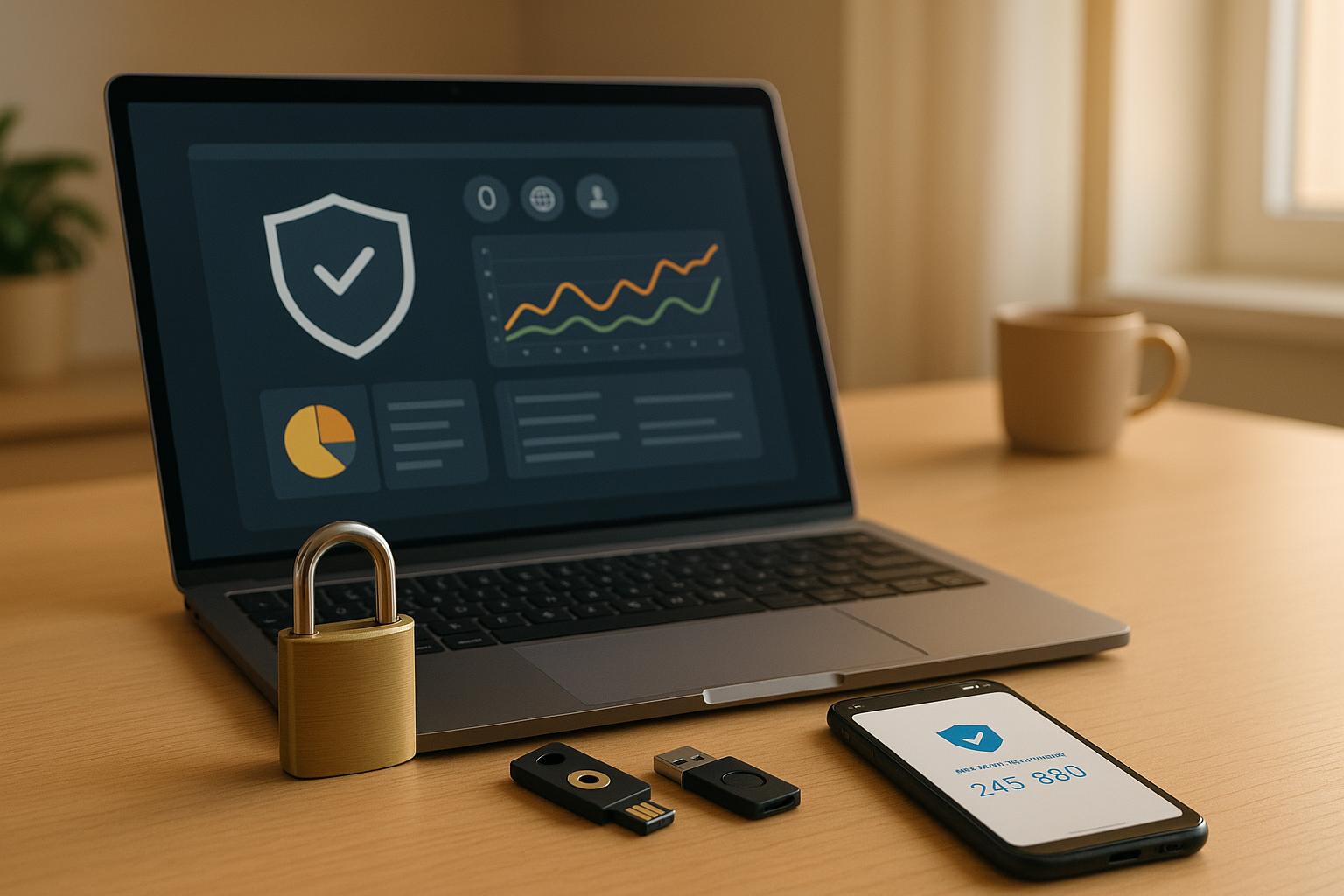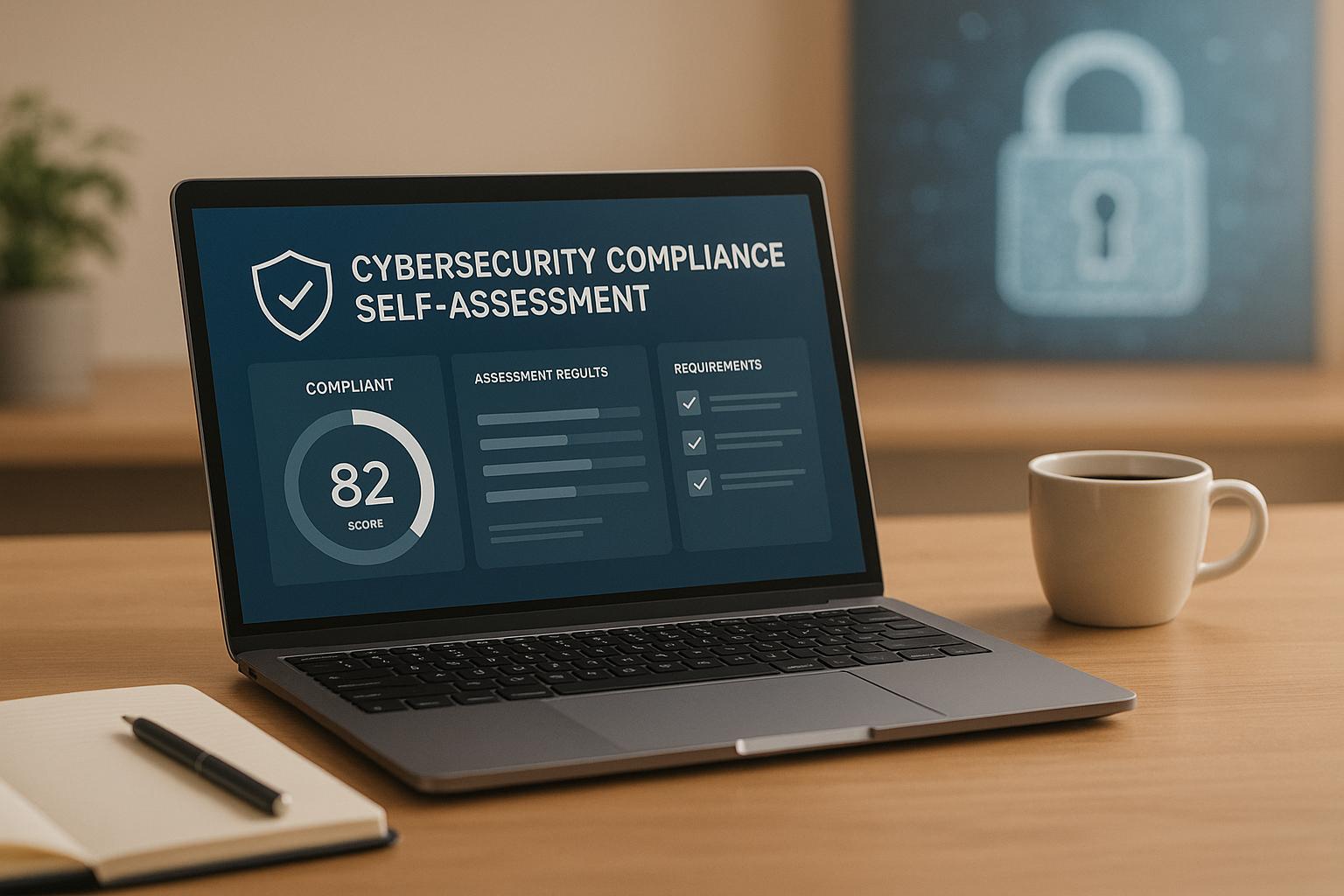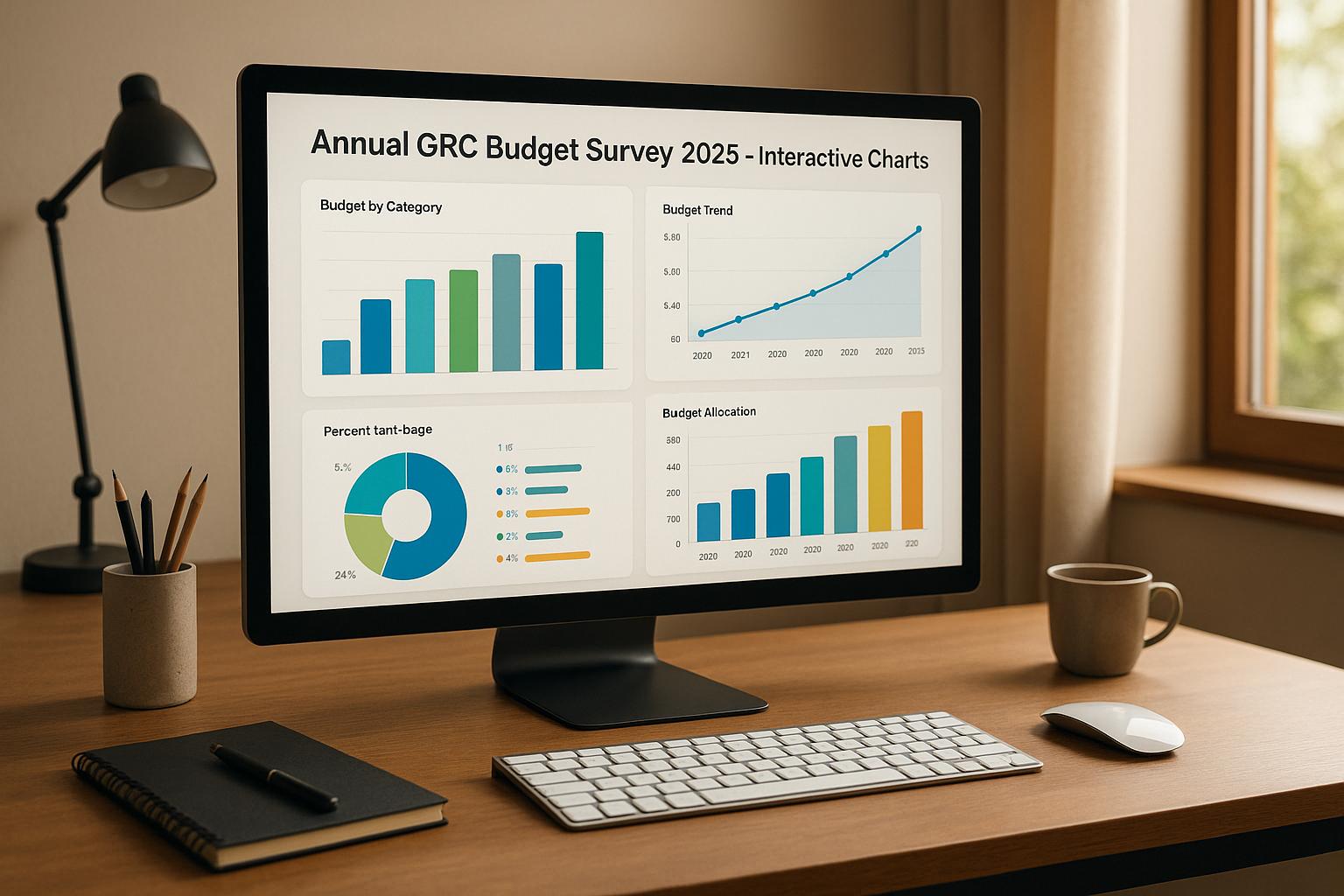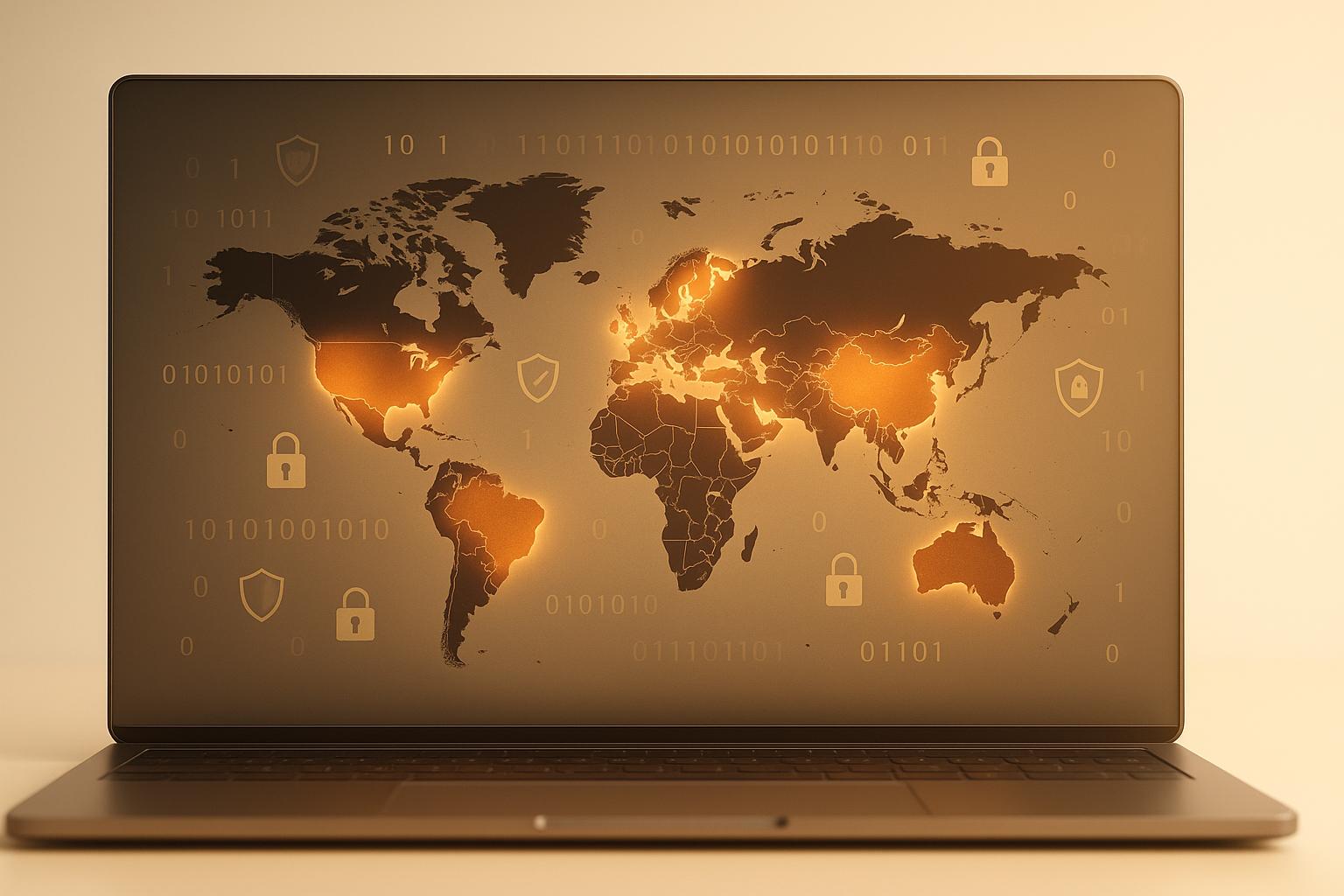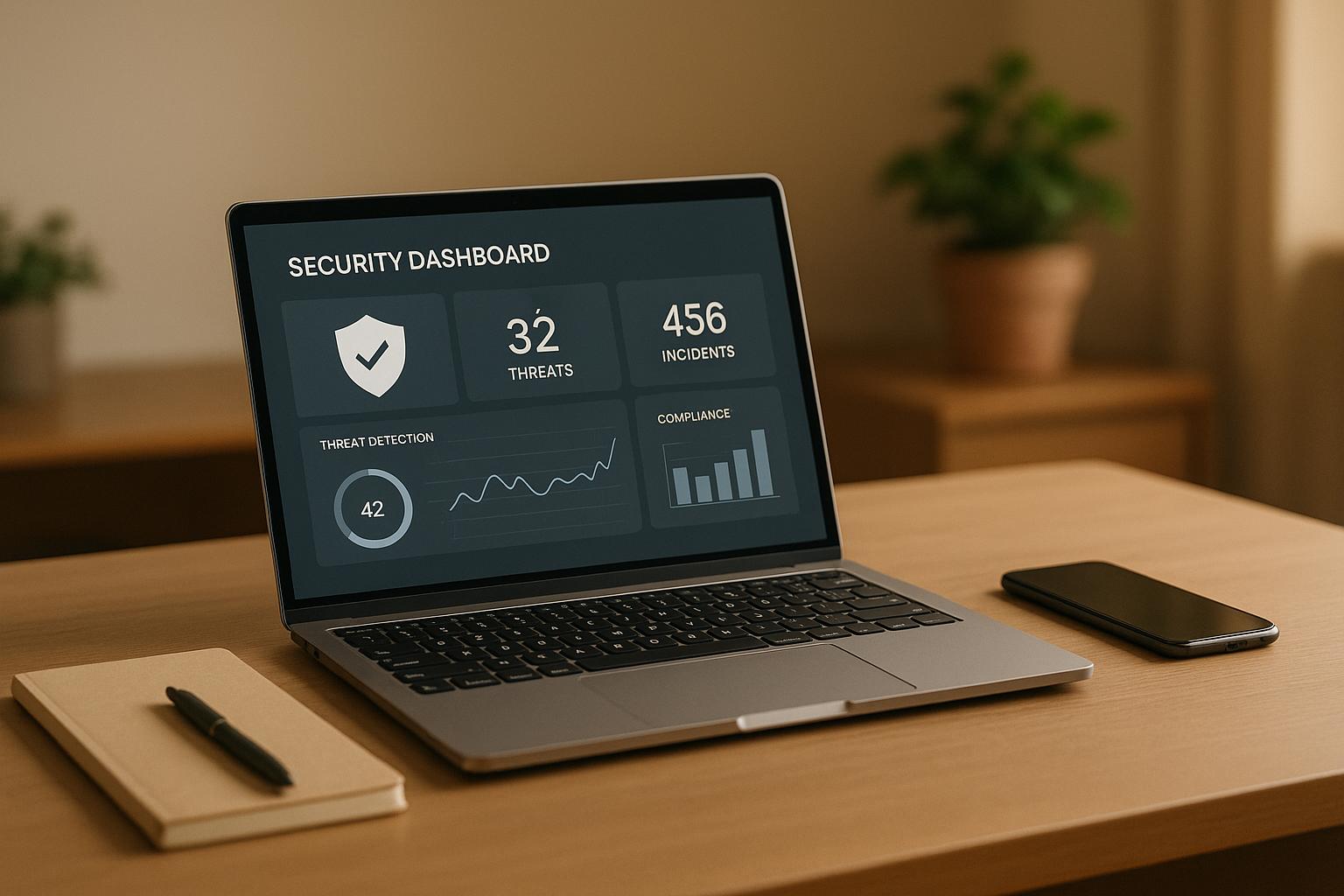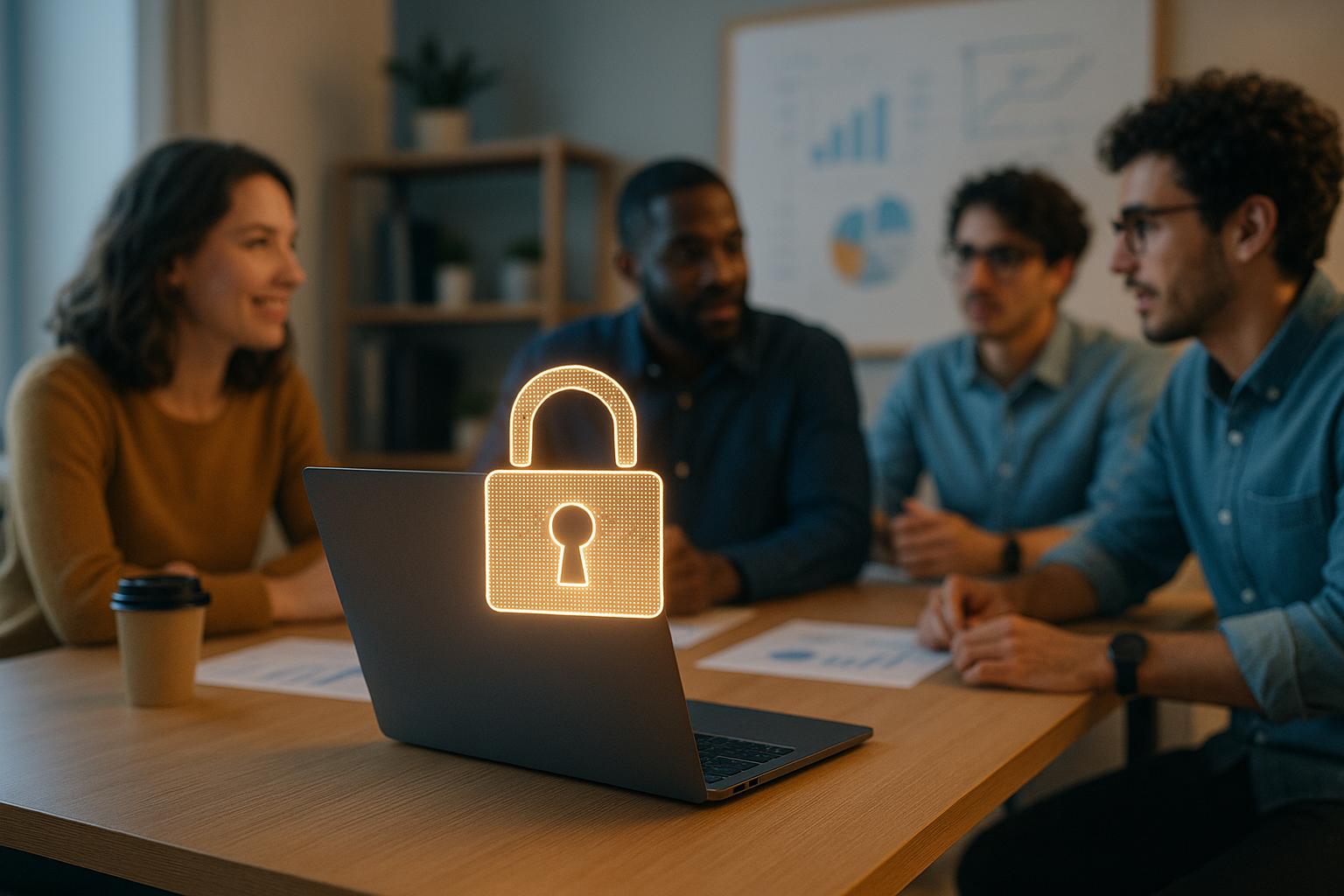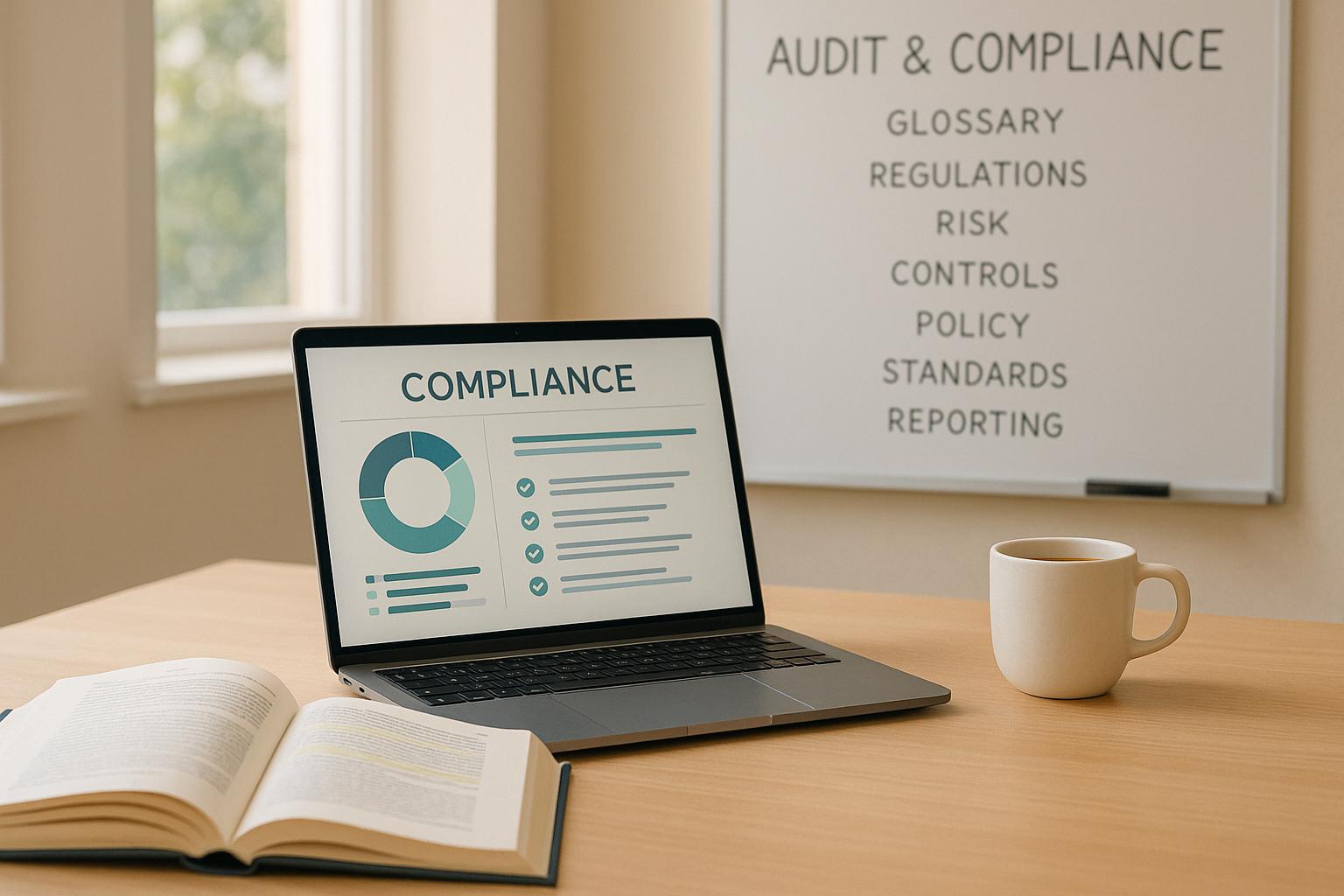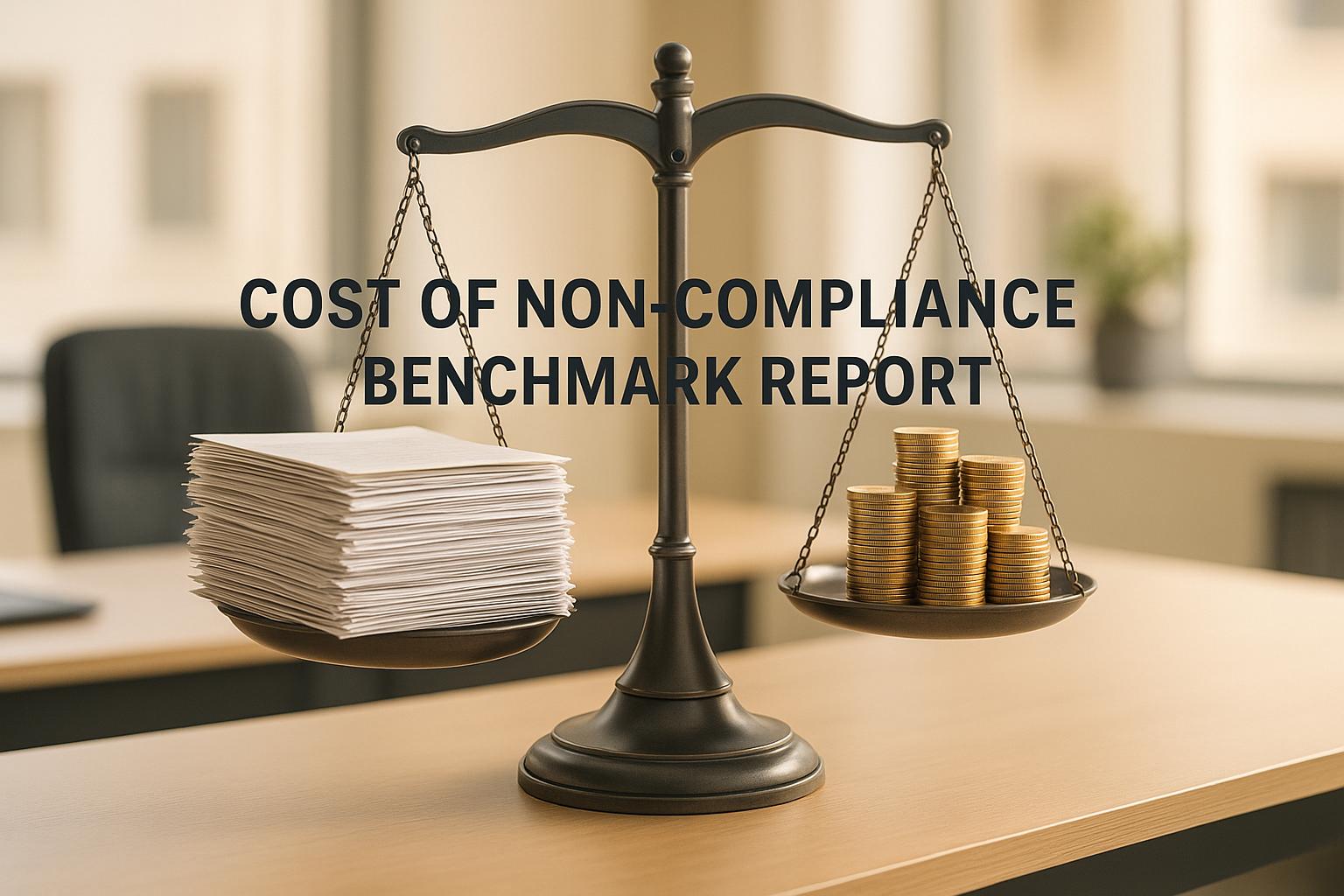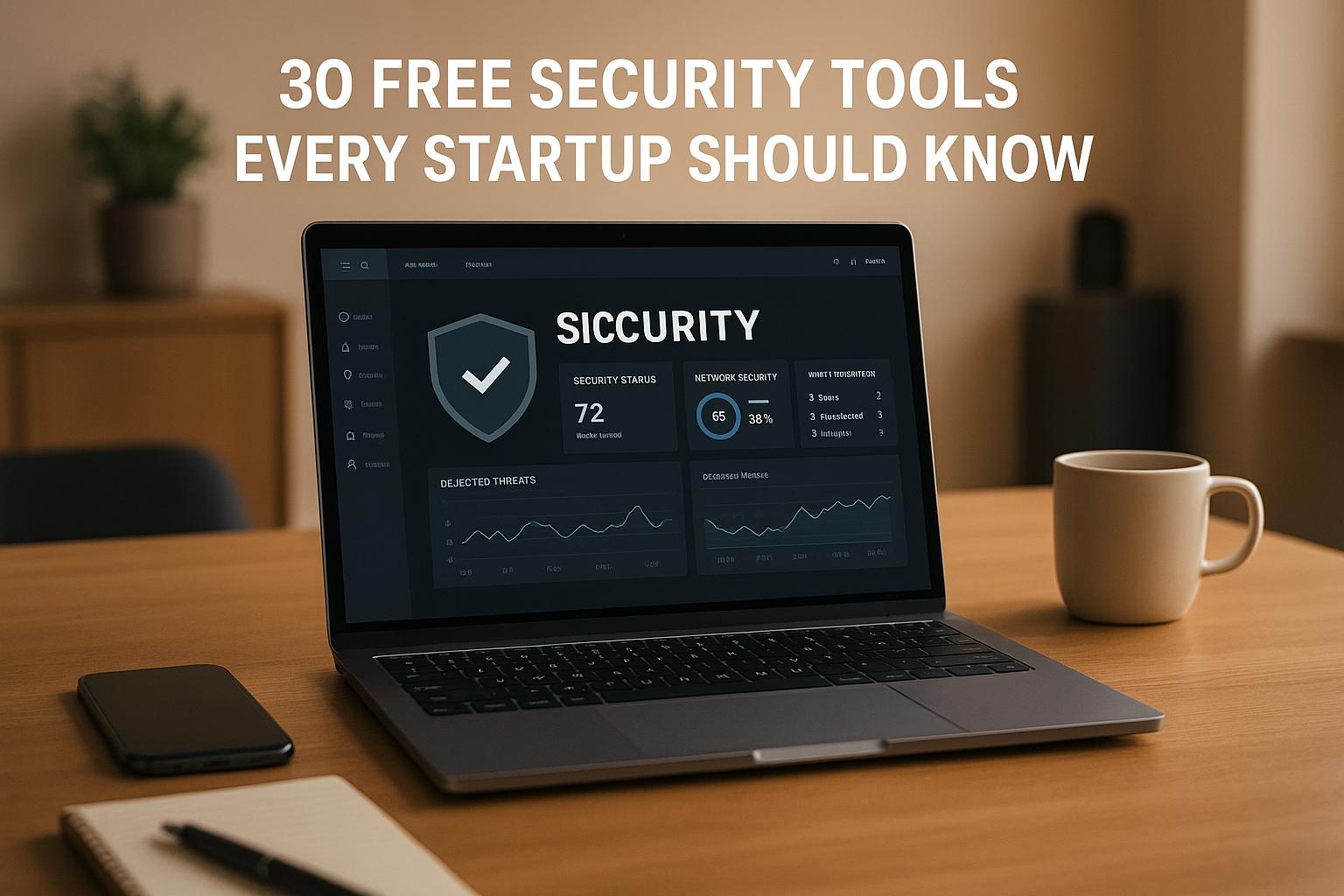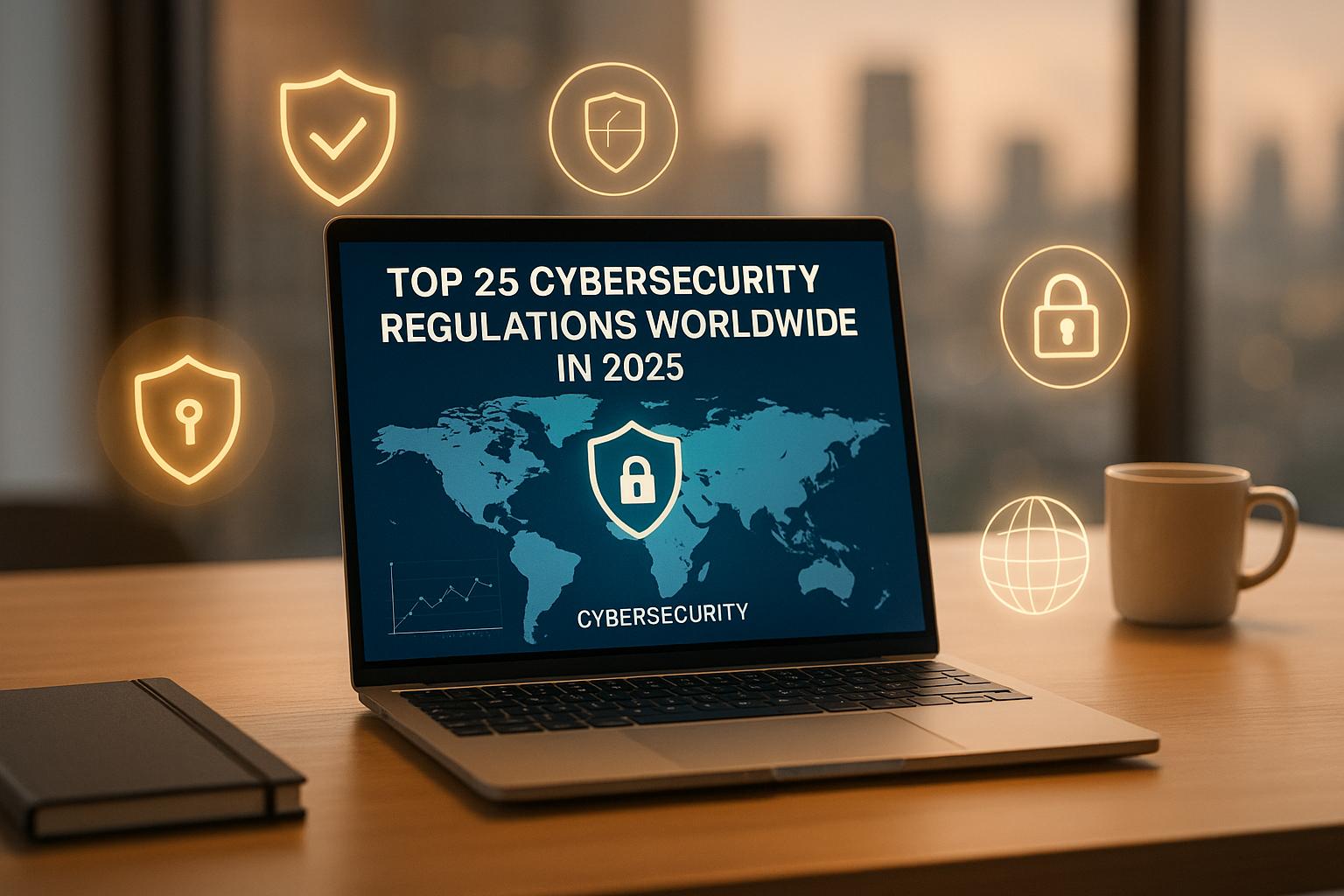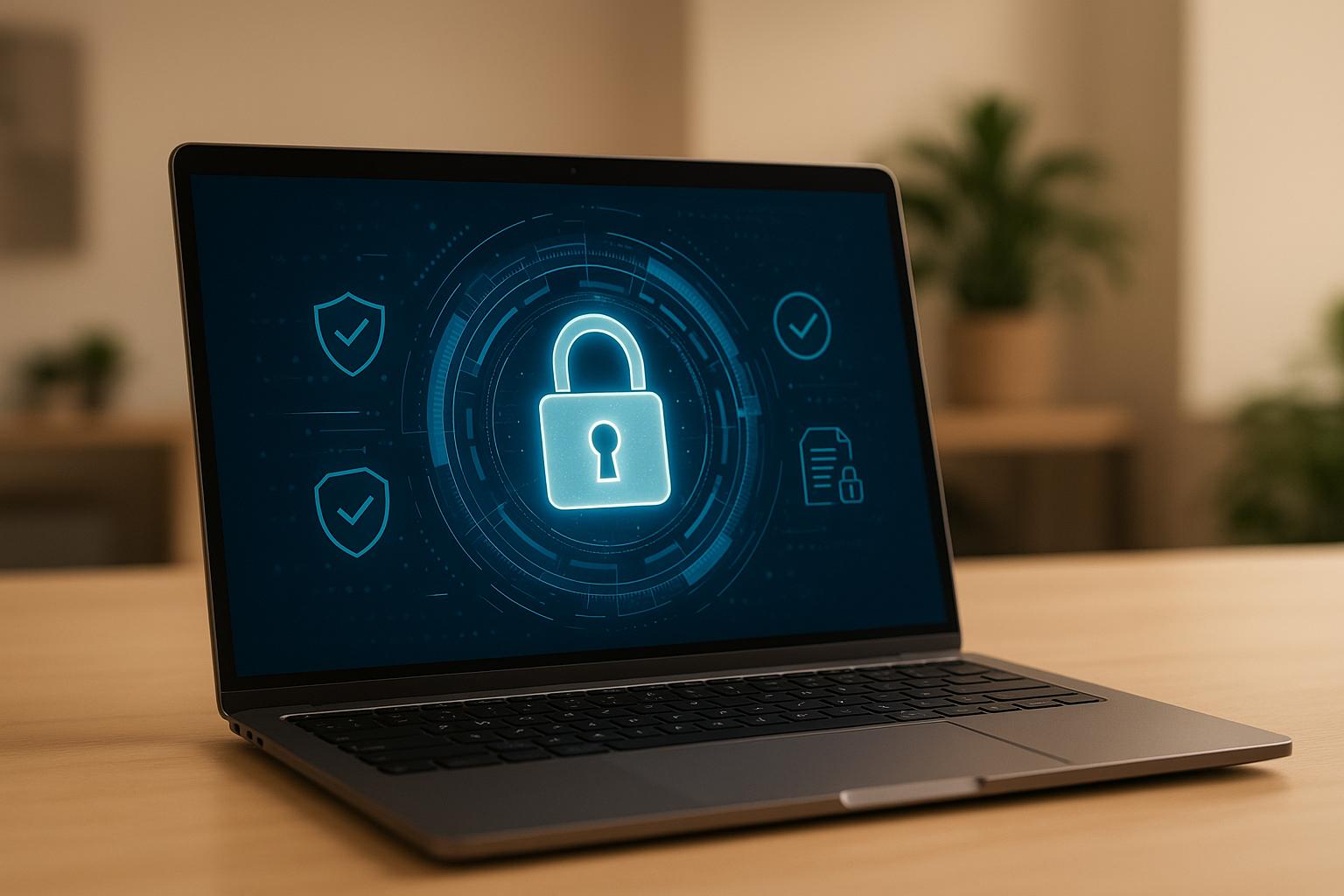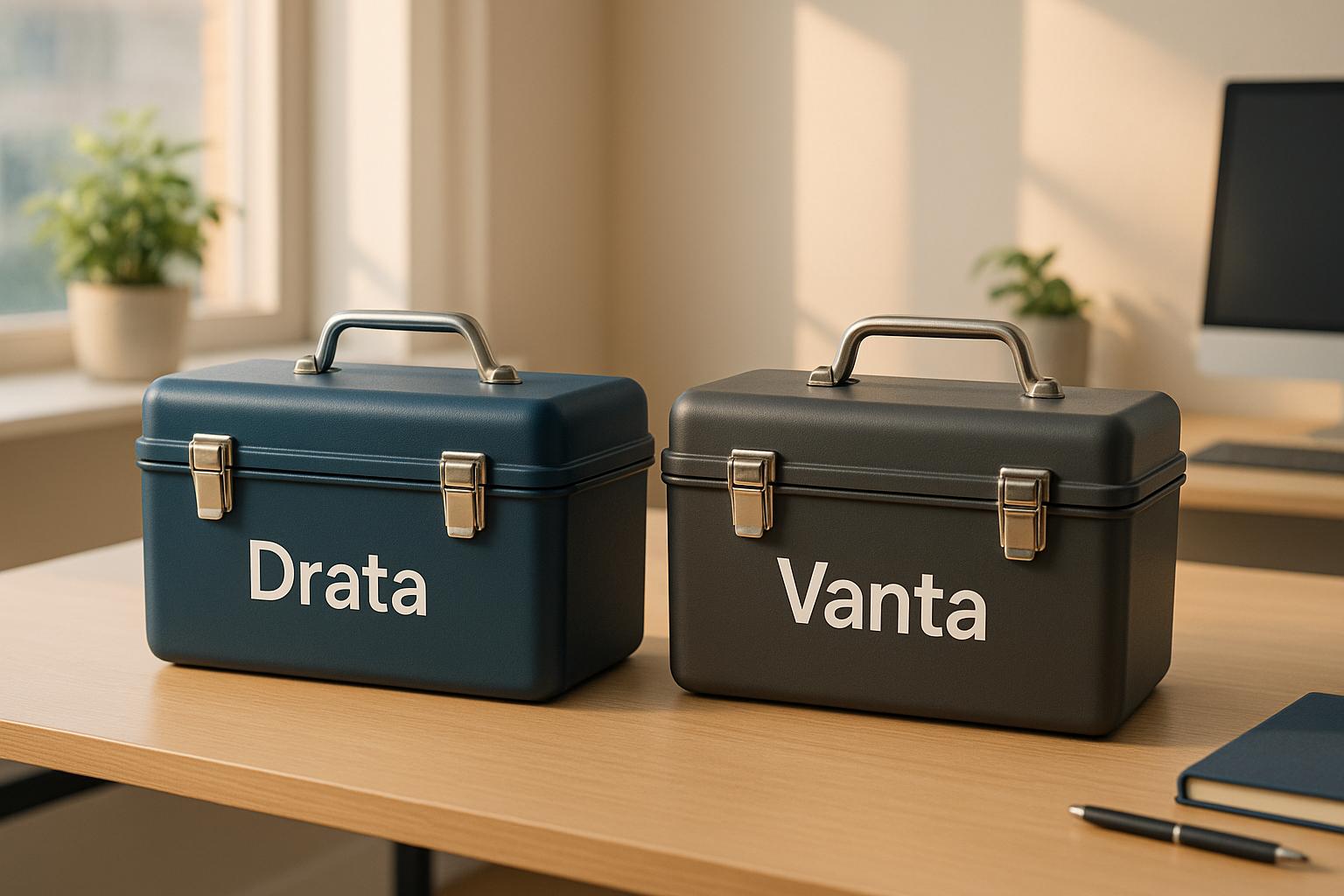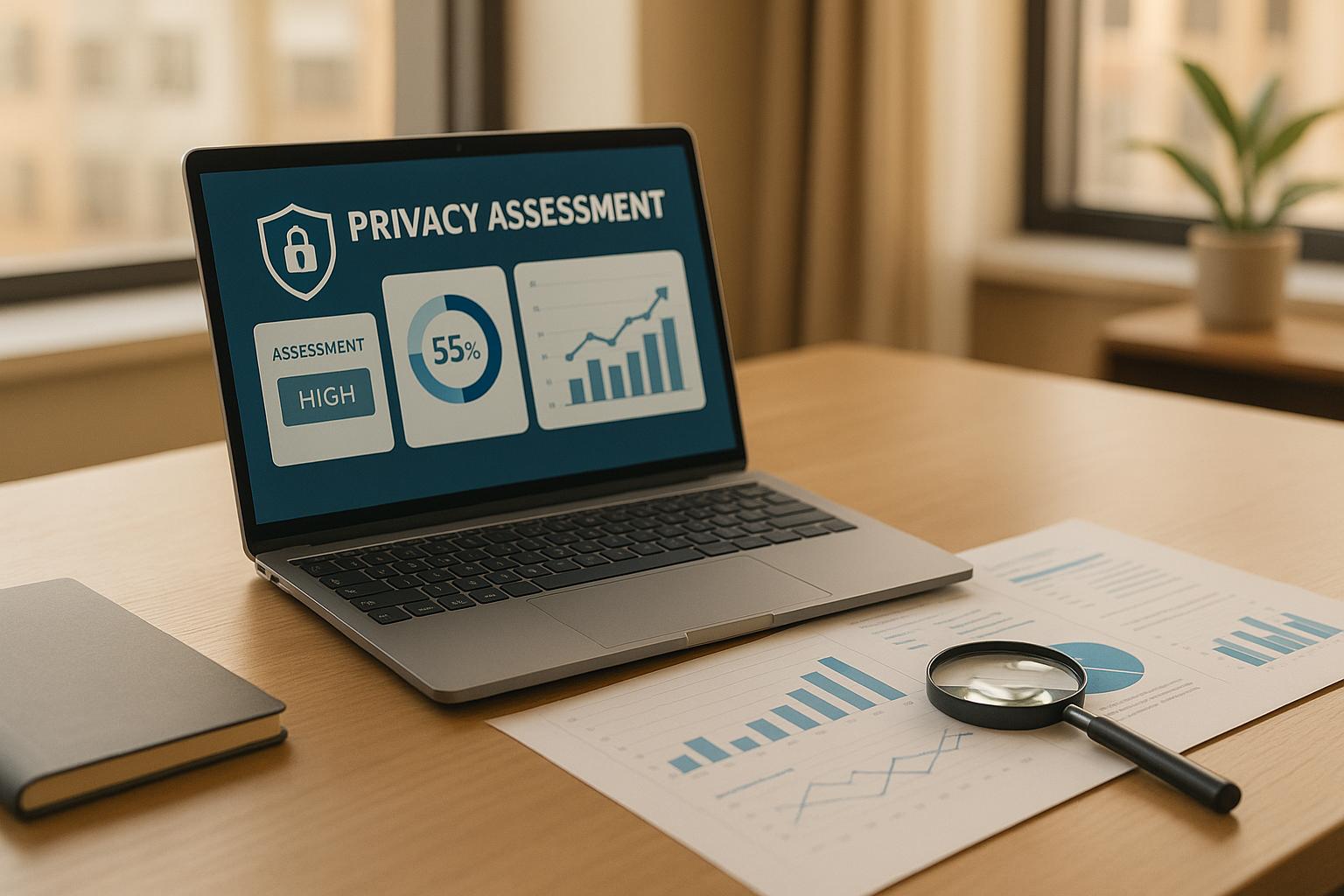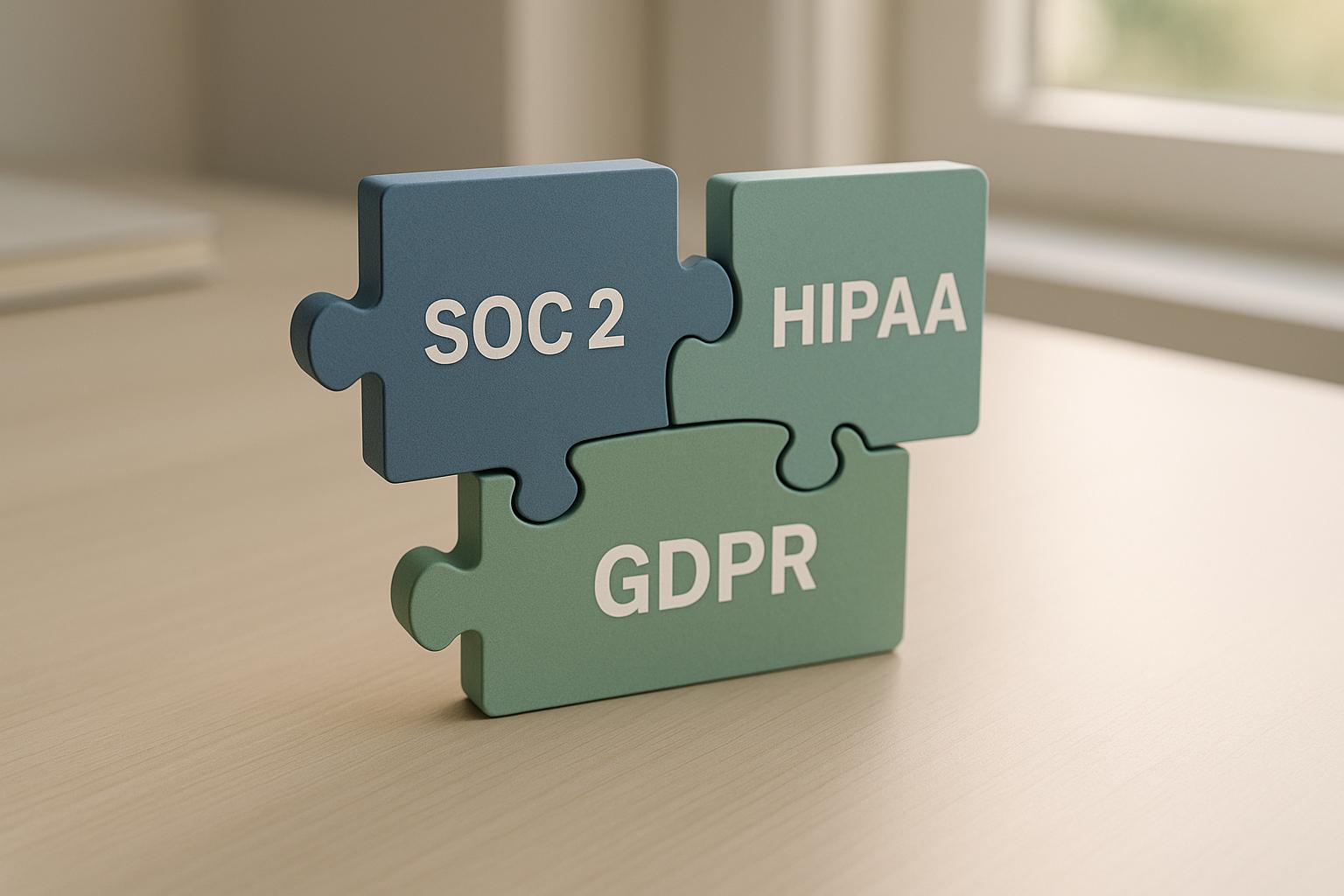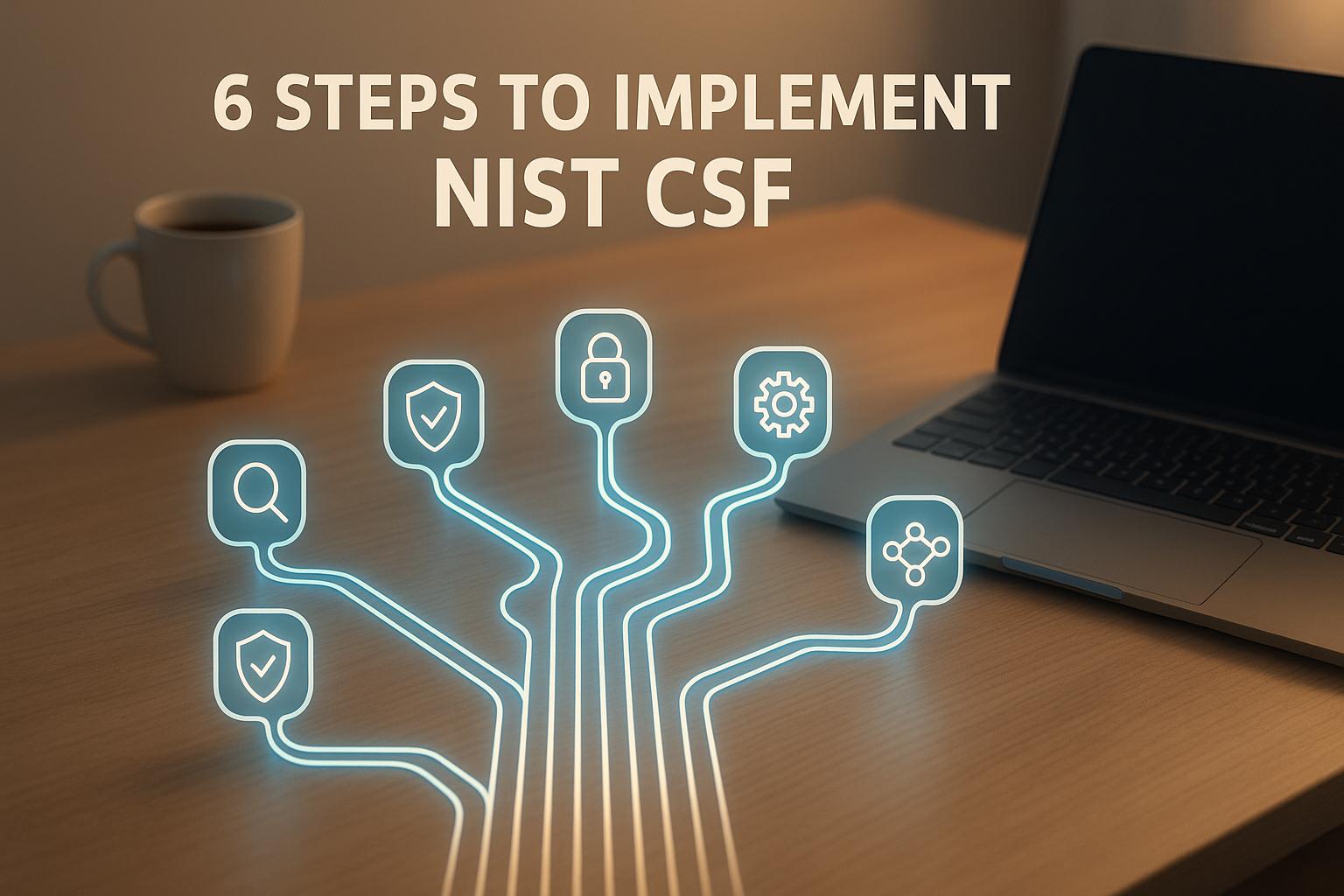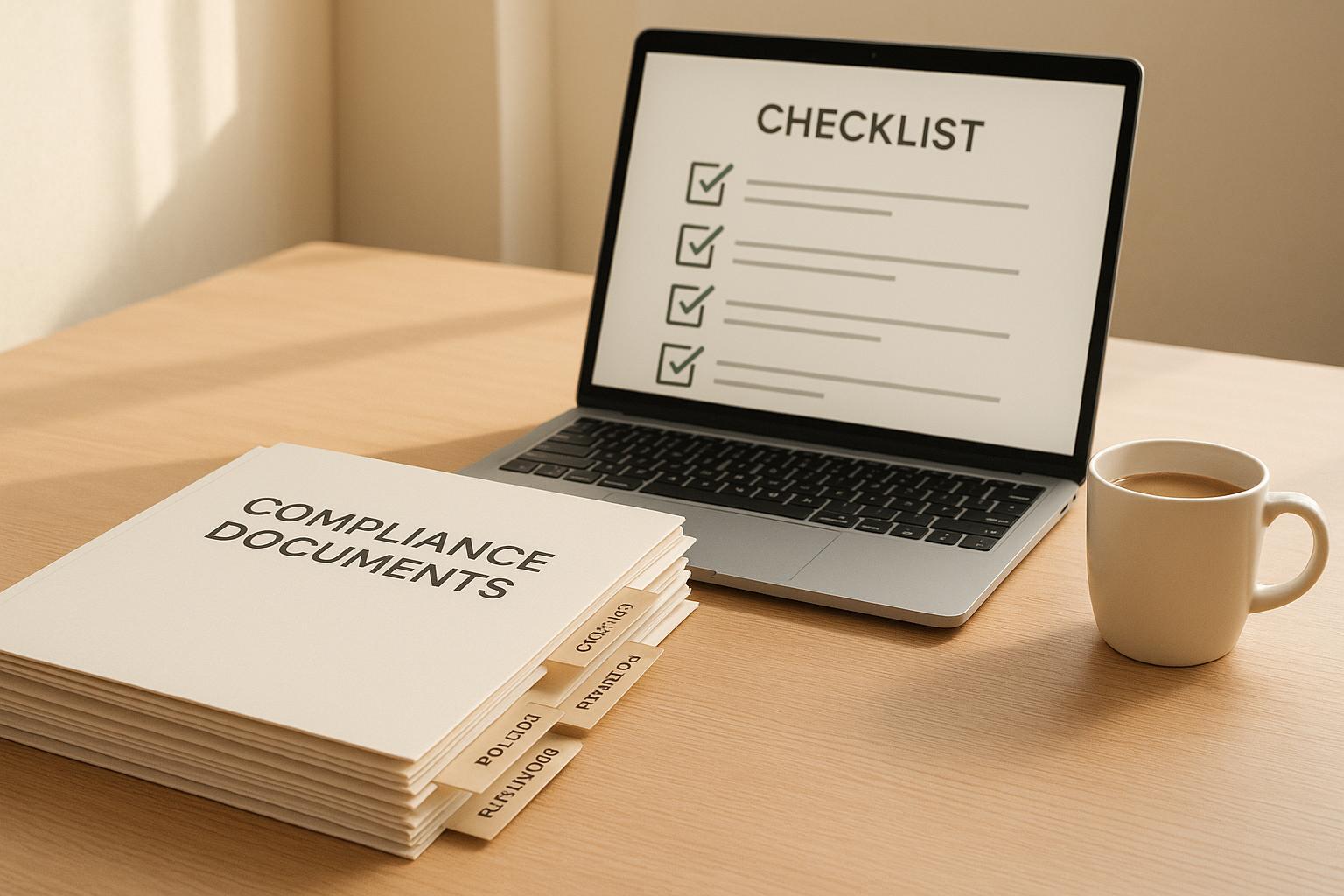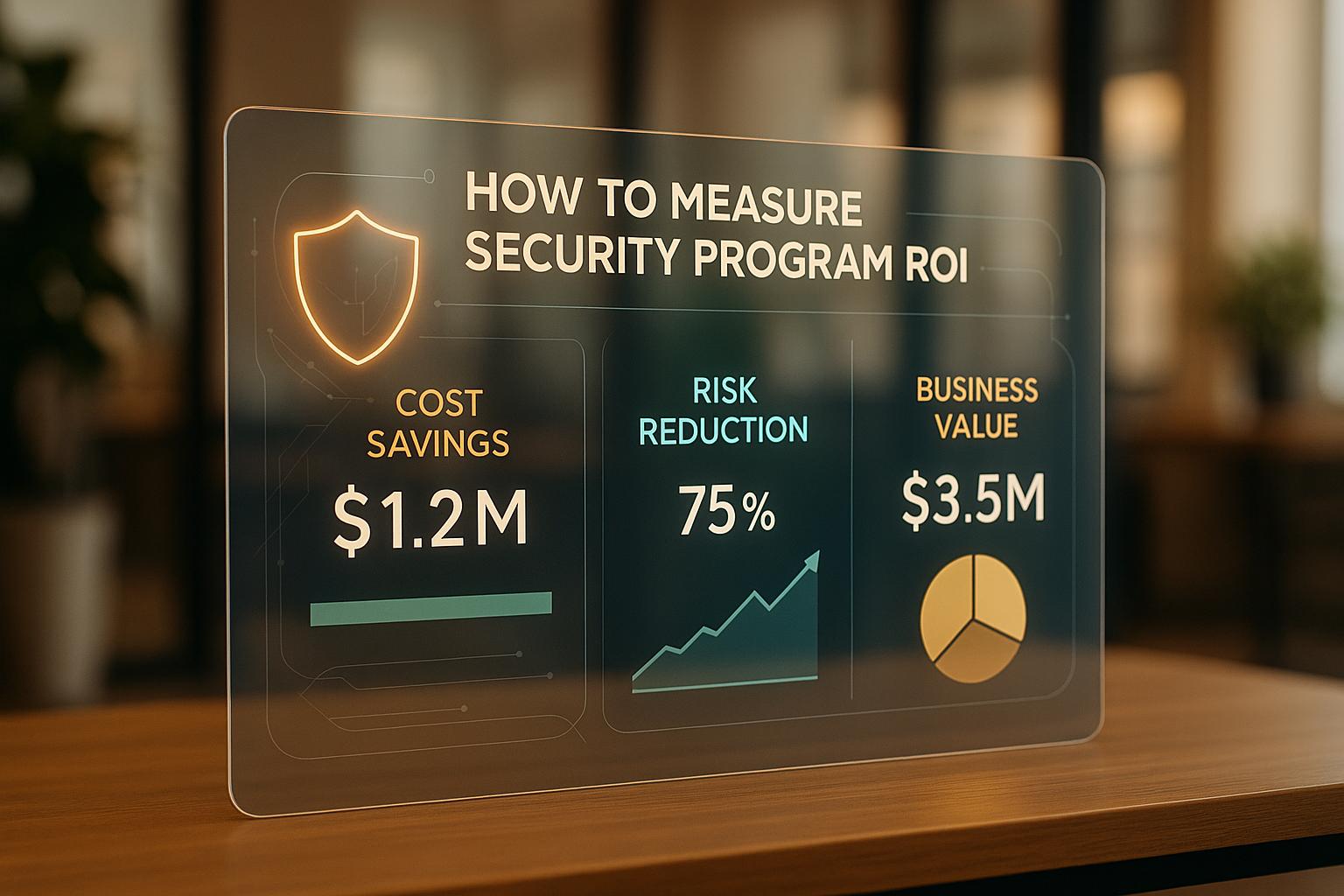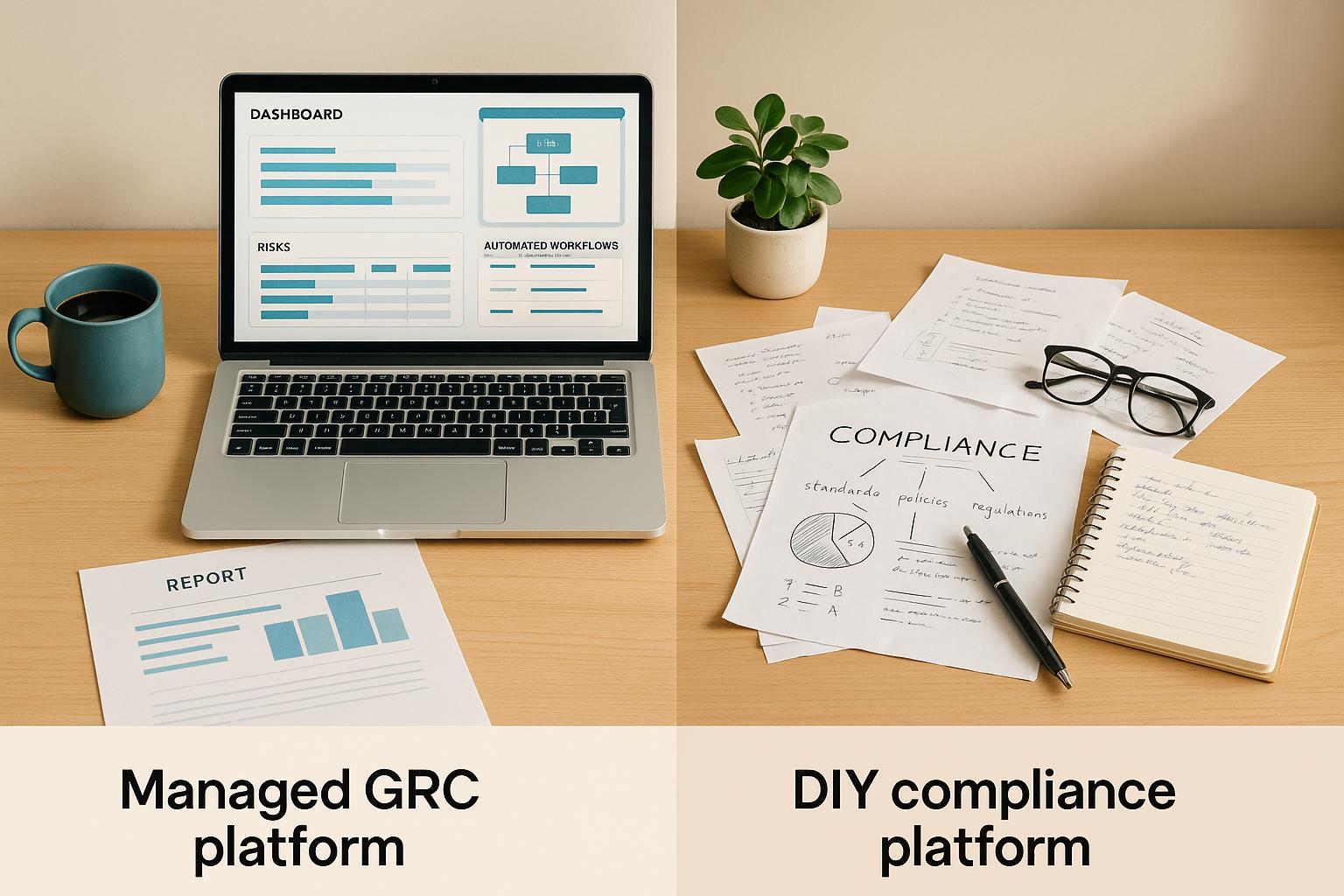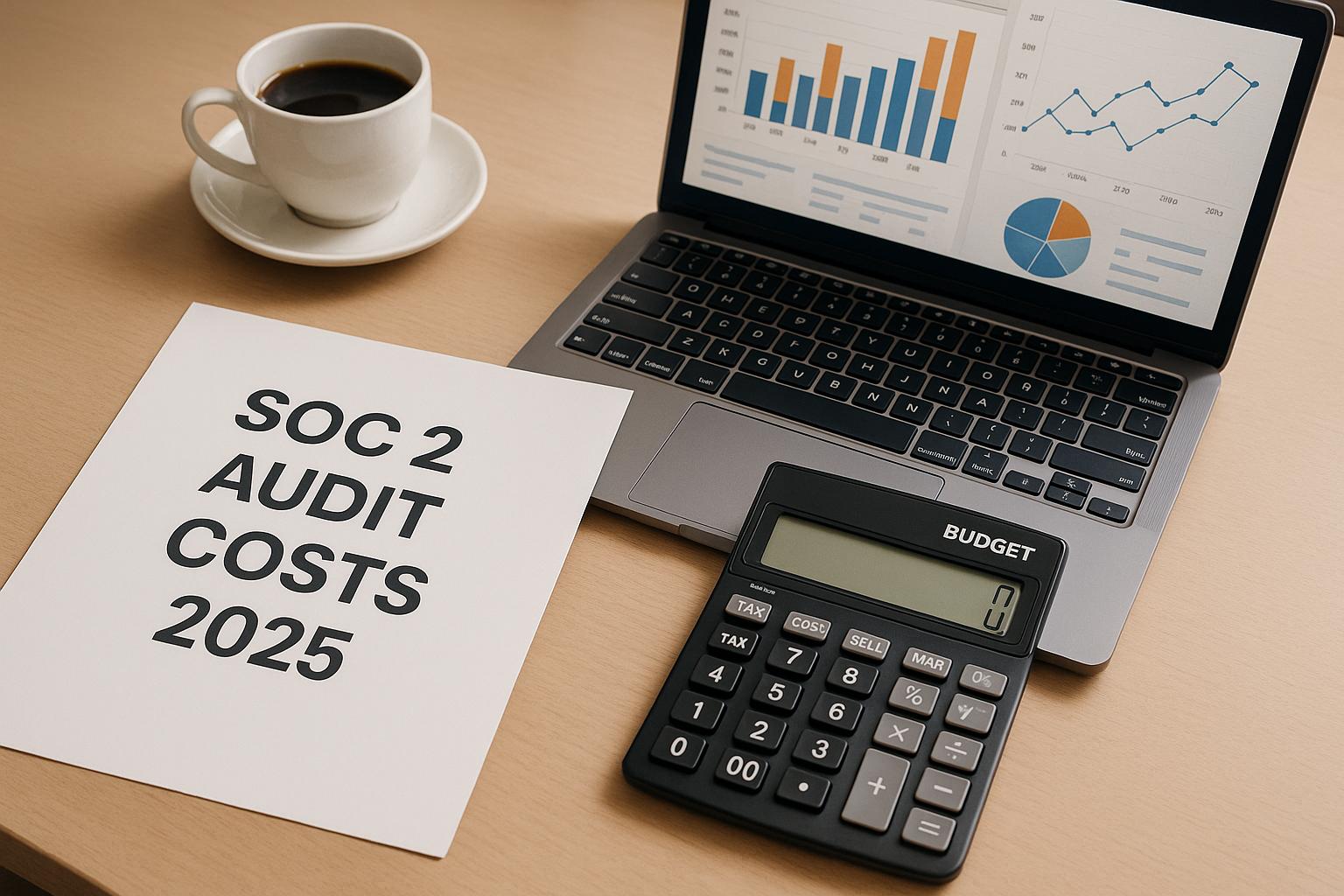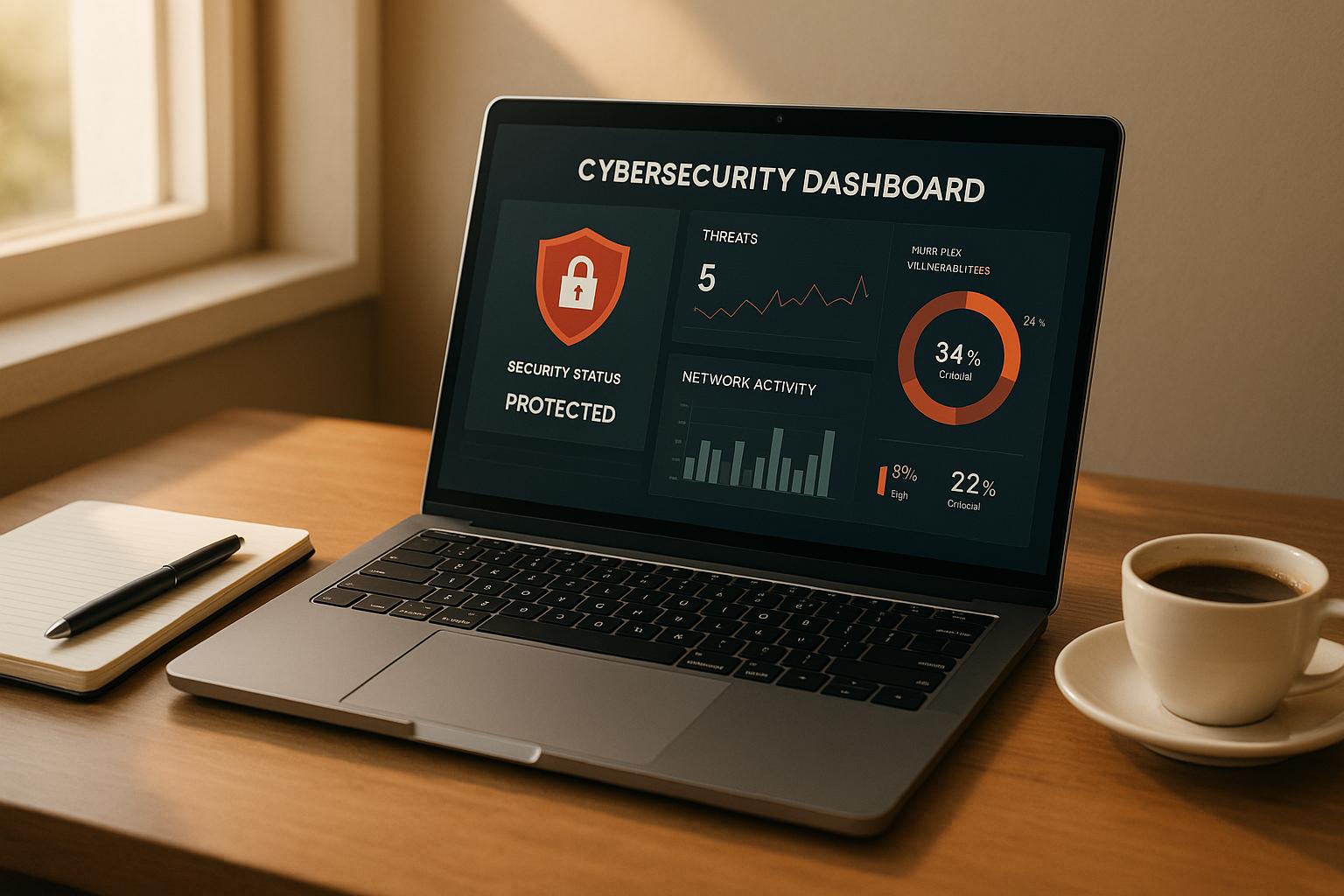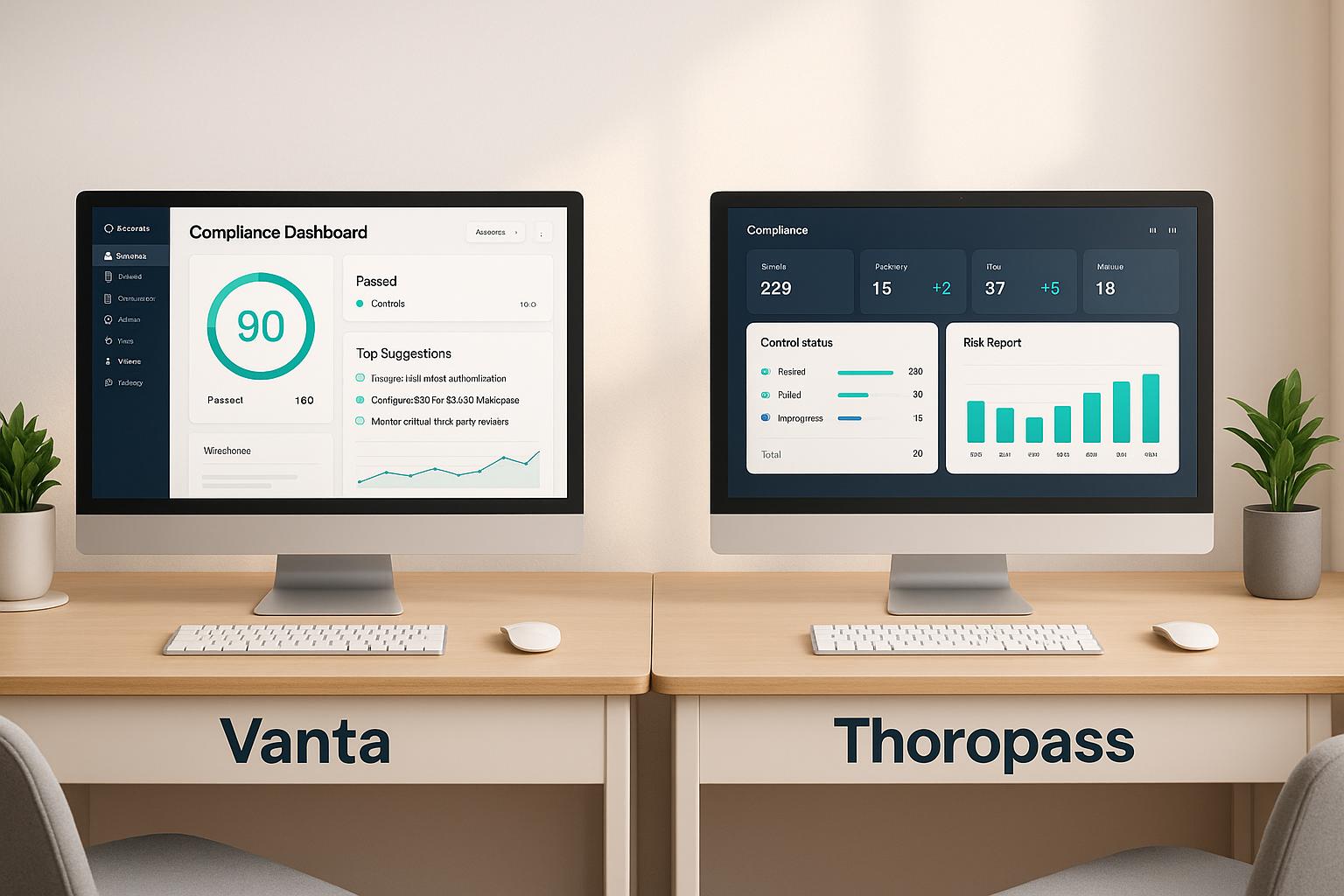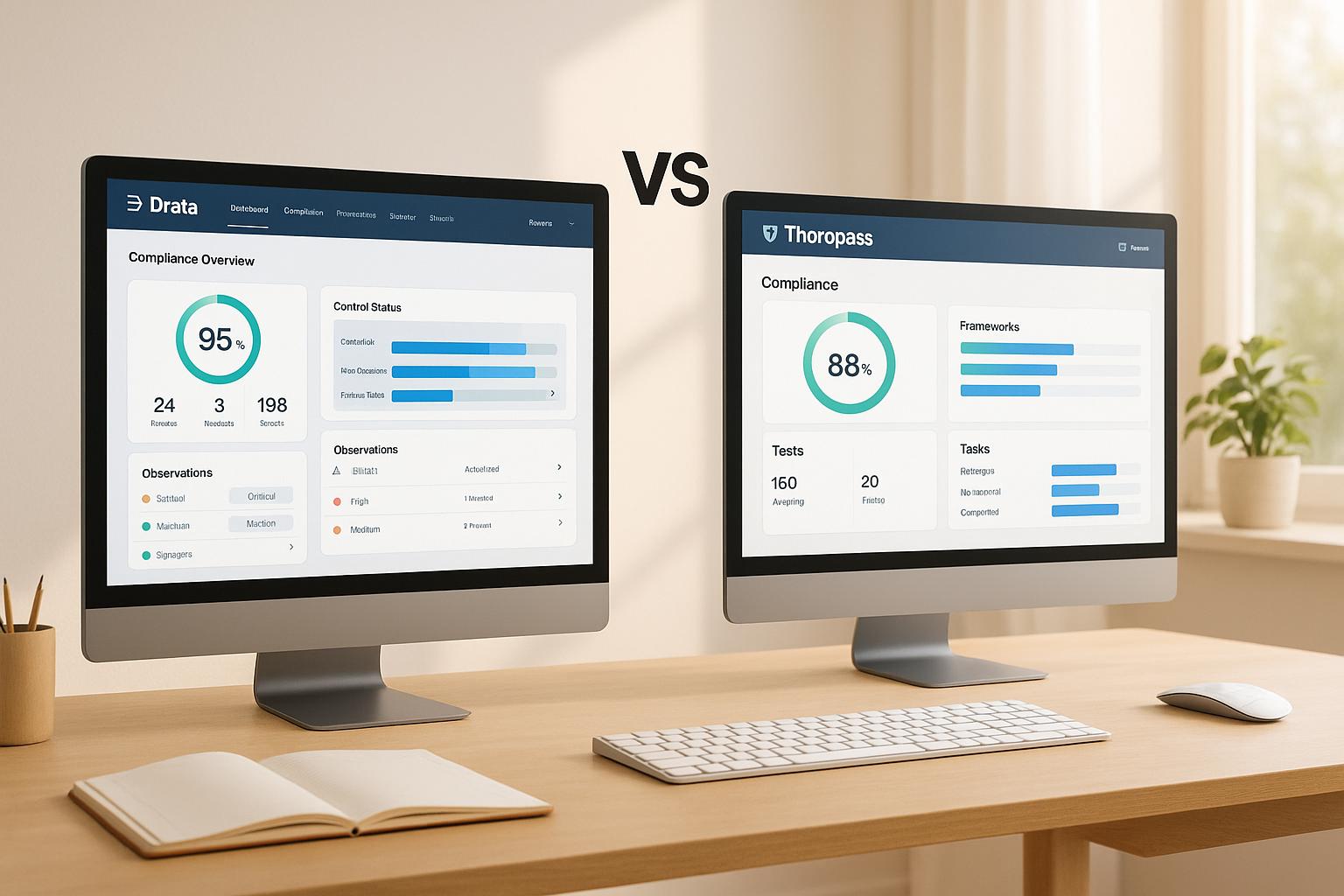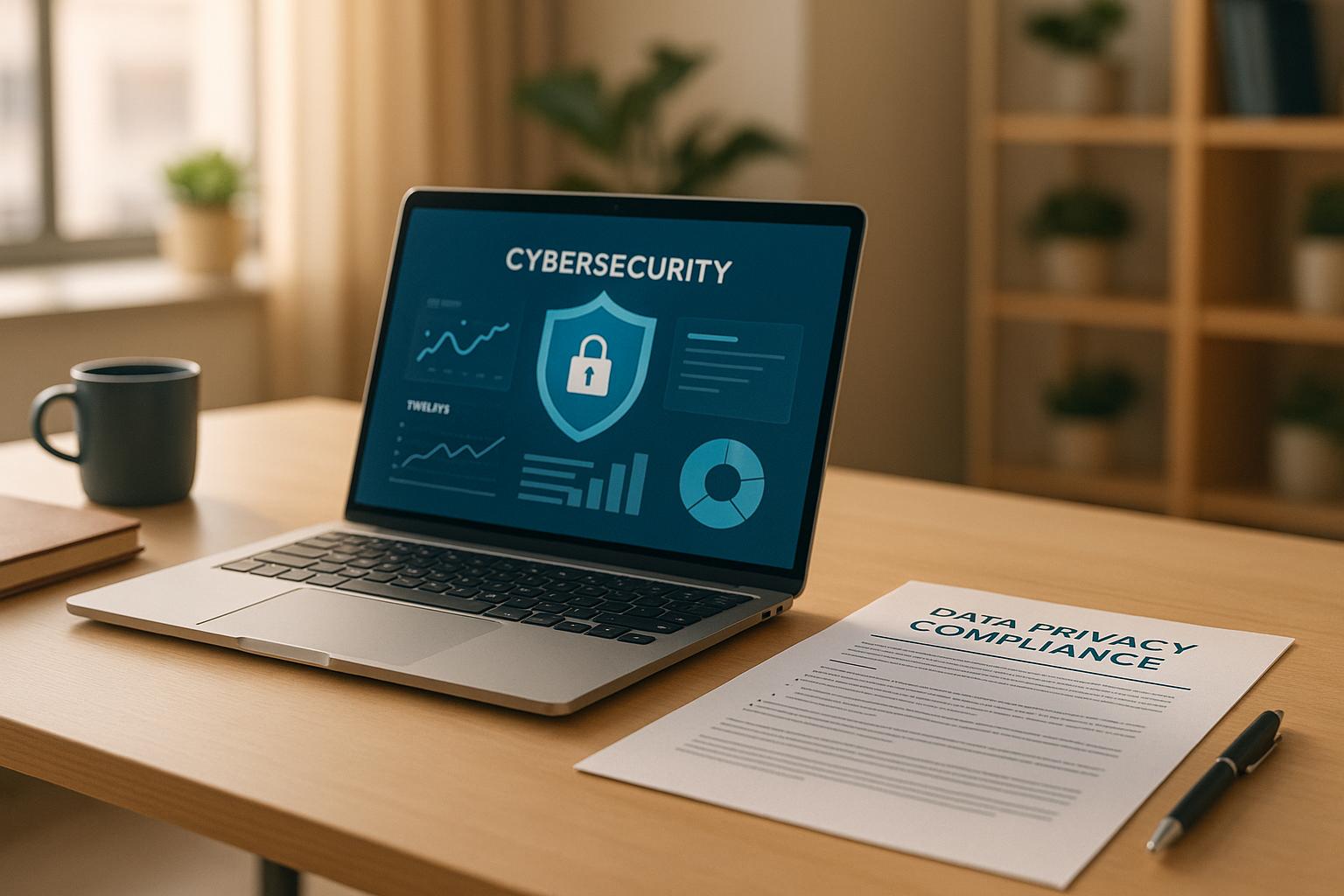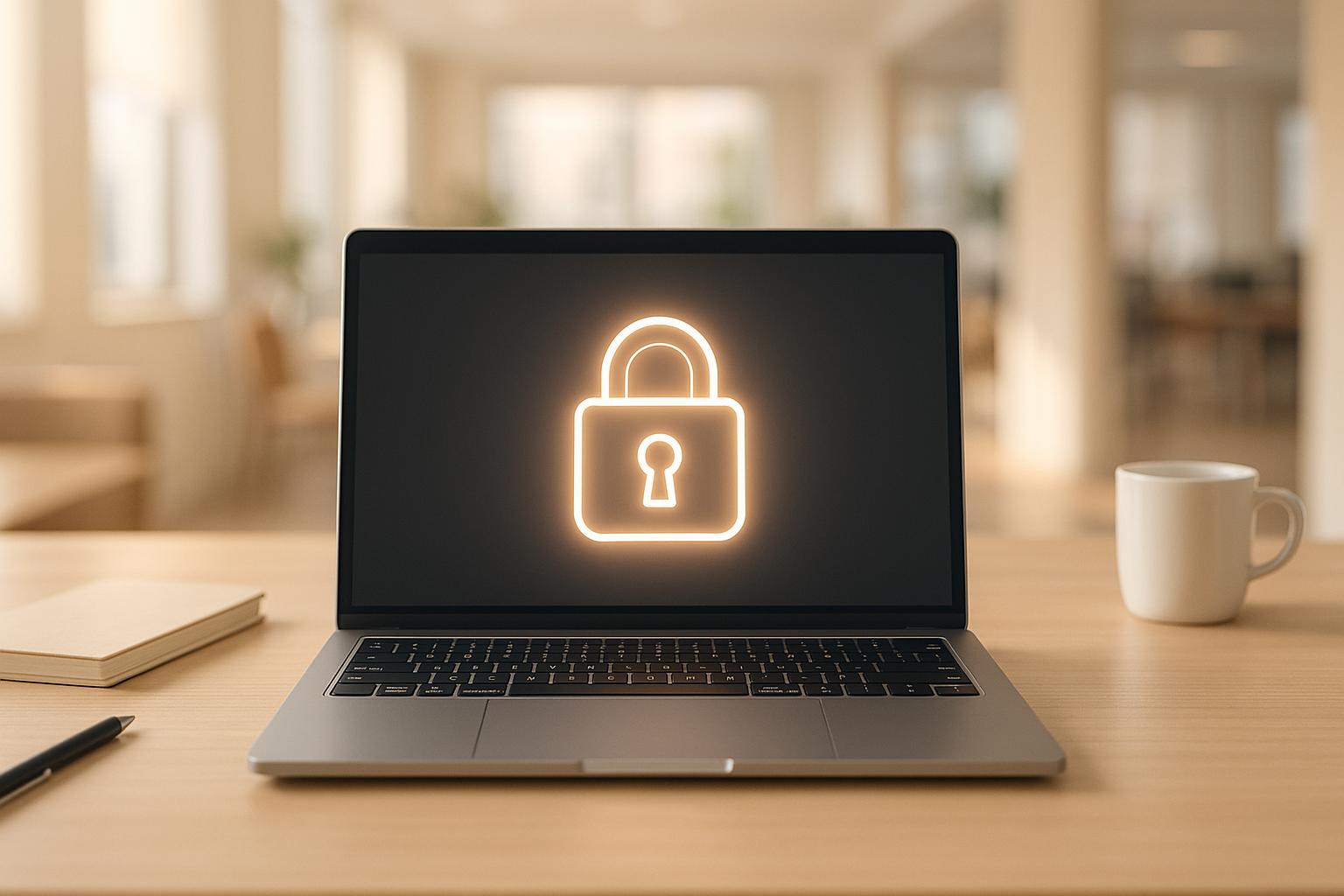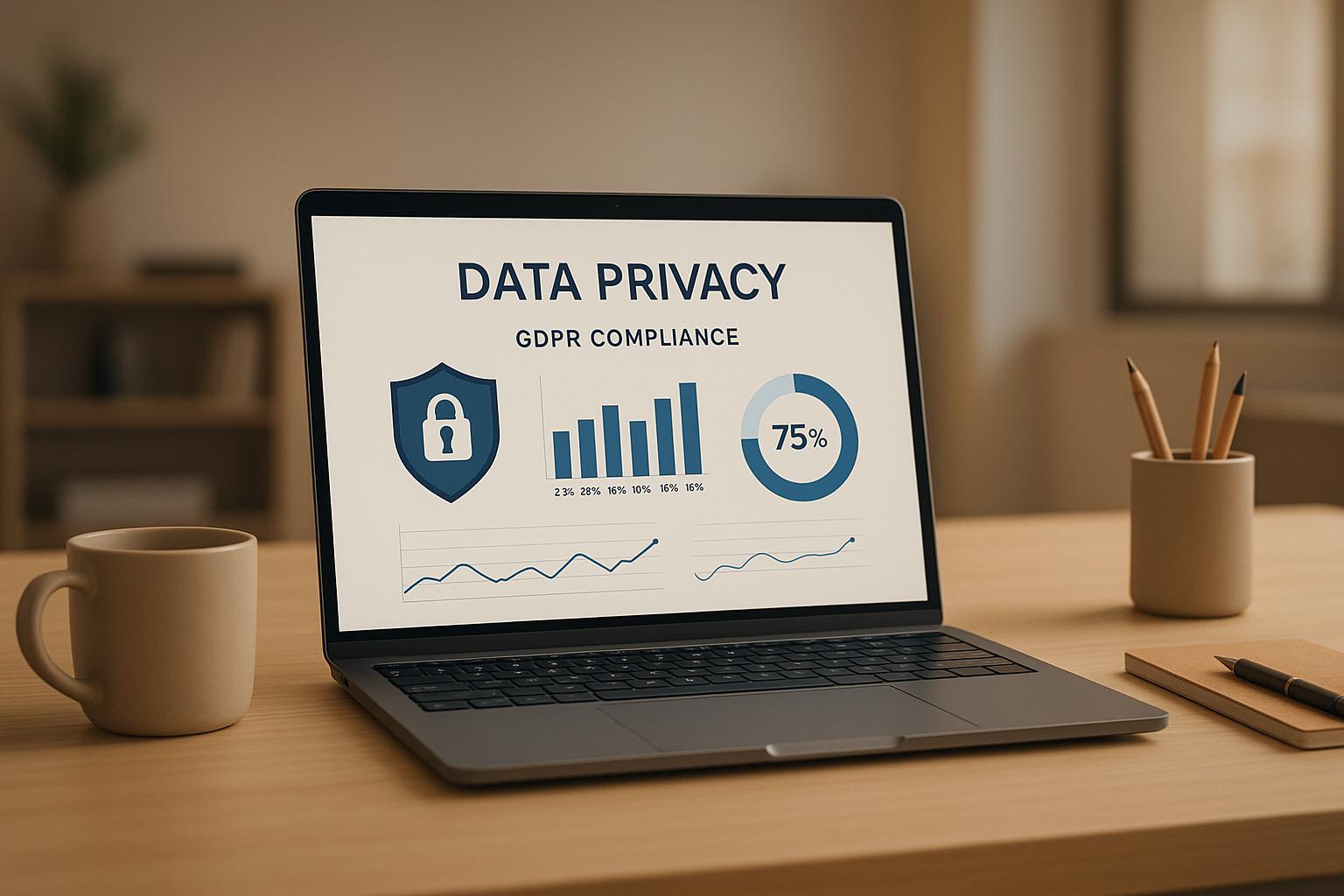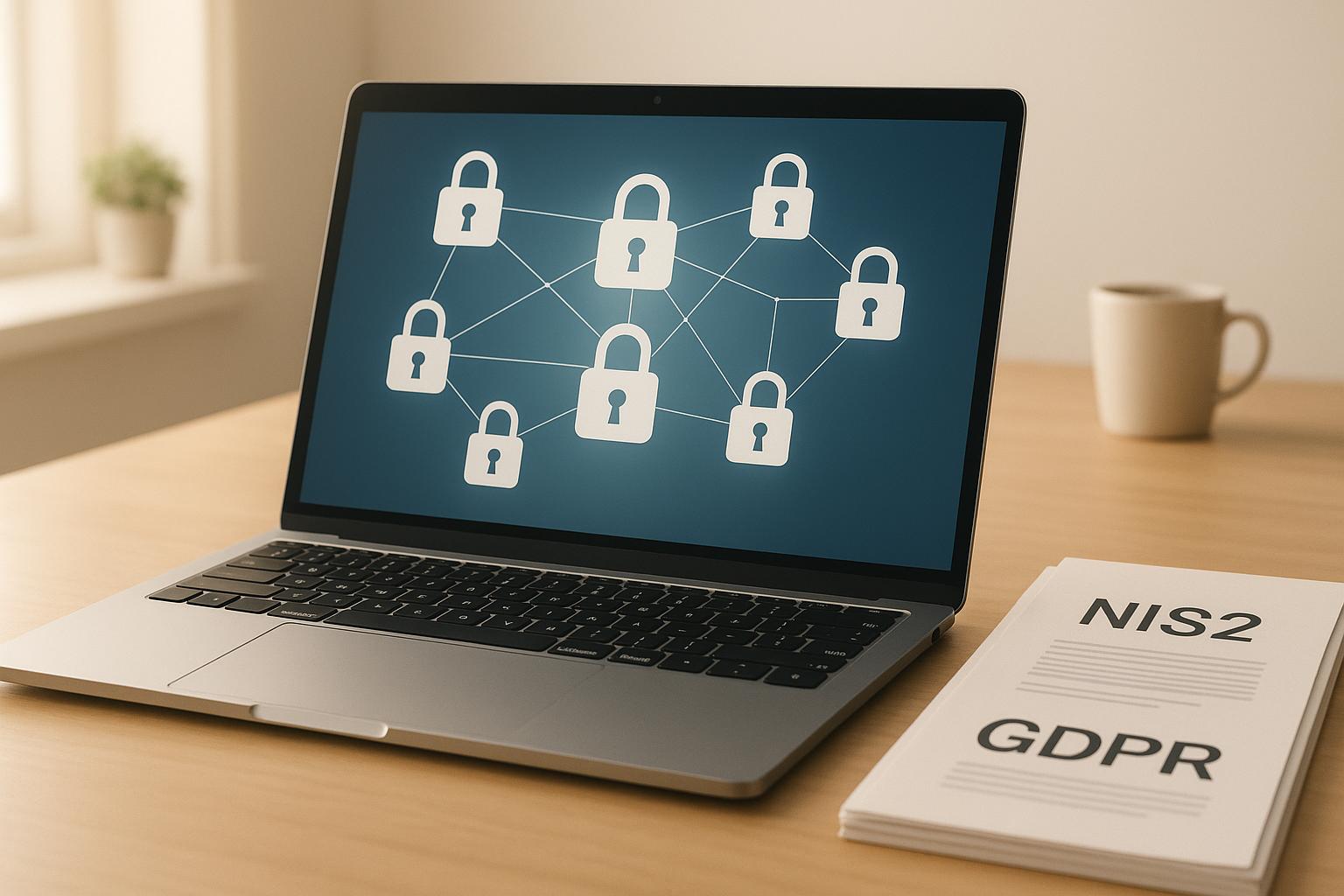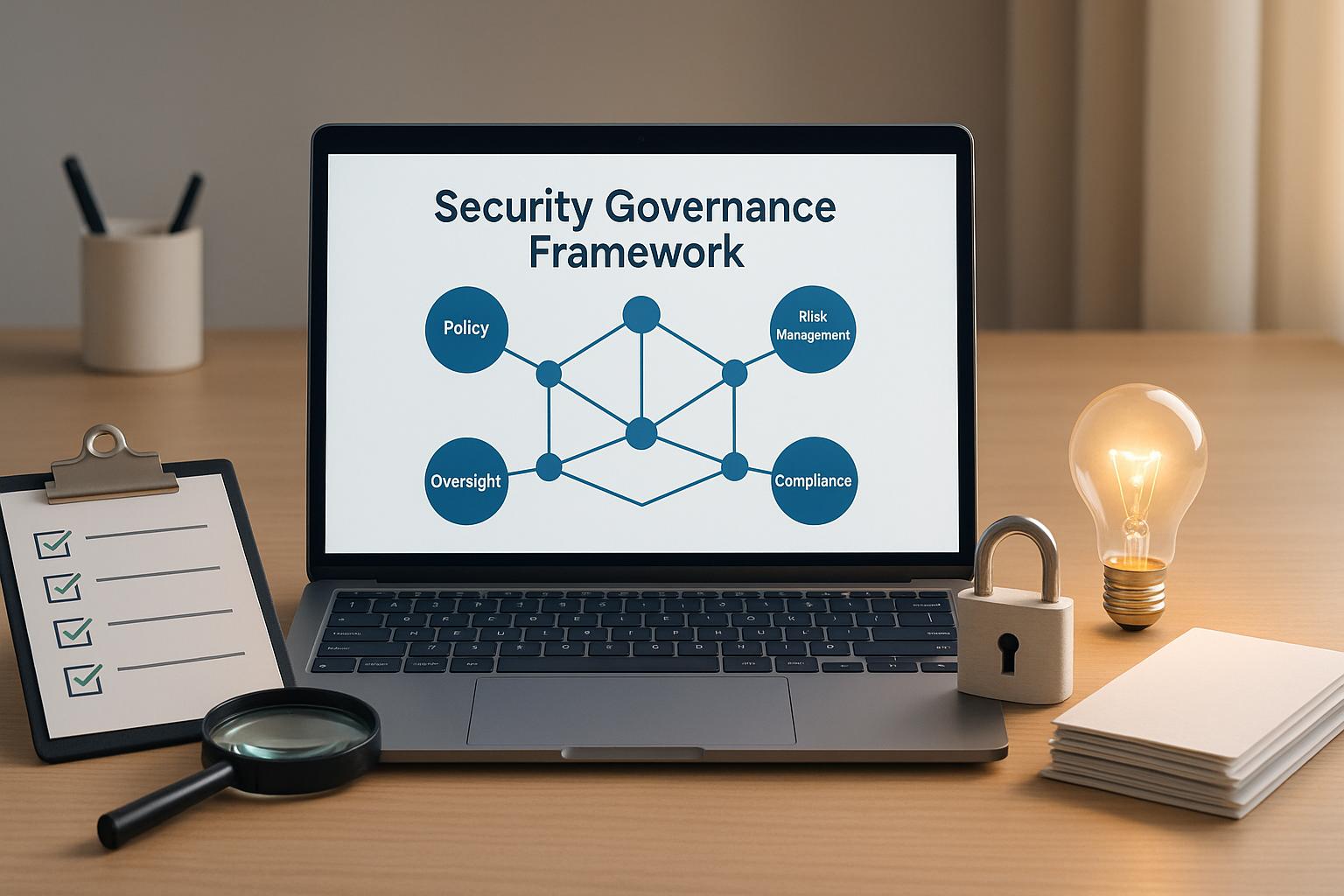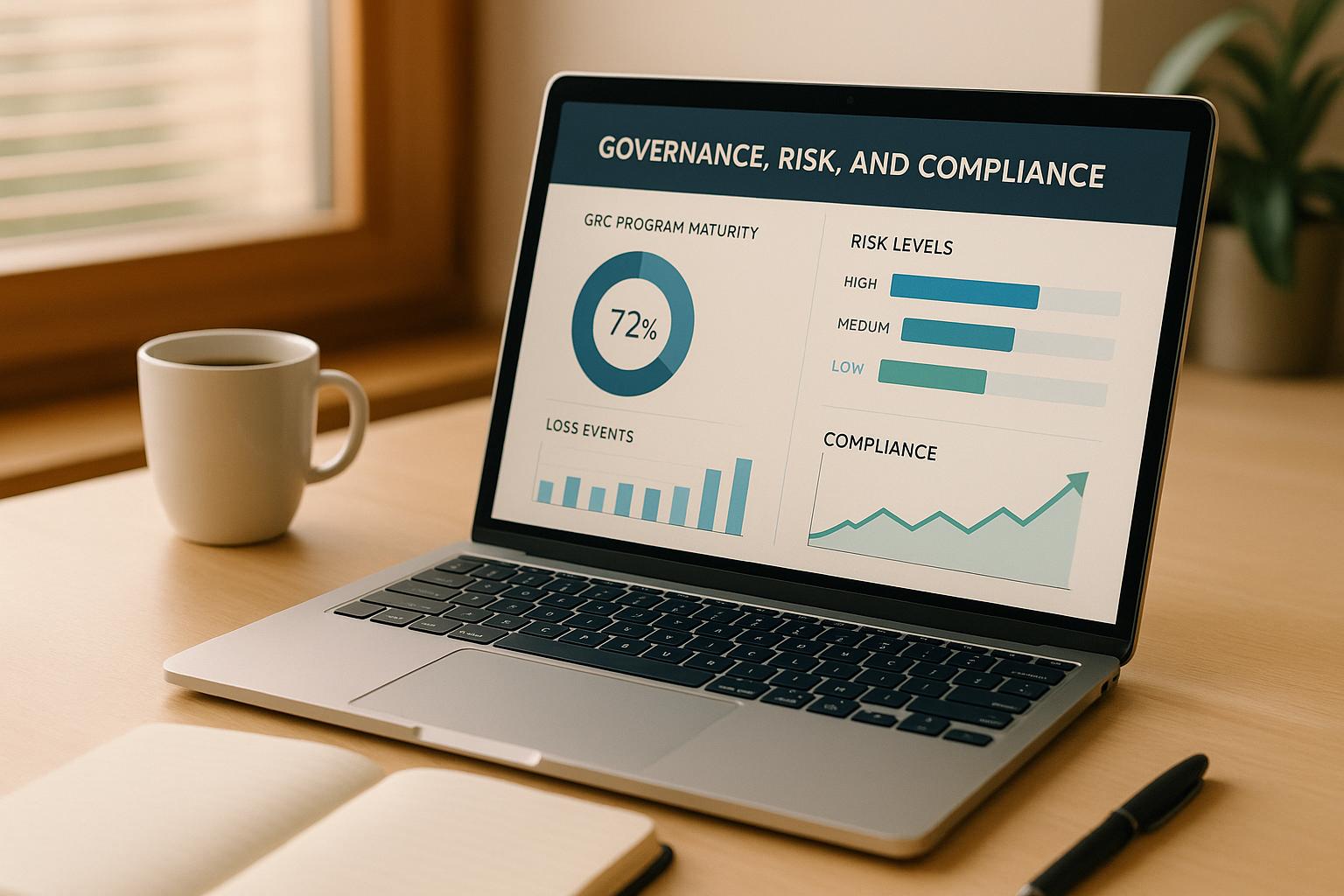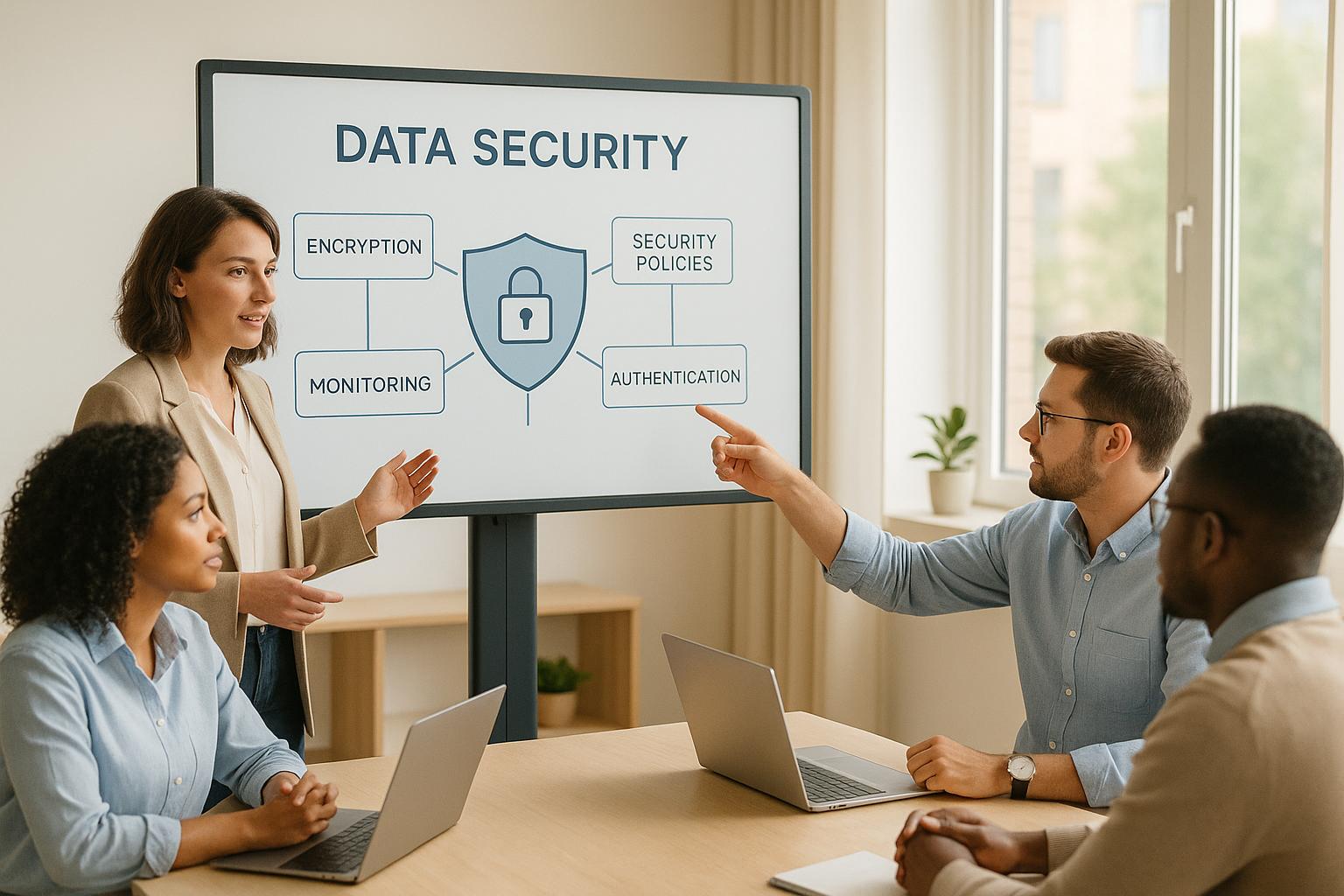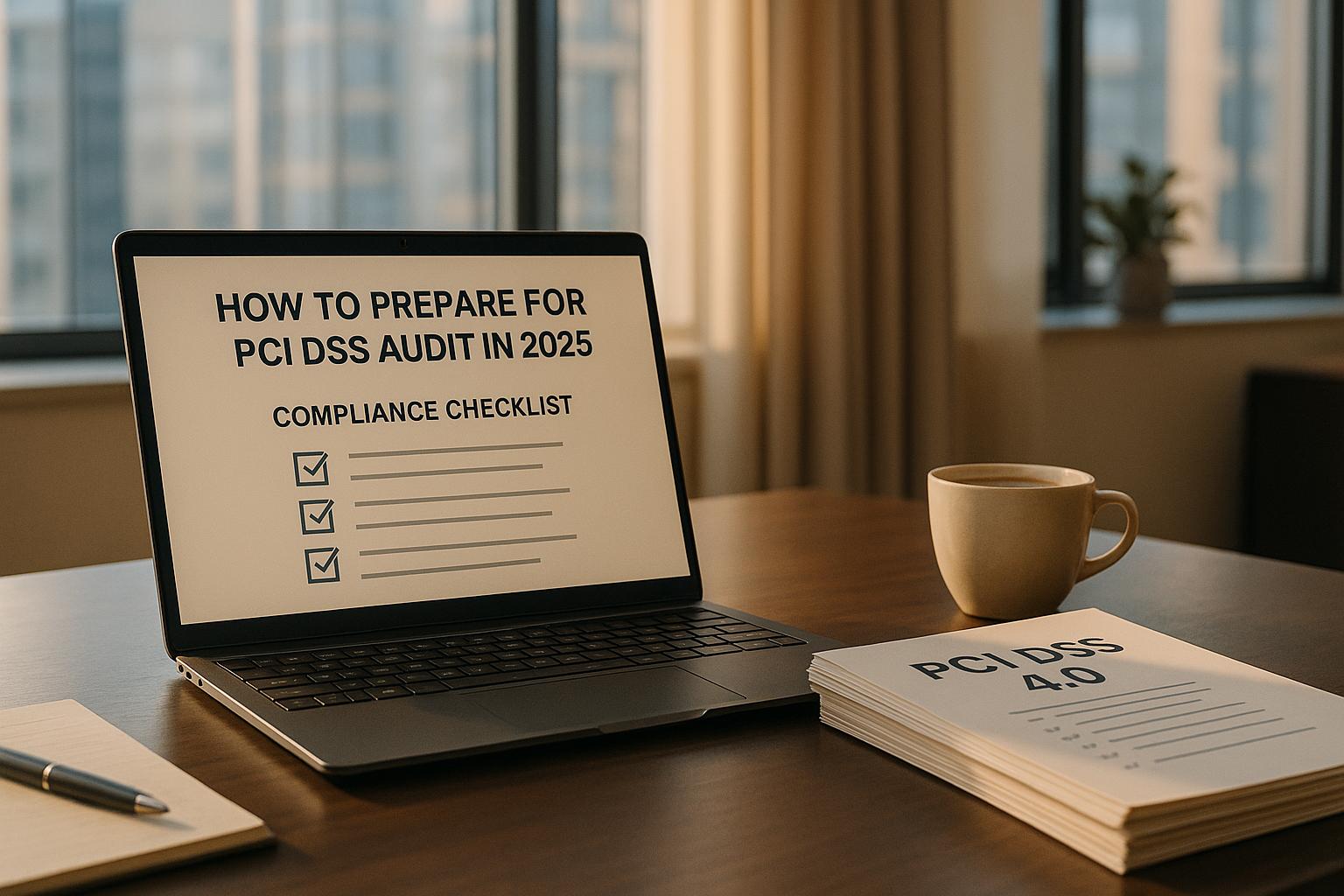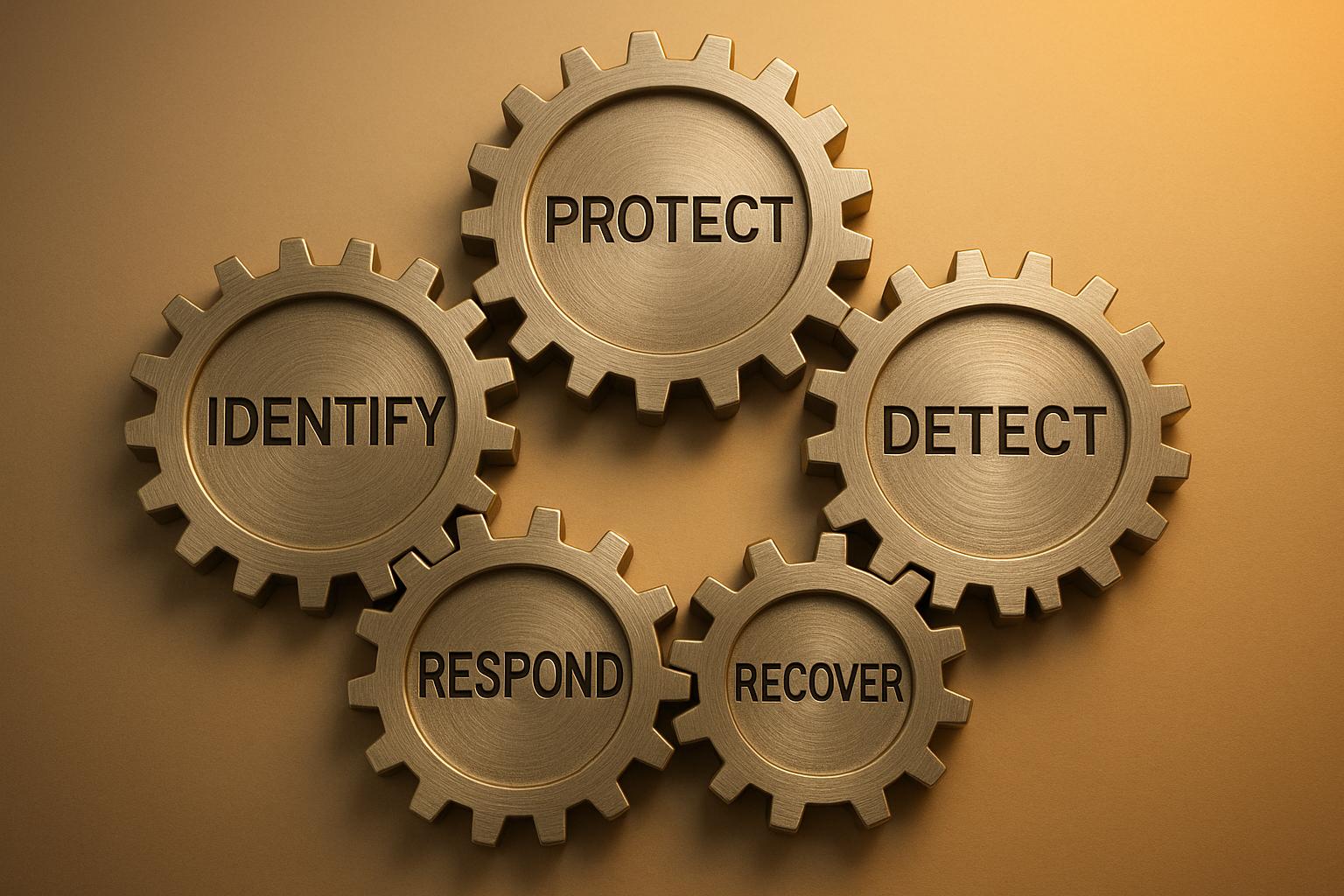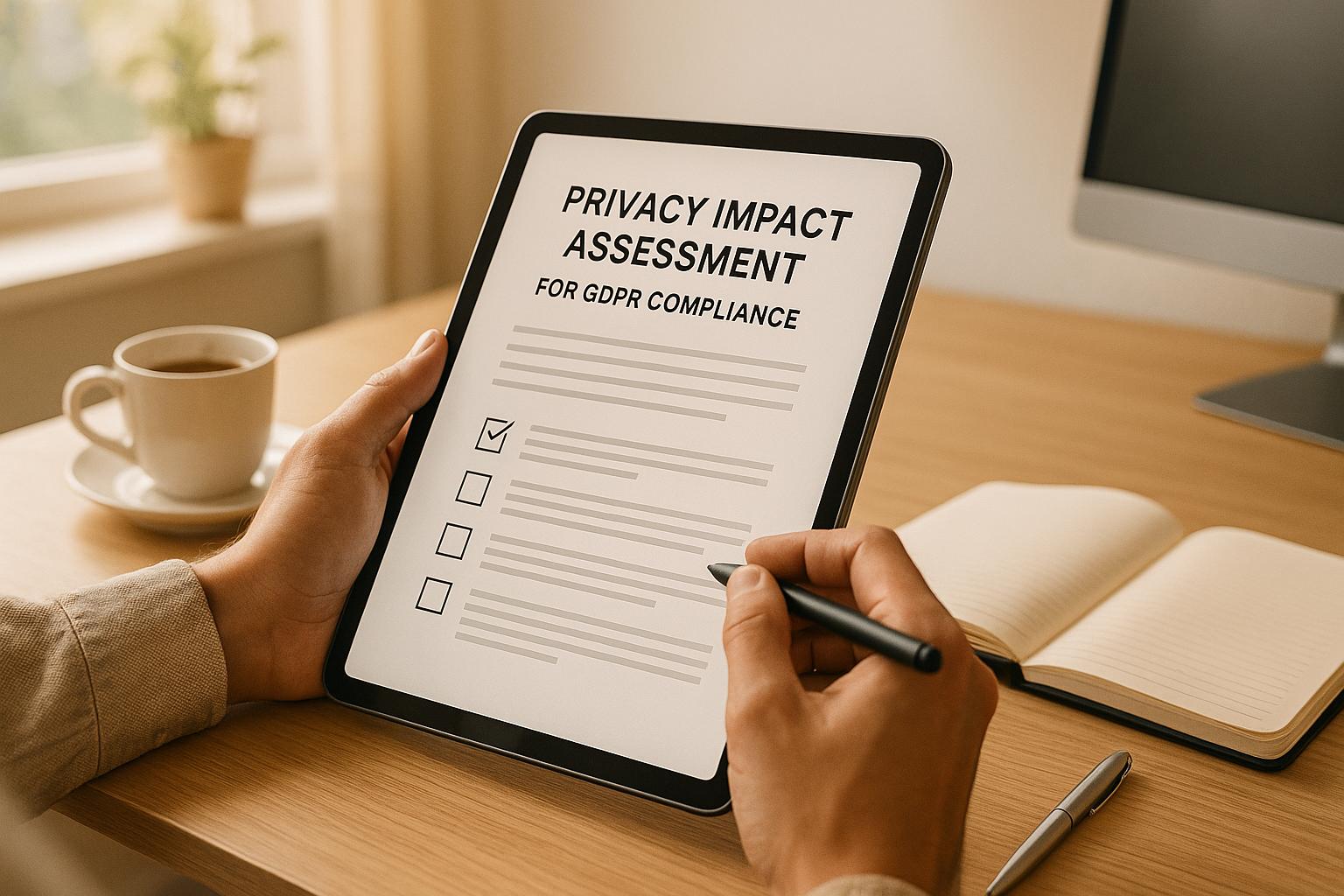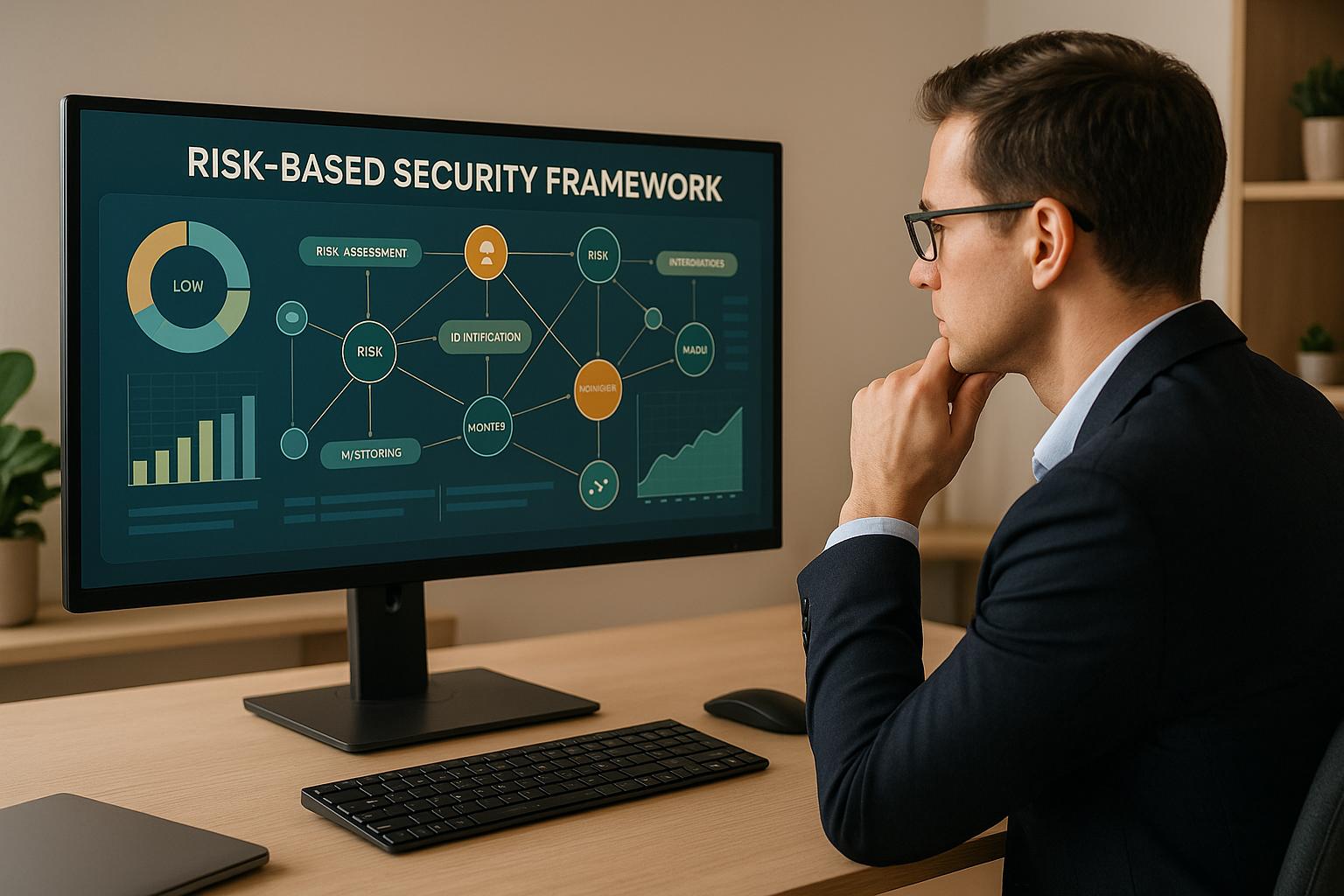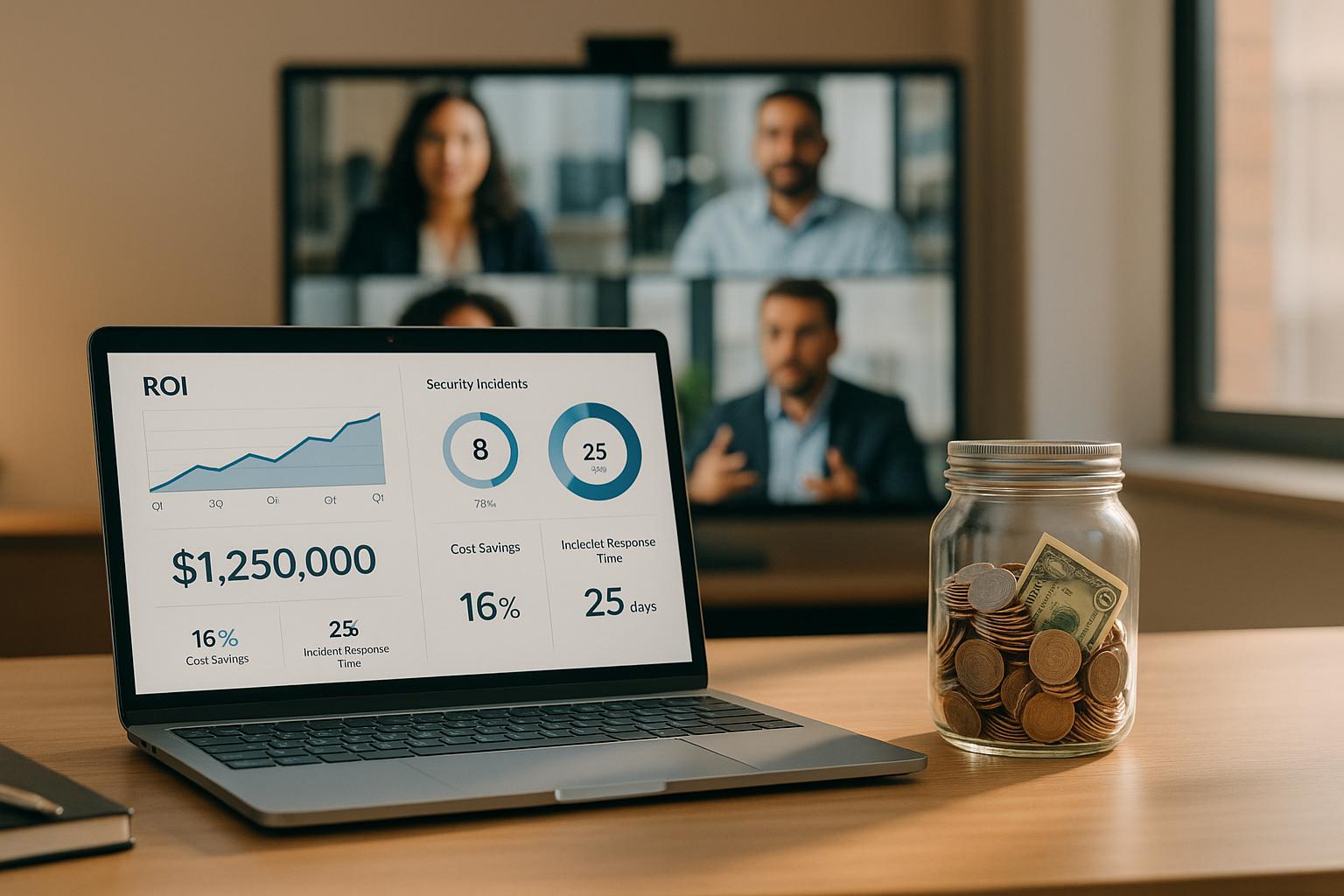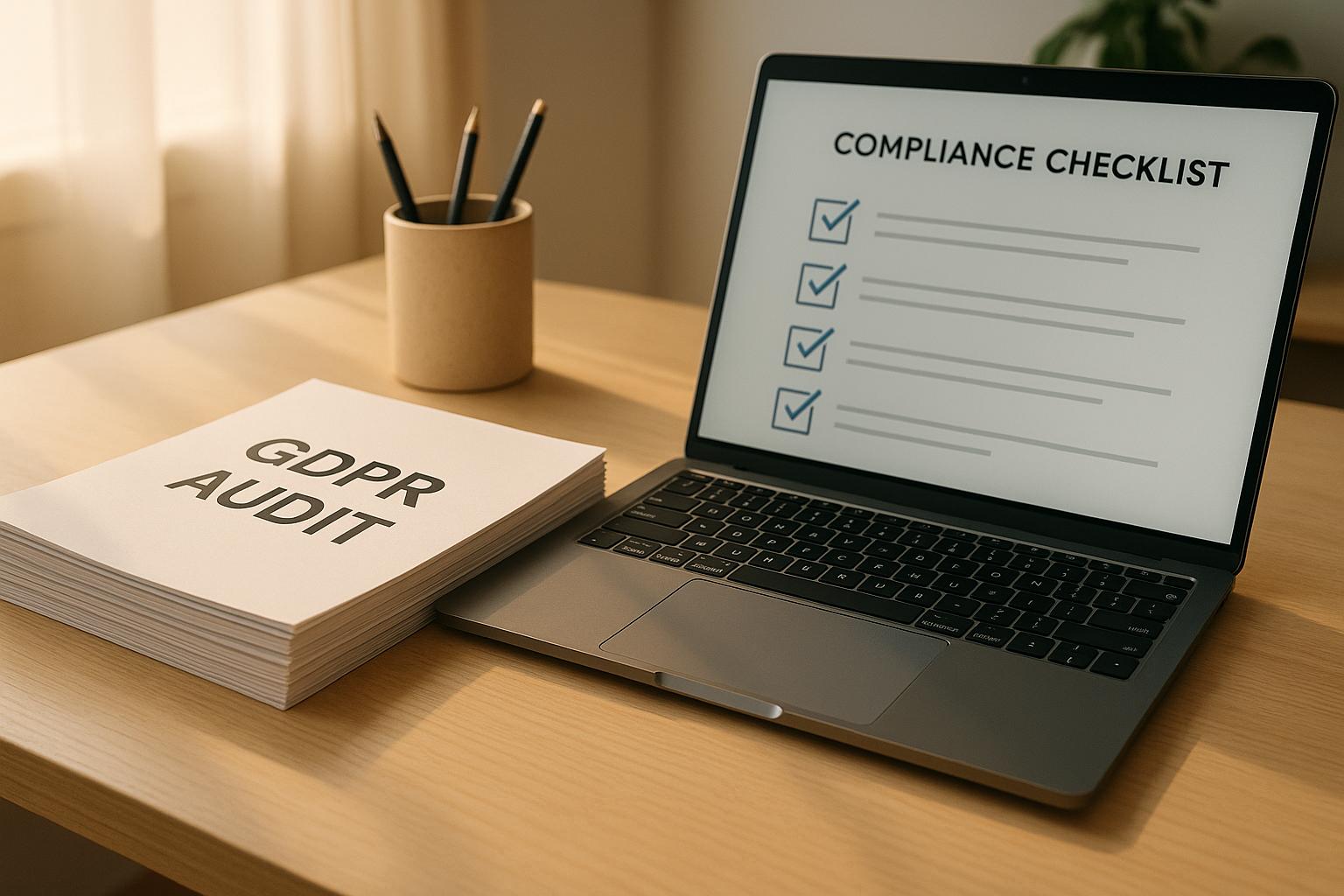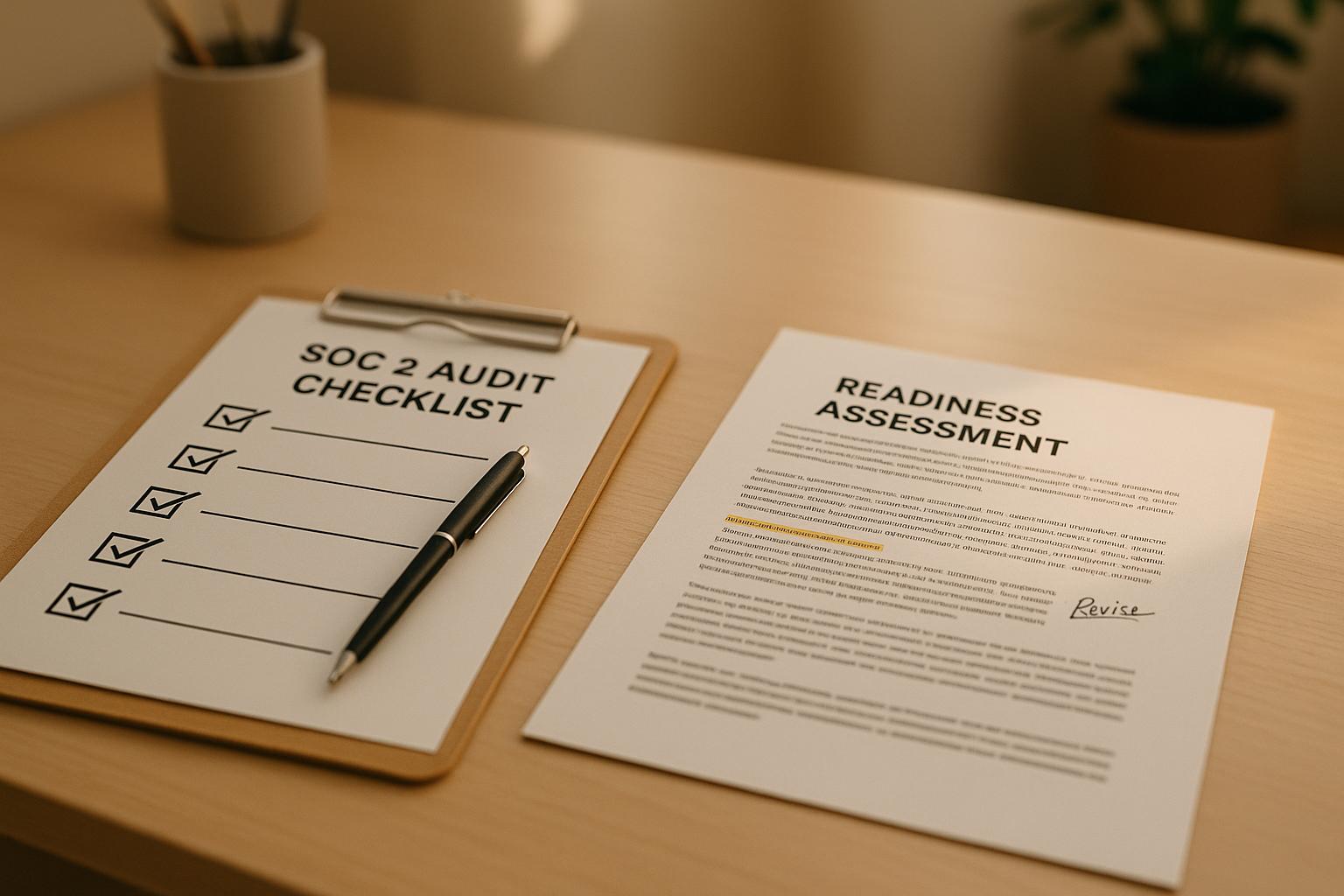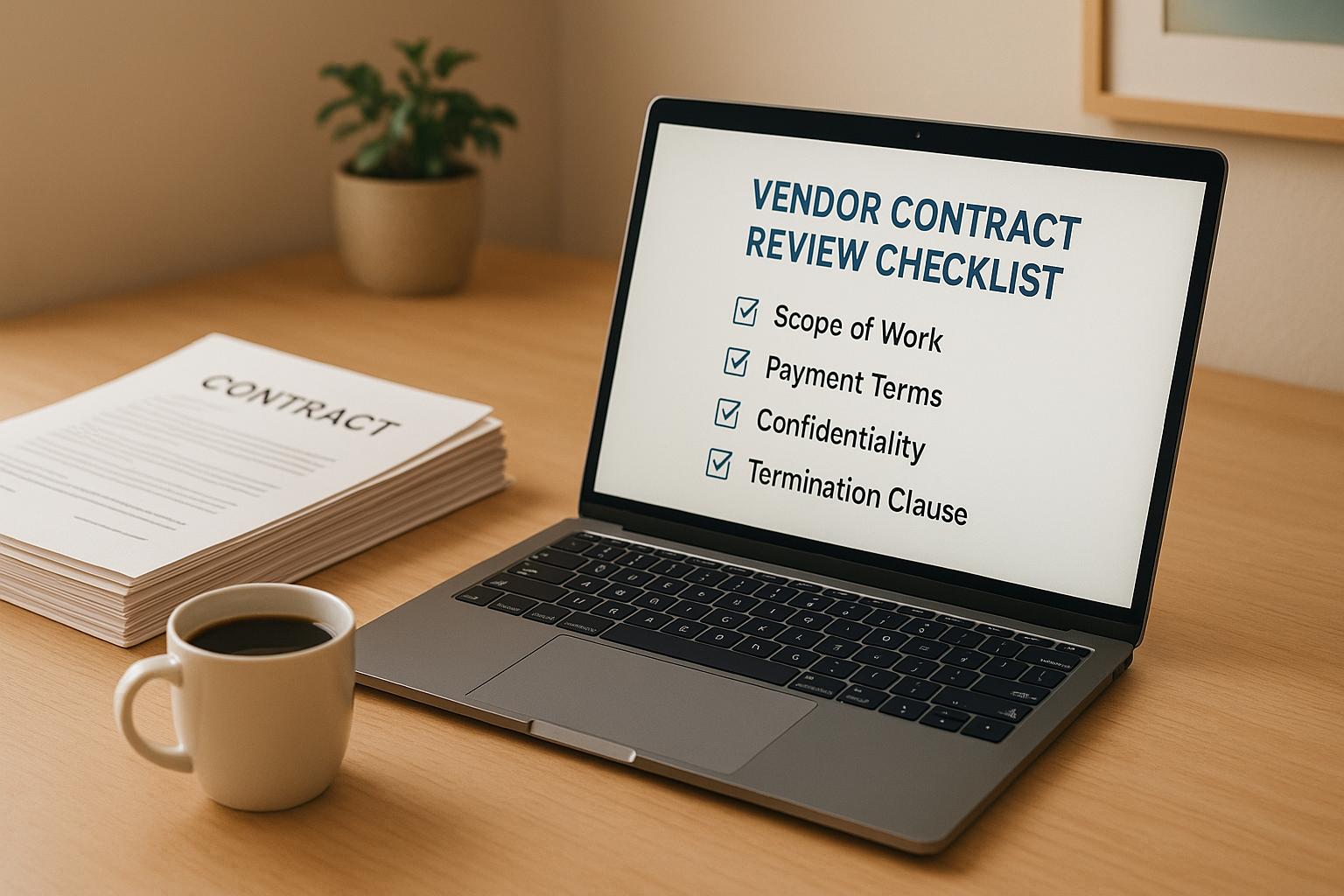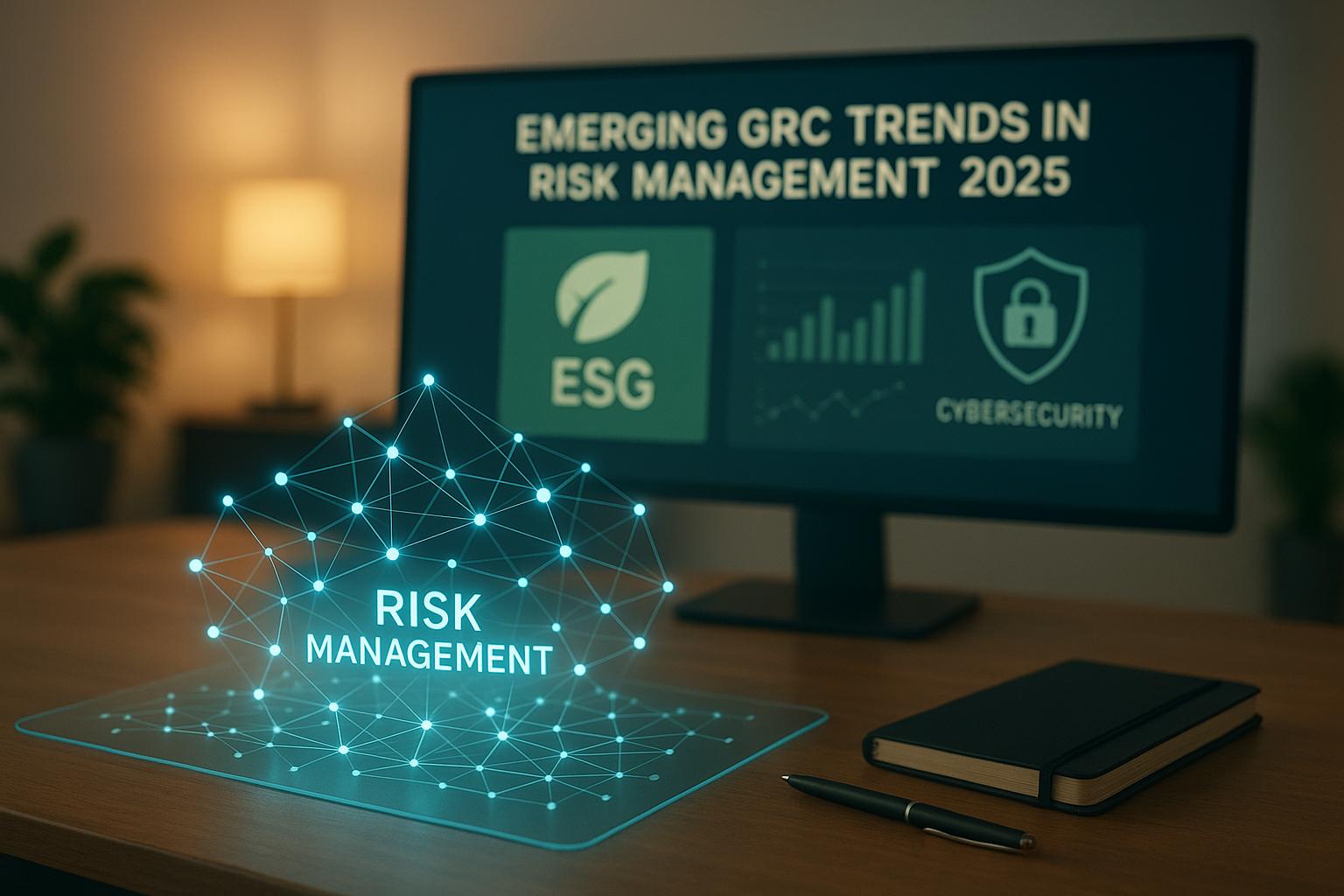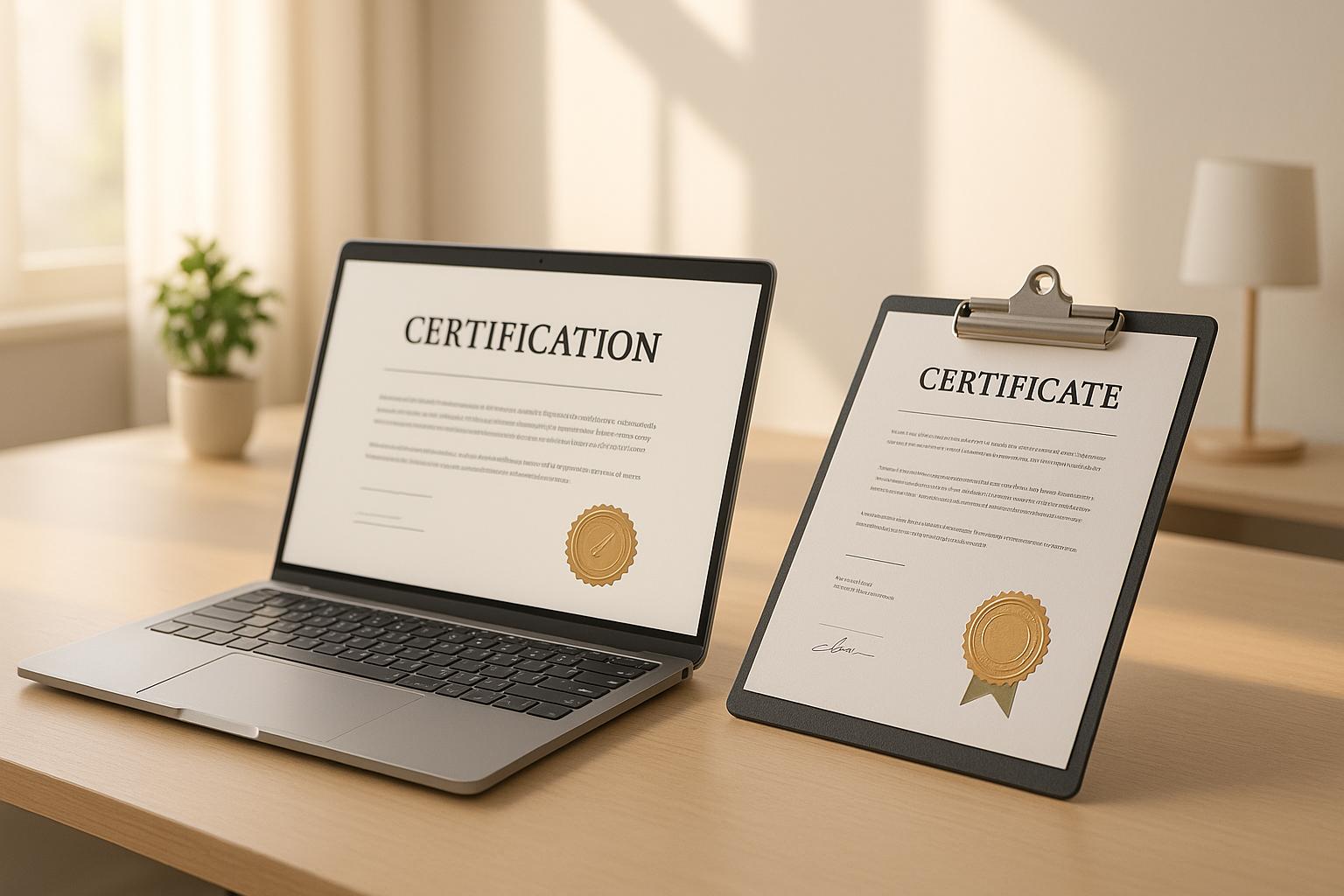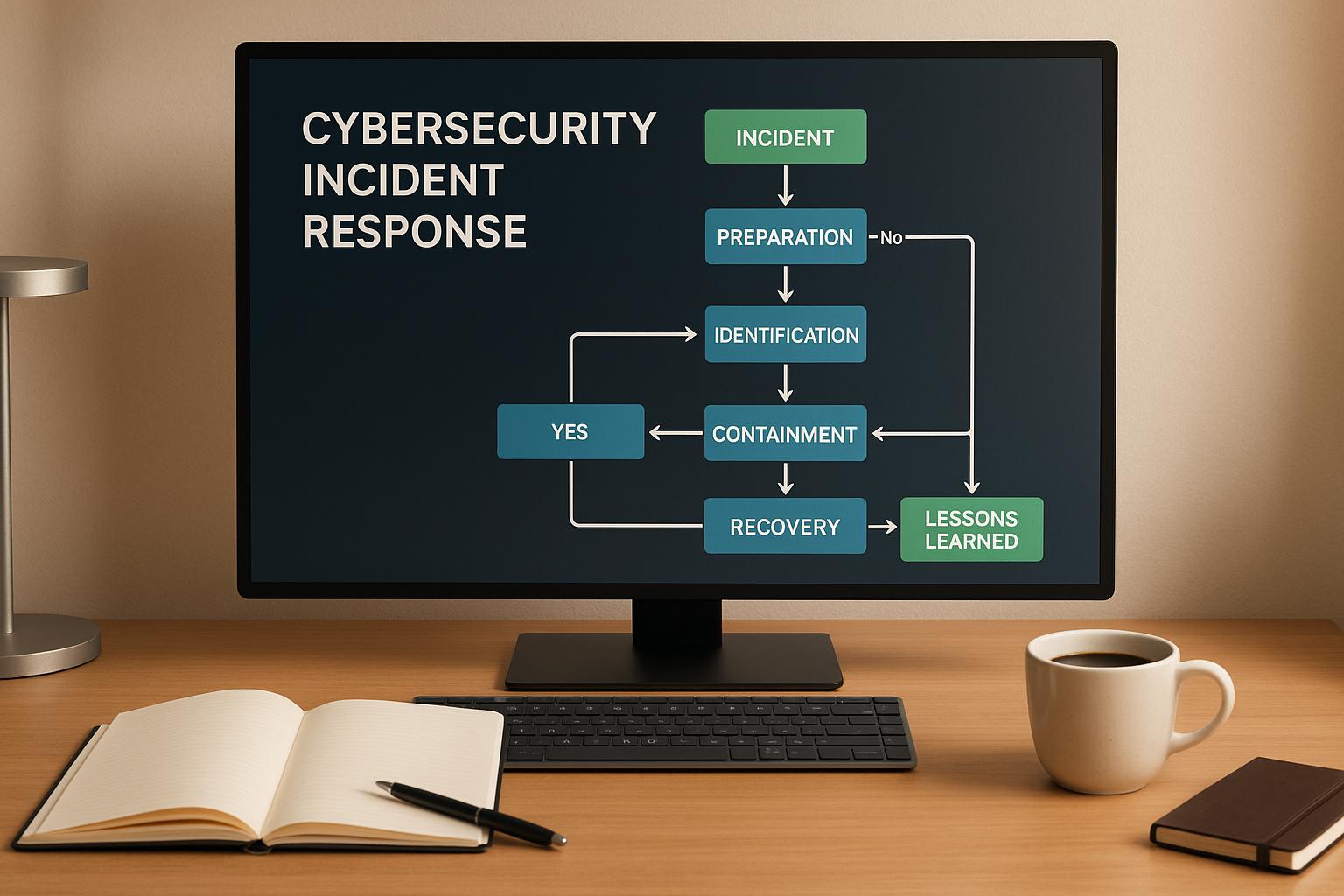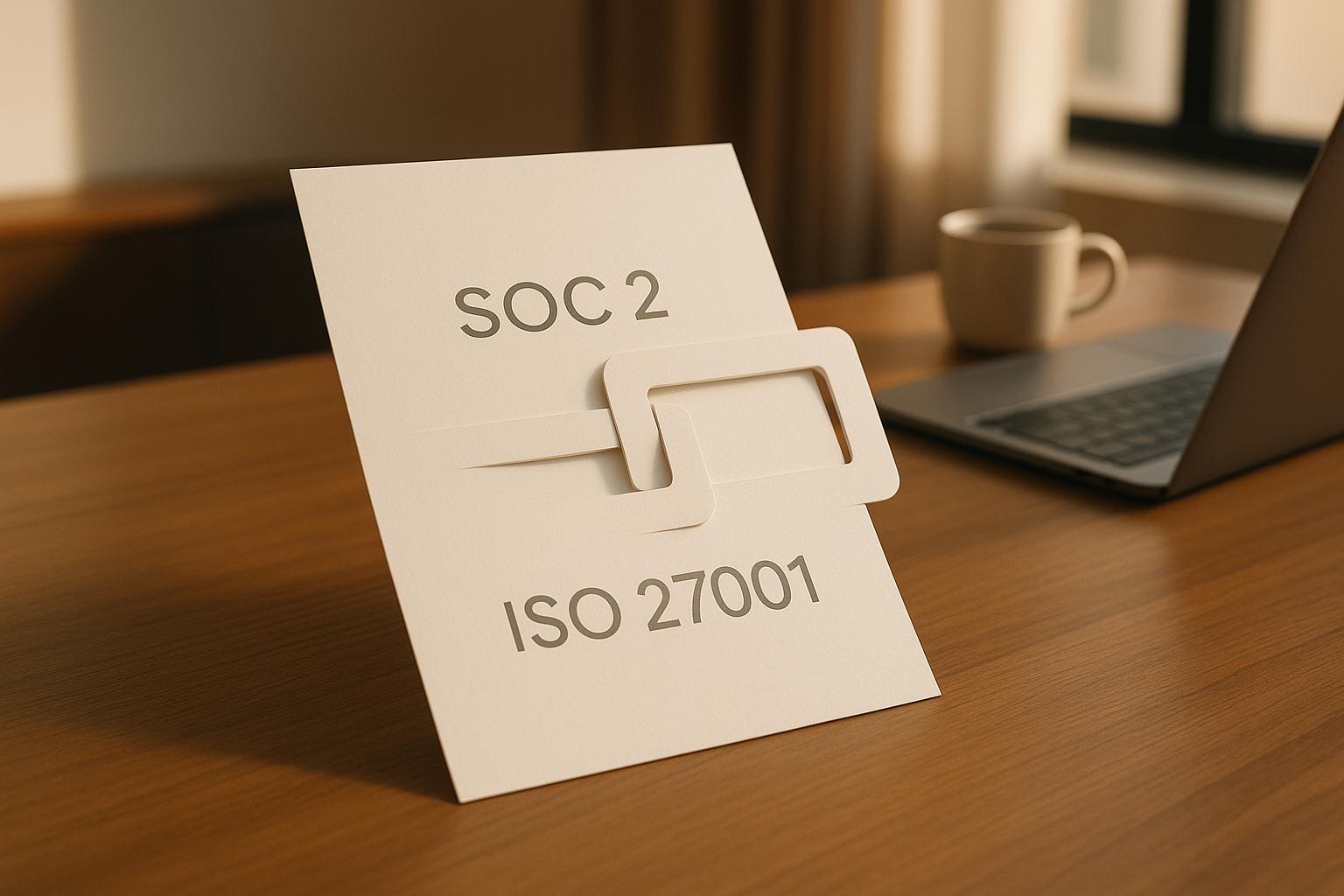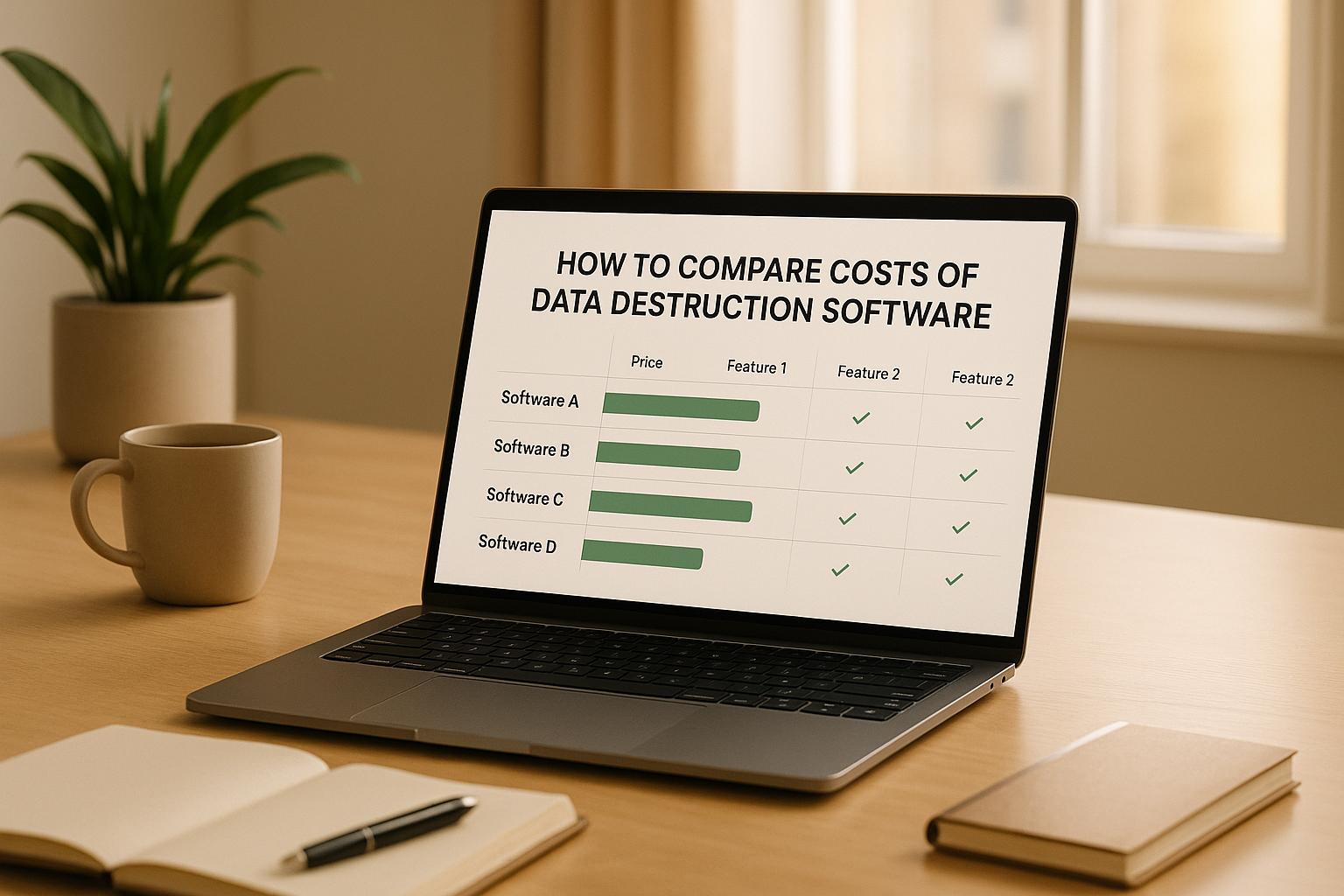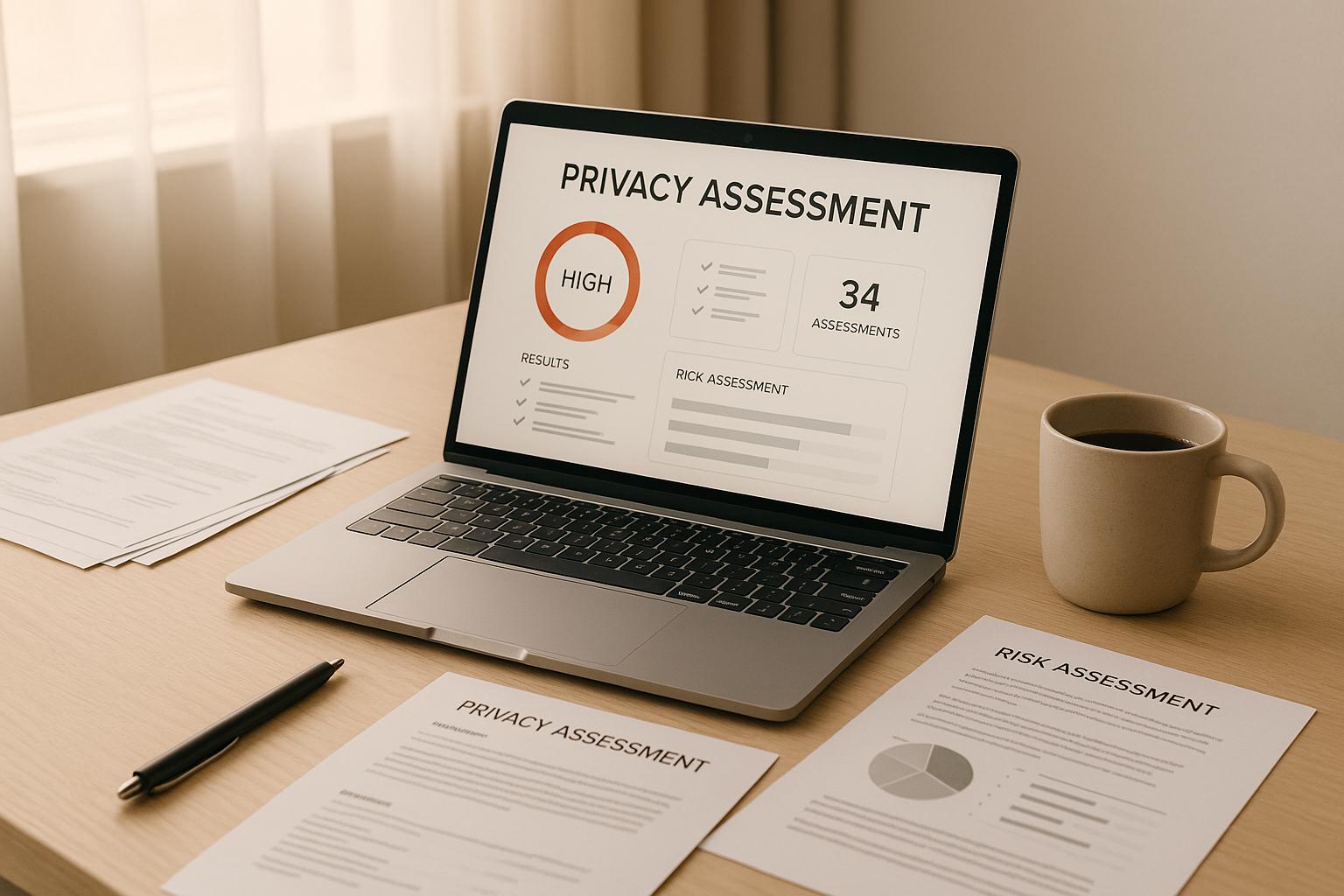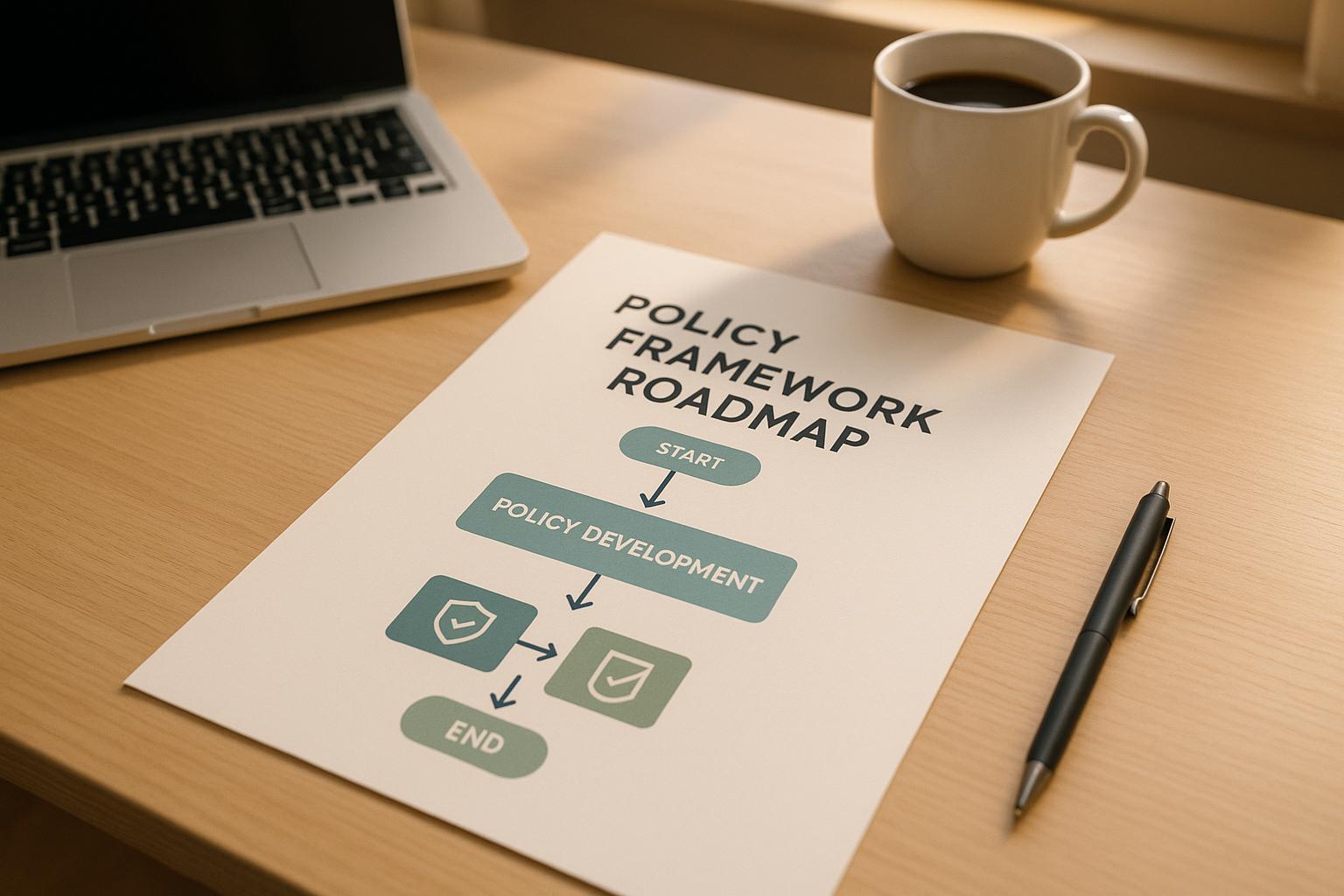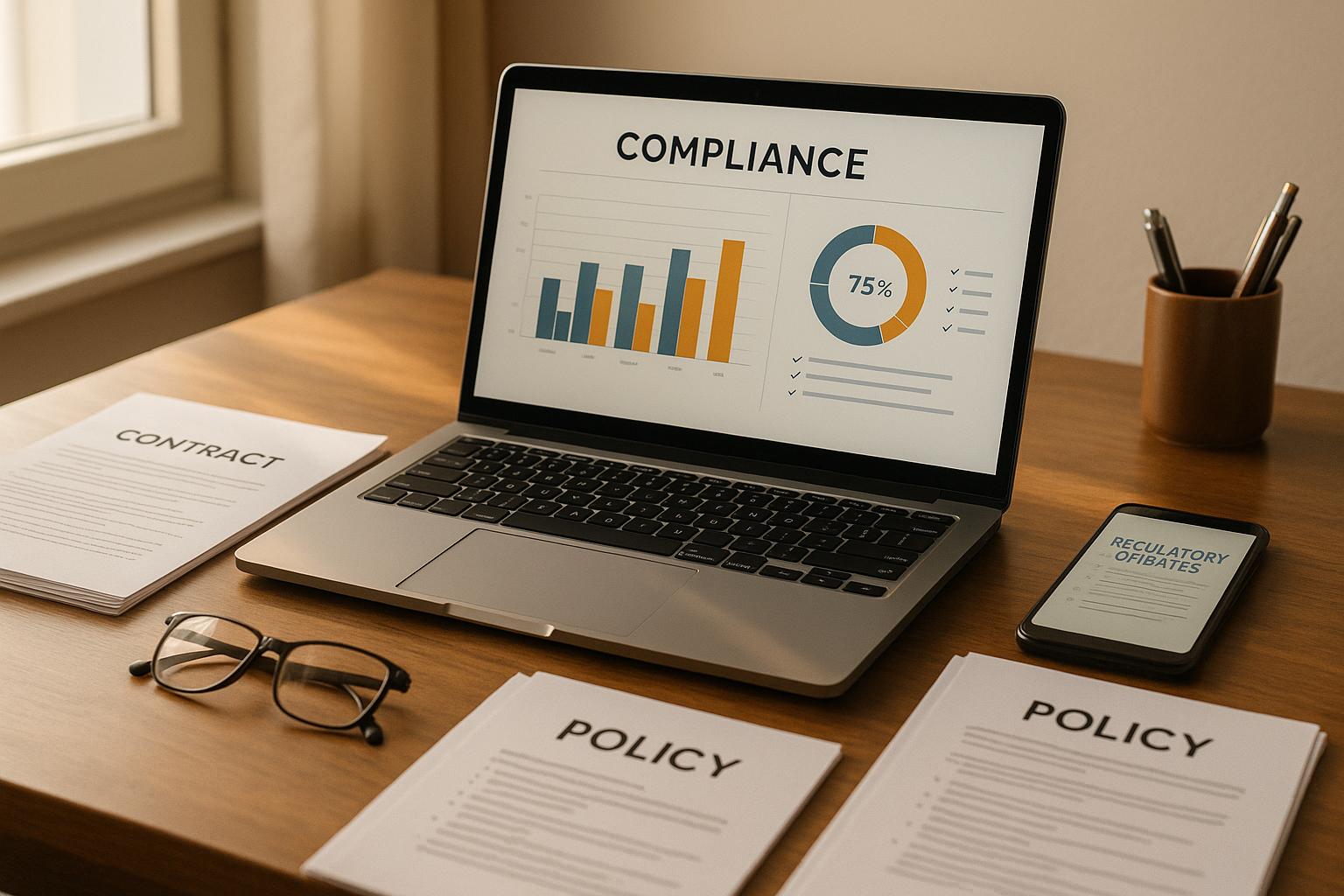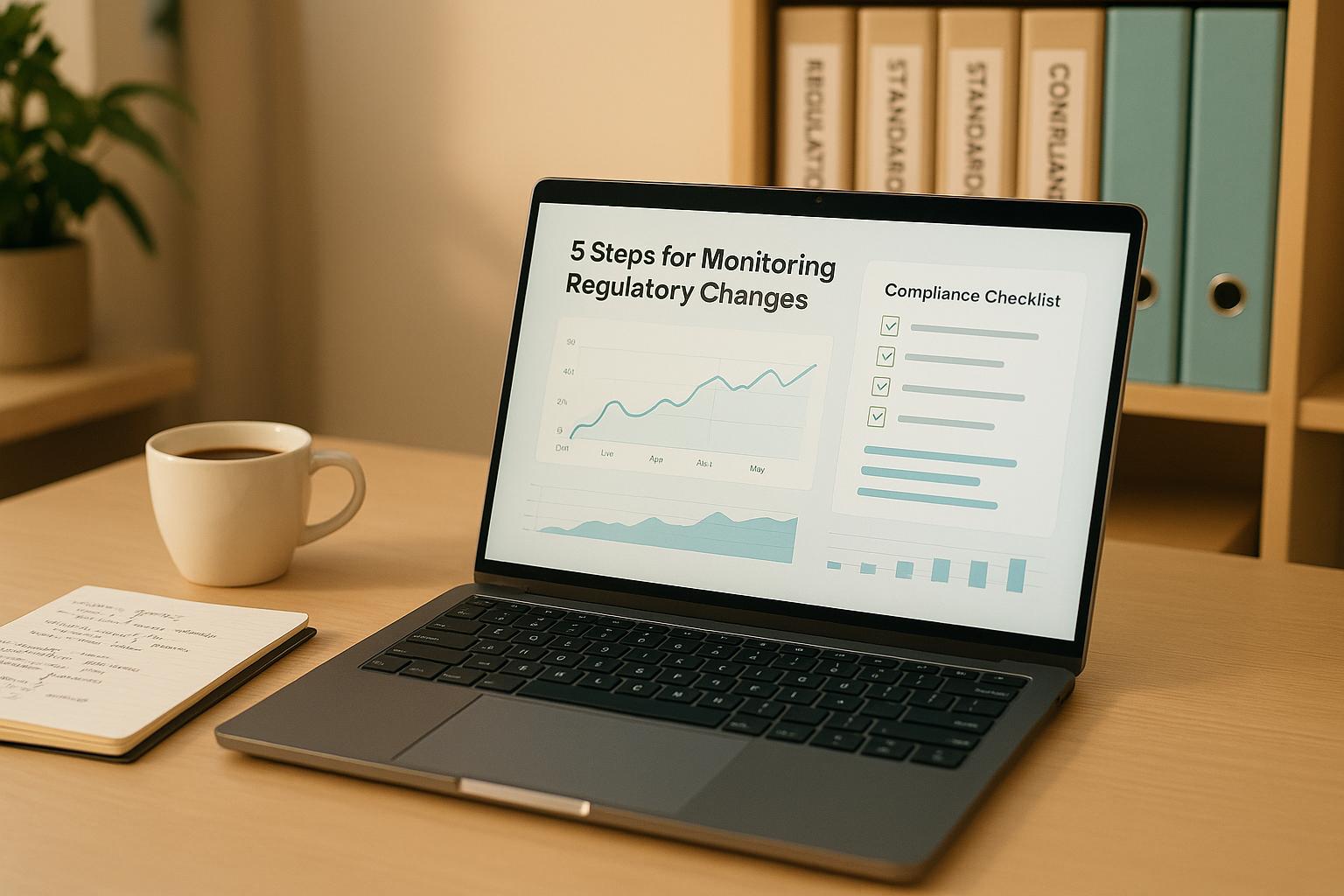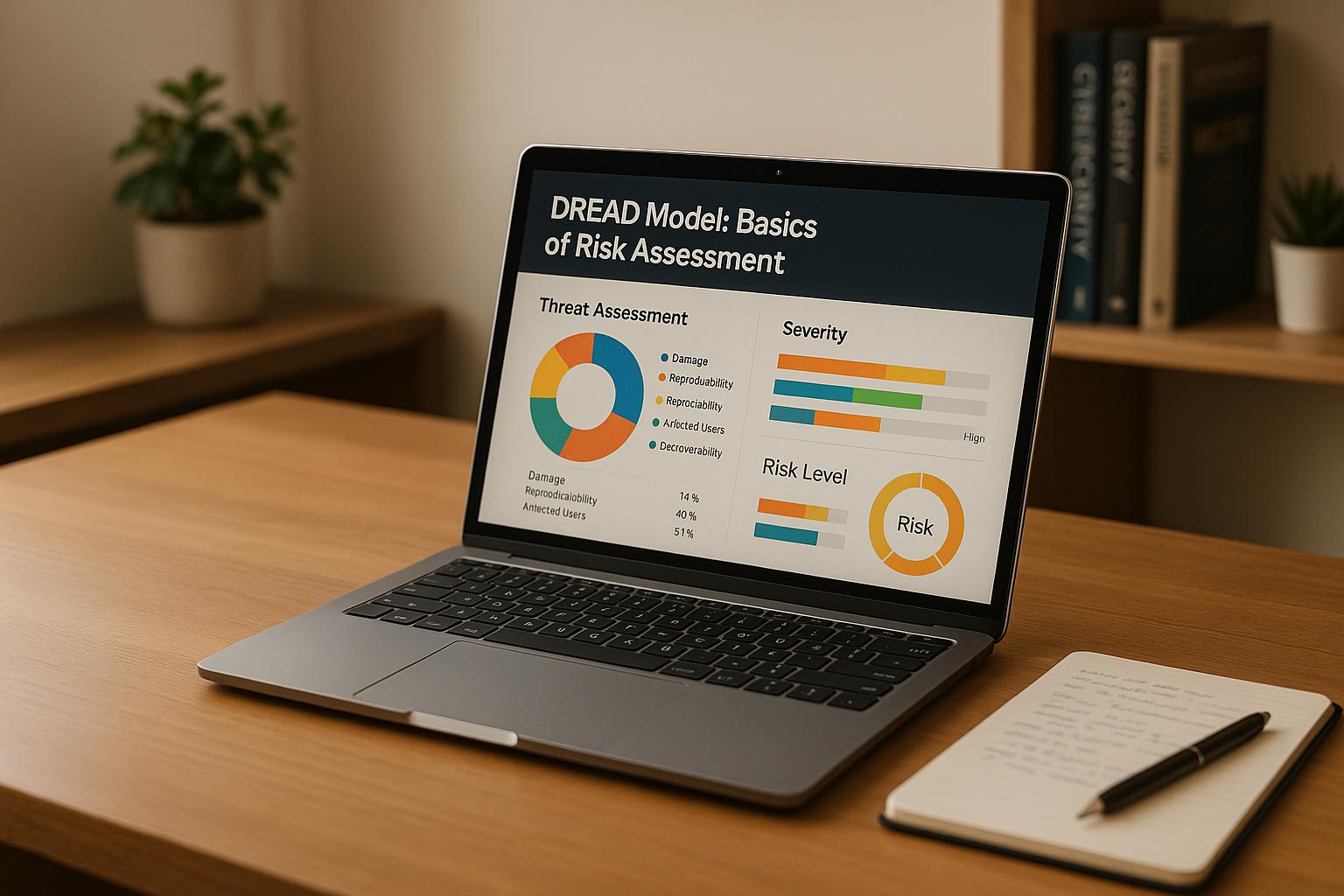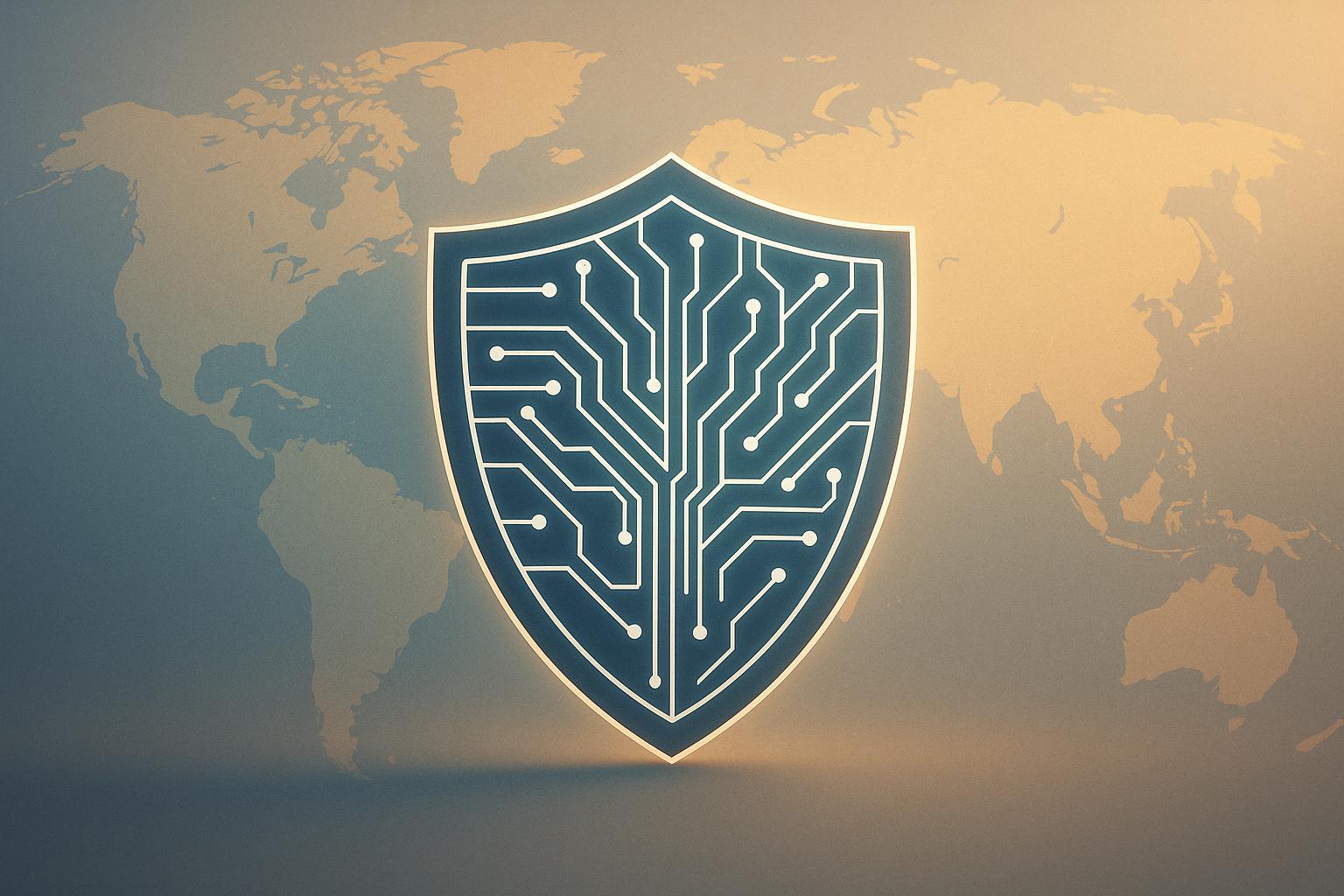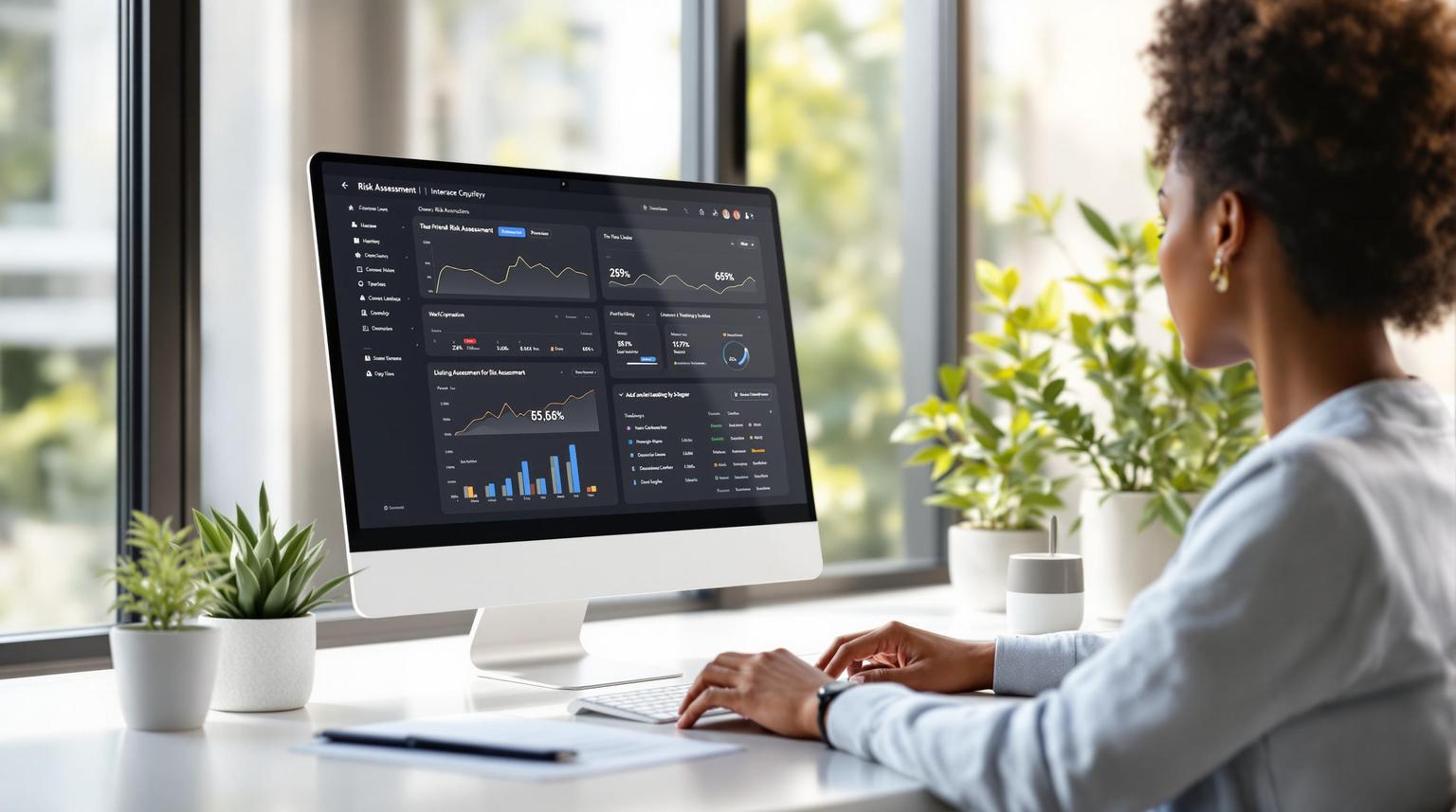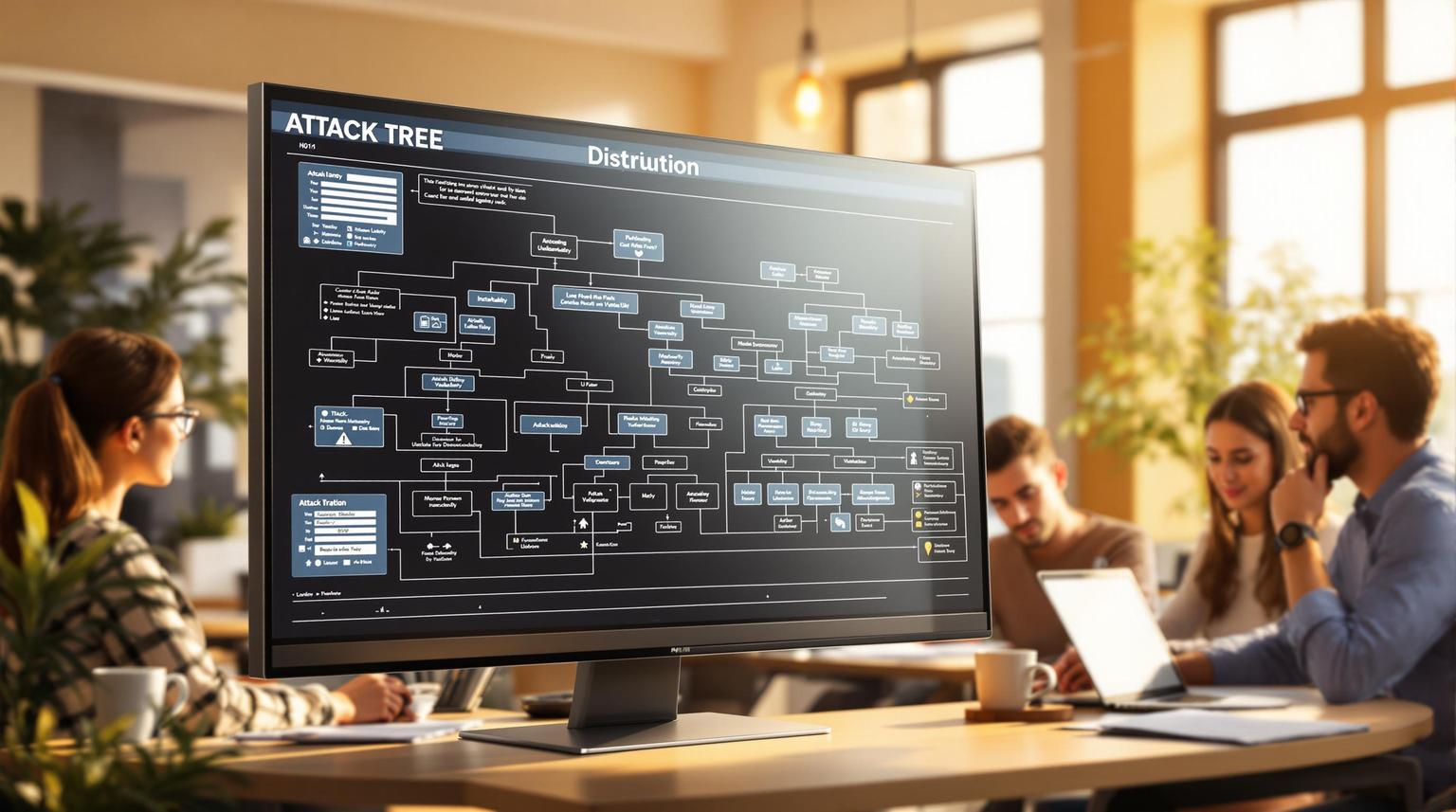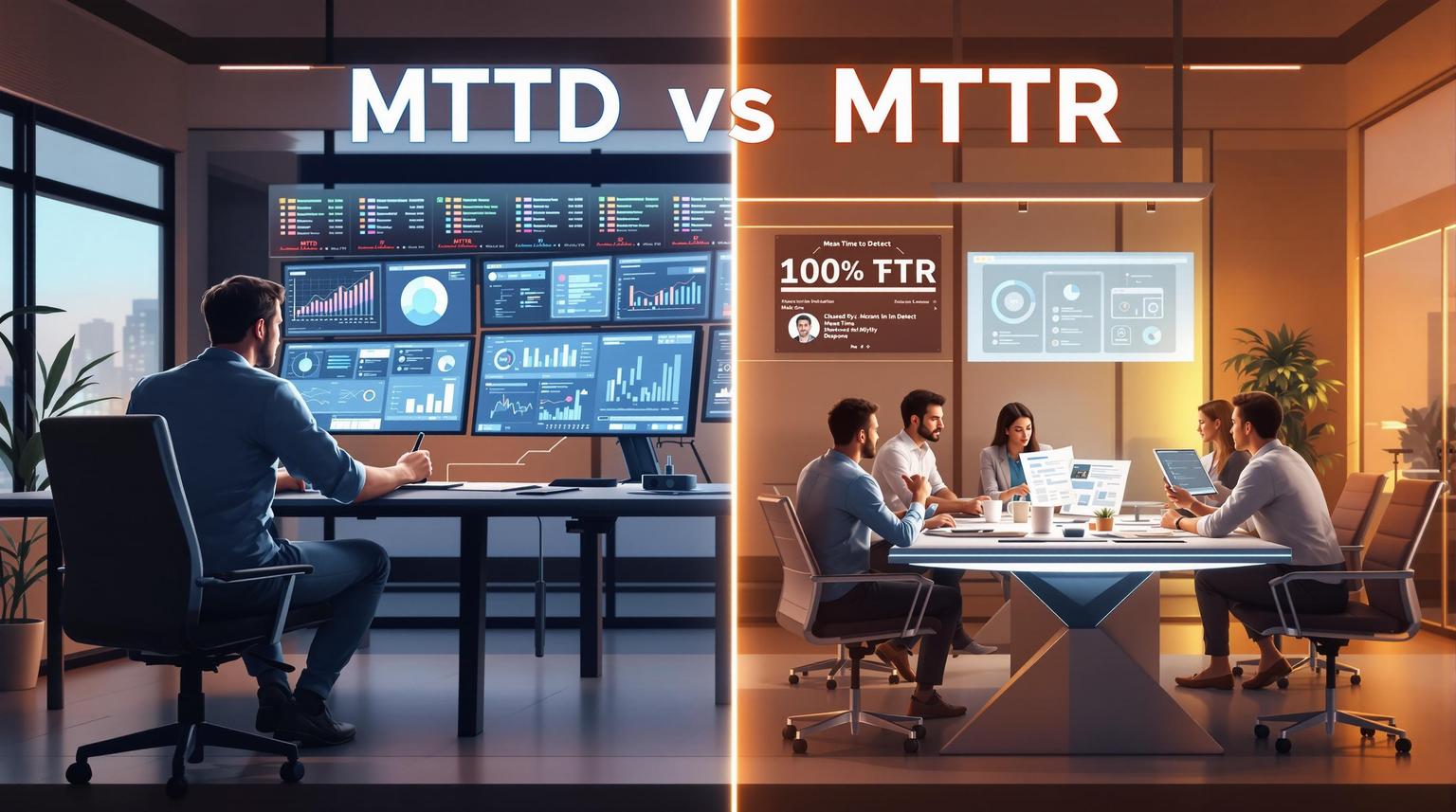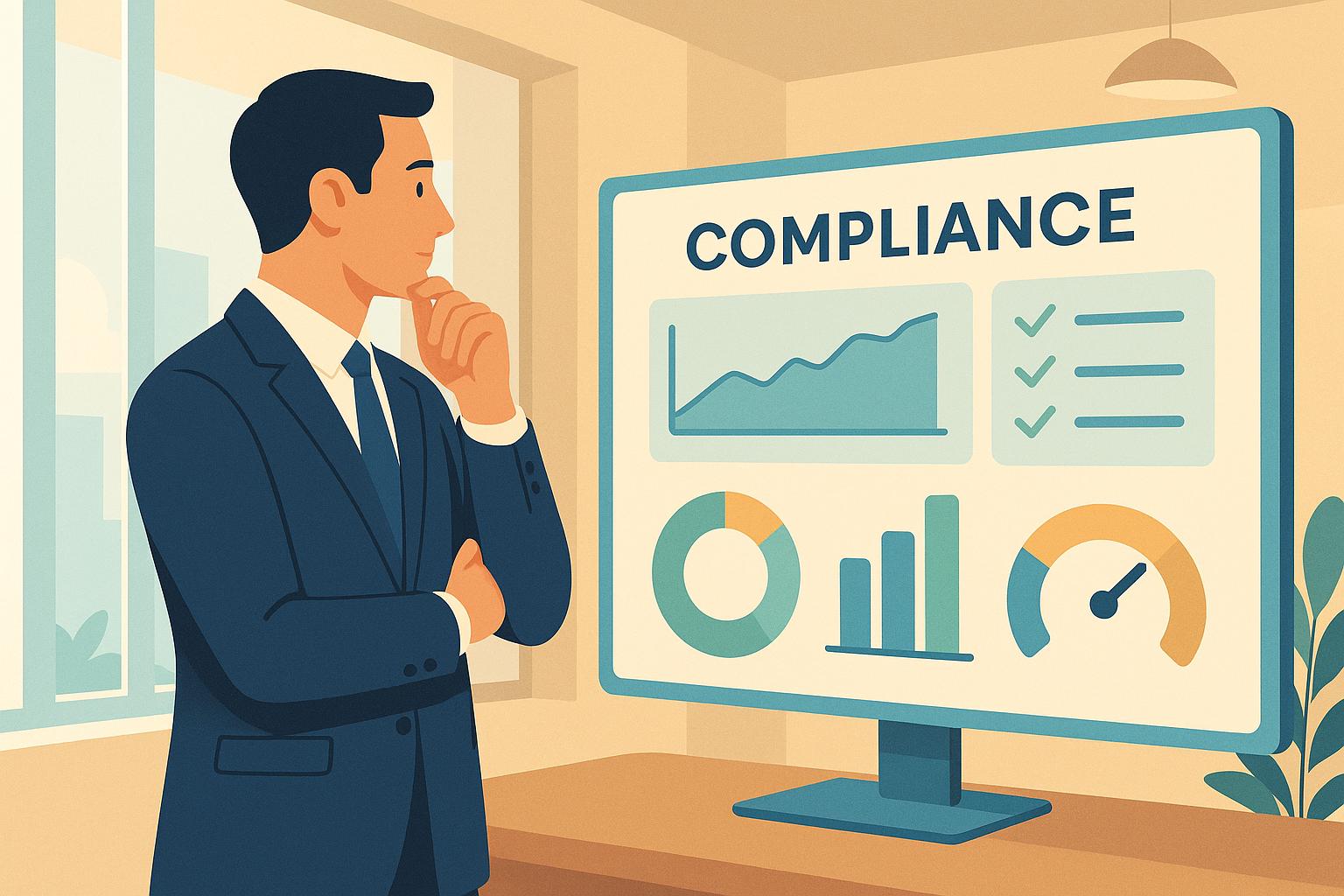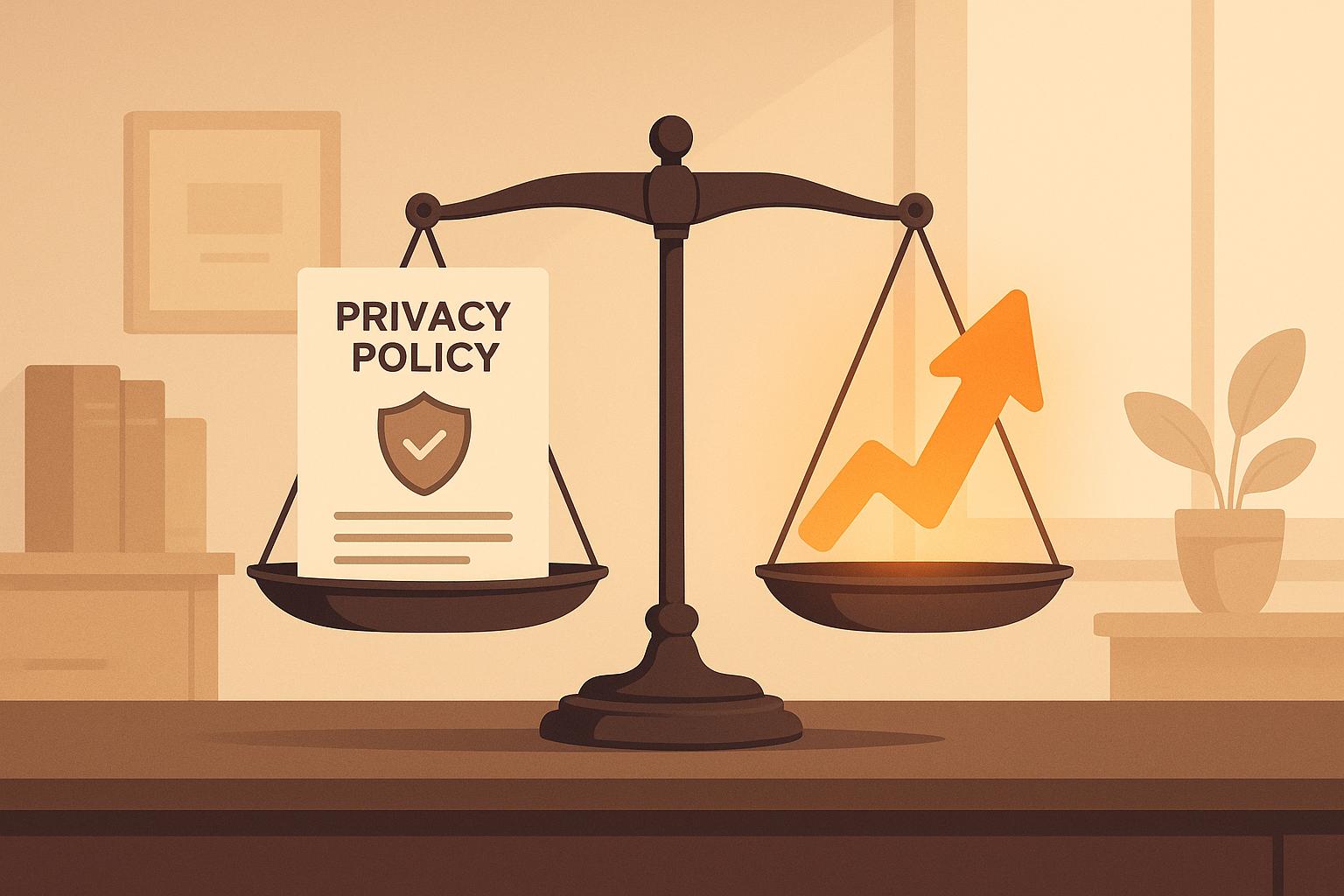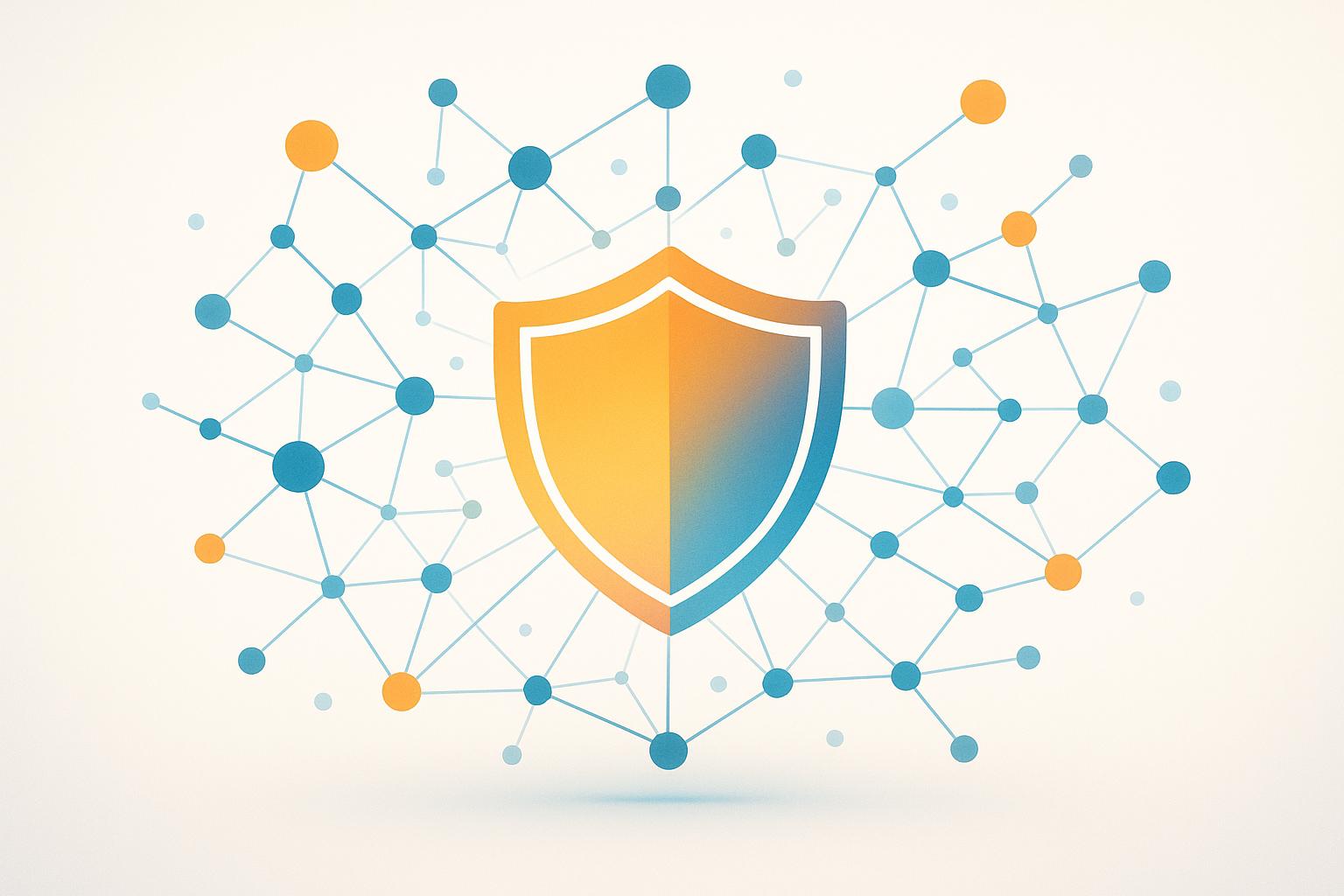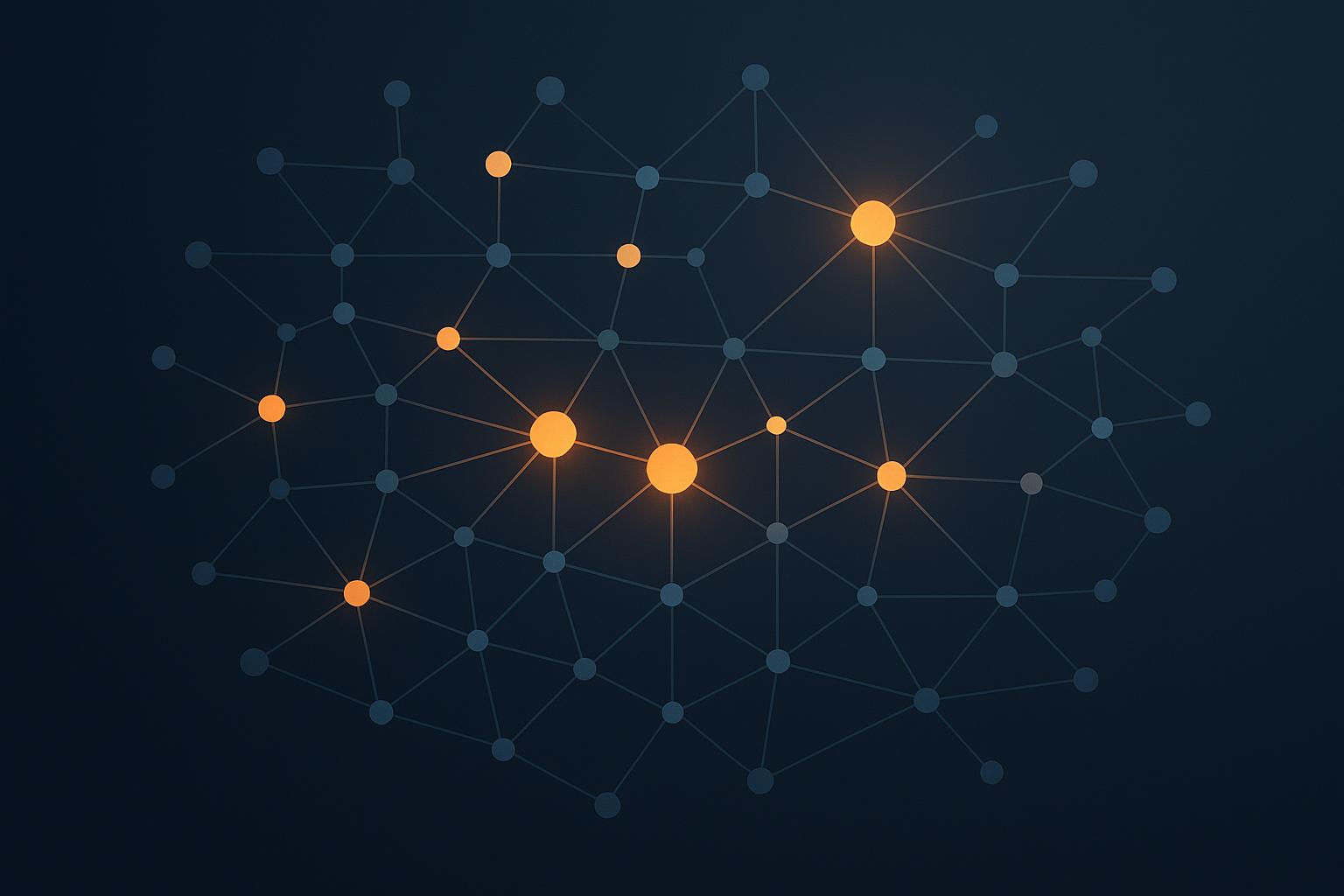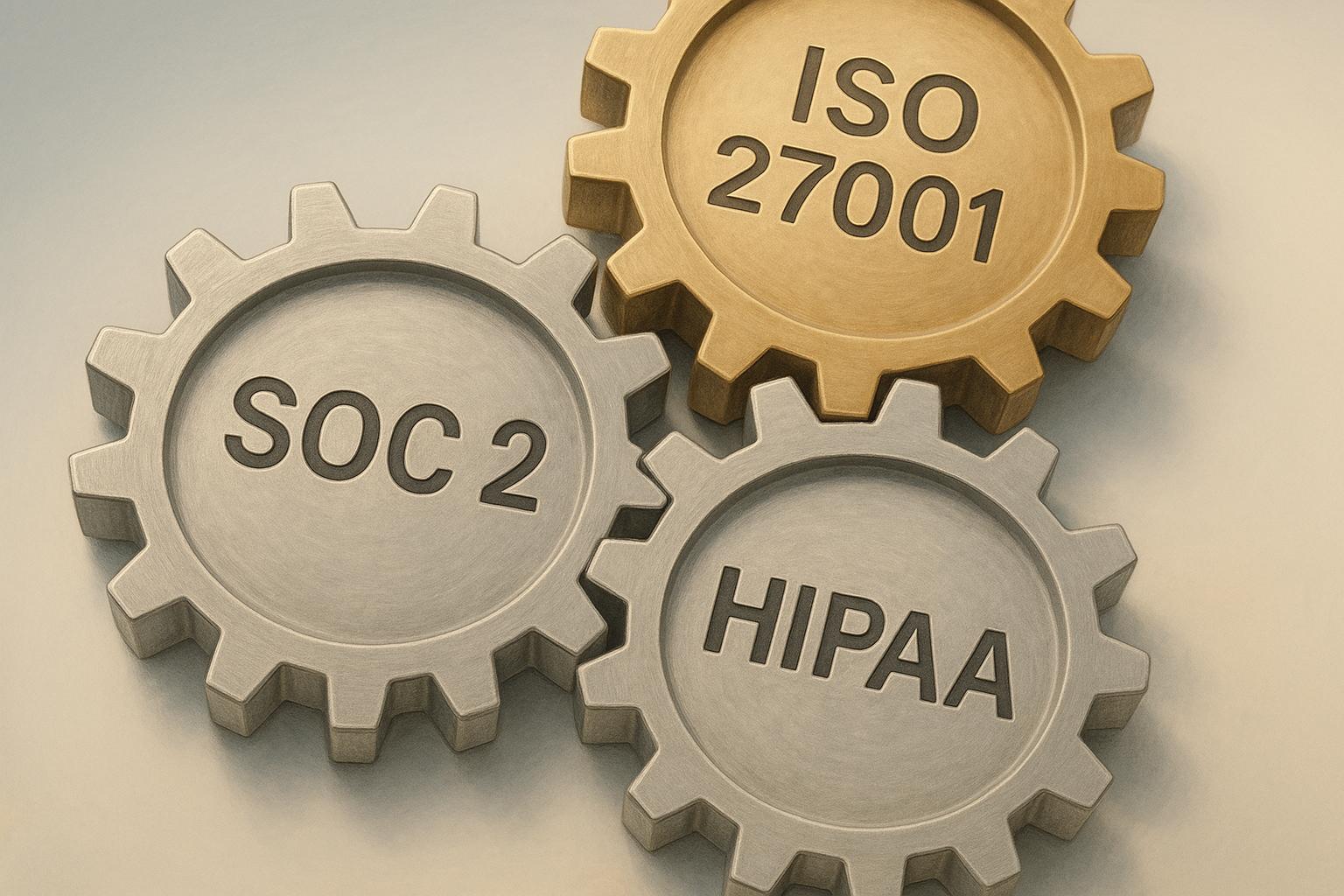
Choosing between SOC 2, ISO 27001, and HIPAA comes down to your industry, target market, and security priorities. Here's a quick overview to help you decide:
- SOC 2: Tailored for U.S.-based companies, especially SaaS and cloud providers. It's voluntary, focuses on customer data security, and is customizable.
- ISO 27001: A global standard for managing information security, ideal for businesses with international operations. It requires a structured Information Security Management System (ISMS).
- HIPAA: Mandatory for U.S. healthcare organizations and their partners. It strictly protects healthcare data (PHI) and enforces legal penalties for non-compliance.
Quick Comparison
| Framework | Focus Area | Legal Requirement | Target Audience | Cost (Est.) | Certification Timeframe |
|---|---|---|---|---|---|
| SOC 2 | Customer data security | No | SaaS, IT, cloud services | $10K–$60K per audit | 2–12 months |
| ISO 27001 | Full information security system | No | Global businesses, IT, finance | $10K–$50K per certification | 6–24 months |
| HIPAA | Healthcare data (PHI) | Yes | U.S. healthcare, insurers | Varies (penalties for non-compliance) | Ongoing compliance |
Each framework serves a distinct purpose. SOC 2 is great for U.S.-focused companies wanting flexibility. ISO 27001 offers international credibility and a comprehensive approach. HIPAA is non-negotiable for healthcare entities.
1. SOC 2
Purpose and Scope
SOC 2 is designed to ensure that third-party service providers handle client data securely and responsibly. Established by the American Institute of Certified Public Accountants (AICPA), this framework goes beyond basic security protocols to create a set of internal controls aimed at fostering trust between companies and their customers.
The framework centers around five key Trust Services Criteria: security, availability, processing integrity, confidentiality, and privacy. What sets SOC 2 apart is its flexibility - organizations can choose the criteria that best match their needs. This tailored approach helps businesses create internal systems that prioritize security while supporting their growth.
SOC 2 compliance is more than a technical checklist. It reflects a company’s dedication to safeguarding user data and maintaining robust internal controls. This is particularly relevant when you consider that the average cost of a data breach hit $4.88 million in 2024, marking a 10% increase from the previous year.
Applicability and Industry Focus
Although SOC 2 compliance isn’t a legal requirement, it’s quickly becoming a must-have for securing enterprise contracts, especially for SaaS companies and cloud service providers. The numbers back this up: the IT sector, including SaaS providers, leads the way with 45% of all SOC 2 certifications.
Other industries are catching on. Financial institutions account for around 20% of SOC 2 adoption, while healthcare organizations represent about 15%. However, some sectors, like robotics, are lagging - only 1% of American robotics companies are SOC 2 compliant. This signals significant opportunities for emerging tech industries to adopt stronger security practices.
A great example of SOC 2’s value can be seen in the EdTech sector. Cloud-based software providers like Frontline use SOC 2 certification to securely serve thousands of educational organizations. Industries with strict regulations - such as finance, healthcare, education, and government - are the most likely to demand SOC 2 compliance. For companies targeting these markets, SOC 2 is often a competitive advantage.
Now that we’ve covered its industry relevance, let’s break down the steps to achieve SOC 2 compliance.
Compliance Process and Certification
SOC 2 compliance results in an attestation report following an audit, rather than a formal certification. There are two types of SOC 2 audits: Type 1, which evaluates control design at a specific point in time, and Type 2, which assesses both design and operational effectiveness over a 6-12 month period. Most companies aiming to showcase their commitment to security choose Type 2, as it demonstrates sustained adherence to best practices.
The process requires implementing 70 to 150 controls, depending on the scope and chosen Trust Services Criteria. Key steps include defining the audit scope, documenting policies and procedures, and hiring a licensed CPA auditor. The auditor then reviews the scope, creates a project plan, tests the controls, and delivers the final report.
SOC 2 Type 2 reports must be renewed annually, ensuring that security practices stay up-to-date. Its adaptability allows businesses to customize controls to fit their unique needs, making SOC 2 particularly appealing for companies that operate outside traditional compliance frameworks.
2. ISO 27001
Purpose and Scope
ISO 27001 is often seen as the benchmark for managing information security. It helps organizations establish and maintain an Information Security Management System (ISMS) - a structured approach to protecting data by ensuring its confidentiality, integrity, and availability. This framework is designed to evaluate both the design and performance of an ISMS, offering a systematic way to manage security.
Unlike SOC 2, which focuses on verifying that specific security controls are in place, ISO 27001 provides a more comprehensive framework for managing data security through an operational ISMS. Interestingly, about 80% of ISO 27001’s criteria overlap with SOC 2, but ISO 27001 takes it a step further by tailoring security measures to the unique needs of an organization.
Applicability and Industry Focus
ISO 27001 certification is relevant for businesses of all sizes and industries that deal with sensitive information. While it’s particularly useful for companies managing customer data, its adoption has grown among non-IT sectors seeking robust data protection.
Data breaches continue to be a major concern. In 2023, the global average cost of a data breach reached $4.45 million, a 15% increase over the past three years, with 6.41 million data records compromised worldwide. Industries that benefit significantly from ISO 27001 certification include:
- IT and Technology Firms, constantly battling cyber threats.
- Financial Institutions, where ransomware attacks in the sector surged from 55% in 2022 to 64% in 2023.
- Healthcare Organizations, such as HealthEC LLC, which experienced a data breach affecting nearly 4.5 million individuals.
- Government Agencies, frequent targets of advanced cyberattacks.
- Other Sectors, including e-commerce, telecommunications, and consulting.
While SOC 2 dominates in North America, ISO 27001 enjoys international recognition. Many global companies opt for both certifications to meet varied customer expectations. This broad applicability makes ISO 27001 a valuable tool for organizations looking to implement consistent and effective security management.
Compliance Process and Certification
The road to ISO 27001 certification involves three main steps: implementation, auditing, and maintenance. For small to mid-sized companies, the process typically takes 6–12 months and includes defining the ISMS scope, conducting risk assessments, implementing necessary controls, and undergoing certification audits.
"Craft a concise Scope Statement that captures key systems and processes to enhance customer value."
– Tim Blair, Sr. Manager, GRC Subject Matter Expert (GTM), Vanta
The certification process itself has two stages. First, the ISMS design is reviewed. Then, a full certification audit is conducted. Once certified, the organization must undergo regular surveillance audits to maintain its certification, which remains valid for three years.
Practical examples illustrate the benefits of efficient compliance. For instance, Office Beacon achieved ISO 27001 audit readiness in just two weeks by using automation tools, avoiding what could have been eight months of manual effort. Their CISO, Anil Varma, noted:
"We could have accomplished all of this using Excel and PowerBI, but it would have required many man-hours. And more than 8 months. With a purpose-built tool like Sprinto, we can meet timelines and goals much faster."
Success in achieving ISO 27001 certification depends on several factors: gaining executive support, maintaining detailed documentation, and leveraging automation tools. Beyond compliance, ISO 27001 serves as a strategic asset, enhancing an organization’s overall security posture and complementing other frameworks to create a well-rounded defense strategy.
3. HIPAA
Purpose and Scope
Unlike SOC 2 and ISO 27001, which tackle a wide range of cybersecurity issues, HIPAA zeroes in on protecting healthcare data. While SOC 2 and ISO 27001 are voluntary frameworks, HIPAA is a federal law that mandates the protection of Protected Health Information (PHI). It sets strict legal and regulatory requirements for how covered entities and their business associates handle PHI - covering its collection, management, storage, and transfer. This legal mandate makes HIPAA distinct from frameworks like SOC 2, as non-compliance can lead to penalties, fines, and even legal action. At its core, HIPAA is built around four key rules - Privacy, Security, Breach Notification, and Omnibus - that together create a robust framework for safeguarding health information.
Applicability and Industry Focus
HIPAA compliance is mandatory for organizations classified as covered entities or business associates. Covered entities include health plans, healthcare clearinghouses, and healthcare providers, while business associates are third parties that handle PHI on behalf of a covered entity. This narrow focus on healthcare data sets HIPAA apart from SOC 2, which applies to a broader range of sensitive information, including financial and intellectual property data. Interestingly, SOC 2’s security and privacy principles can be adapted to meet HIPAA’s specific requirements for administrative, physical, and technical safeguards, offering organizations some flexibility in aligning their controls.
Compliance Process and Certification
HIPAA demands ongoing compliance with its four core rules. Organizations must establish administrative, physical, and technical safeguards, implement breach response policies, and train staff on proper PHI handling. Unlike SOC 2, which allows for a more tailored approach, HIPAA’s requirements are firmly set by federal law, leaving little room for customization.
Penalties and Enforcement
The penalties for failing to comply with HIPAA are severe. Civil violations follow a tiered system, with fines ranging from $100 to $50,000 per violation and a maximum cap of $1.5 million for repeated violations of the same provision within a calendar year. Criminal penalties are also in place. According to the U.S. Department of Health and Human Services Office for Civil Rights, “A person who knowingly obtains or discloses individually identifiable health information in violation of the Privacy Rule may face a criminal penalty of up to $50,000 and up to one-year imprisonment. The criminal penalties increase to $100,000 and up to five years imprisonment if the wrongful conduct involves false pretenses, and to $250,000 and up to 10 years imprisonment if the wrongful conduct involves the intent to sell, transfer, or use identifiable health information for commercial advantage, personal gain or malicious harm”.
In some cases, the maximum penalty for a HIPAA violation can climb as high as $1,919,173. Enforcement is taken seriously. For example, in 2024, Cornell Prescription Pharmacy was fined $125,000 for improperly disposing of PHI. This level of enforcement is far stricter than SOC 2, which doesn’t impose direct financial penalties but can lead to reputational damage and lost business opportunities.
sbb-itb-ec1727d
SOC2 vs ISO 27001 - Which should you get?
Advantages and Disadvantages
Choosing the right compliance framework is more than just a regulatory checkbox - it can shape your market presence and data security strategy. Below, we break down the benefits and challenges of three key frameworks to help guide your decision.
| Framework | Advantages | Disadvantages |
|---|---|---|
| SOC 2 | • Customizable scope: You can decide which Trust Services Criteria to include in your audit. • Popular in the U.S.: Widely recognized by American businesses. • Affordable audits: Type 1 audits cost $10,000–$20,000; Type 2 audits range from $30,000–$60,000. • Quick turnaround: Type 1 can be completed in 2–3 months; Type 2 takes 6–12 months. • Smaller audit scope: Requires less documentation compared to other frameworks. |
• Limited global appeal: Less valued outside the U.S.. • Not legally required: It's voluntary, offering less regulatory protection. • Narrow focus: Primarily covers data security without addressing broader risks. • Ongoing costs: Type 2 audits cost about $25,000 annually. |
| ISO 27001 | • International recognition: Preferred by global clients and markets. • Comprehensive system: Establishes a full Information Security Management System (ISMS). • Risk management focus: Goes beyond data protection to cover wider security issues. • Global expansion tool: Ideal for companies targeting international markets. • Dual compliance benefits: Overlaps with about 80% of SOC 2 criteria, making it easier to achieve both. |
• Higher costs: Typically 1.5 to 2 times more expensive than SOC 2, with costs ranging from $10,000–$50,000. • Complex requirements: Involves adherence to 93 Annex A controls. • Longer timeline: Certification can take anywhere from 6–24 months. • Extensive documentation: Requires more detailed audits. • Less popular in the U.S.: American clients may lean toward SOC 2. |
| HIPAA | • Legal mandate: A federal regulation with clear legal requirements. • Healthcare-specific: Tailored for protecting healthcare data. • Industry advantage: Opens doors to healthcare business opportunities. • Synergies with SOC 2: Achieving SOC 2 compliance can cover up to 65% of HIPAA requirements. • Clear guidelines: Provides well-defined compliance obligations. |
• Severe penalties: Fines range from $100–$50,000 per violation, with a cap of $1.5 million annually. • Criminal risks: Violations can lead to jail time of up to 10 years. • Rigid requirements: Federal laws leave little room for customization. • Limited scope: Only applies to healthcare entities and their associates. |
Key Insights on Framework Selection
Cost and Complexity
Cost often plays a pivotal role in framework choice. As compliance expert Payal Wadhwa explains:
"ISO 27001 is more expensive than SOC 2 because of the comprehensiveness of control implementation. Take, for example, the audit costs for security TSC can be $20,000 while an ISO 27001 certification audit can cost $30,000–$60,000".
While SOC 2 is budget-friendly and quicker to implement, ISO 27001’s broader scope and global recognition justify its higher price tag for companies with international ambitions.
Geography and Market Strategy
Your target market heavily influences the framework you should prioritize. SOC 2 dominates in the U.S., while ISO 27001 is better suited for international markets. A great example is JourneyTrack, whose dual certification in March 2025 allowed them to cater to both domestic and global clients. CEO Ania Rodriguez shared:
"The BARR team's expertise in both SOC Type 2 and ISO was incredibly valuable in guiding us through the requirements of both standards, clarifying where they aligned and where they diverged".
Healthcare-Specific Considerations
For organizations handling healthcare data, HIPAA compliance is non-negotiable. However, combining it with SOC 2 can elevate both security measures and market trust. GRC expert Evan Rowse from Vanta highlights this advantage:
"If you are in an organization that handles healthcare information (especially one that provides technology services), adding SOC 2 to your existing HIPAA compliance may unlock competitive opportunities and ultimately increase trust in the services you provide to customers and society".
Timelines and Market Entry
The speed of implementation is another critical factor. SOC 2’s faster timelines make it appealing for startups looking to establish credibility quickly, whereas ISO 27001’s extended process is better suited for companies with long-term global goals.
These insights underscore the importance of aligning your compliance framework with your organizational needs, market focus, and growth strategy. Each framework offers distinct advantages and trade-offs, making the choice highly situational.
Conclusion
This guide has broken down the key differences between frameworks, helping you make an informed choice based on your business needs, market focus, and regulatory landscape. Here's a quick recap of each framework's strengths:
- HIPAA: This is a mandatory regulation for healthcare providers, insurers, and their business associates. It emphasizes data protection and breach notification rules, making it essential for entities in the healthcare sector.
- SOC 2: Known for its flexibility, SOC 2 is ideal for North American cloud service organizations. Its customizable scope allows businesses to produce confidential reports that can be shared selectively.
- ISO 27001: This framework offers global recognition through its structured Information Security Management System (ISMS). With 93 Annex A controls and a risk-based improvement process, it leads to a public certification that demonstrates a commitment to security on an international scale.
When choosing a framework, geography plays a role. SOC 2 is widely adopted by North American SaaS providers, while ISO 27001 is better suited for businesses with global operations. Meanwhile, healthcare organizations must prioritize HIPAA compliance.
Ultimately, your choice should align with your security needs and business goals. These frameworks aren't mutually exclusive - combining them can boost credibility and make future compliance efforts smoother. By matching the right framework to your industry, market, and cybersecurity strategy, you set the foundation for stronger, more reliable security practices.
FAQs
What are the main differences between SOC 2, ISO 27001, and HIPAA in terms of their purpose and who they apply to?
SOC 2 focuses on service organizations that handle customer data. It emphasizes security, availability, processing integrity, confidentiality, and privacy. While not legally required, many client contracts make it a necessity.
ISO 27001 serves as an international standard for establishing a comprehensive information security management system (ISMS). It’s suitable for organizations of any size or industry aiming to implement strong security measures and align with global regulatory standards. Legal requirements for ISO 27001 compliance depend on the country.
HIPAA, in contrast, is a U.S. federal law tailored specifically for healthcare providers, insurers, and their business associates. It mandates strict measures to protect protected health information (PHI) and uphold patient privacy. Unlike SOC 2 and ISO 27001, HIPAA compliance is legally required for entities within the healthcare sector.
To sum up: SOC 2 is geared toward service providers, ISO 27001 is ideal for organizations seeking global security alignment, and HIPAA is mandatory for U.S. healthcare entities handling sensitive health data.
How can a company determine the right compliance framework for its industry and market?
The right compliance framework for your company hinges on factors like your industry, location, and the type of data you manage. In the U.S., SOC 2 is a popular choice, especially for service providers handling customer data, making it a go-to option for many North American businesses. On the other hand, ISO 27001 is a globally recognized standard, ideal for companies operating internationally or outside the U.S. If you're in the U.S. healthcare sector and deal with protected health information (PHI), compliance with HIPAA isn't optional - it's a legal requirement.
When choosing a framework, think about your industry regulations, the regions where you operate, and your specific data protection responsibilities. Picking the right framework not only ensures compliance but also strengthens trust and satisfies both customer and regulatory expectations.
What are the benefits of combining SOC 2 and ISO 27001 certifications for global businesses?
Combining SOC 2 and ISO 27001 certifications can be a game-changer for businesses with international operations. By aligning these two frameworks, companies can streamline their compliance processes, cutting down on redundant audits and saving both time and money. This approach simplifies managing overlapping requirements, making the entire process more efficient.
On top of that, having both certifications sends a clear message about your commitment to information security. It builds trust with global clients and partners and boosts your credibility in competitive markets. ISO 27001 is particularly useful for meeting international standards and expanding into new regions, while SOC 2 focuses on maintaining strong security practices for U.S.-based operations.
When combined, these certifications offer a well-rounded security framework that helps businesses meet diverse regulatory and client demands across borders.


